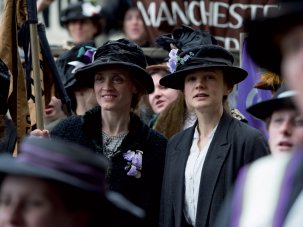It’s that time again…
The skies are grey, the carpets are red – it can only mean one thing: yep, the 59th BFI London Film Festival has begun!
And with that, so has the “3rd” BFI London Film Festival live blog, once again bringing you rolling coverage of everything* that this year’s Festival has to offer.
The next 12 days bring us more than 230 fiction and documentary features, more than 180 live action and animated shorts, and countless starry names to walk the red carpets and face the flash of paparazzi bulbs.
Take for example this little box…
It might not look like much right now, but from 17:30hrs BST this afternoon this will be your portal right into the heart of the action, when we’ll be livestreaming the red carpet arrivals for our grand Opening Night Gala event: the European premiere of Suffragette.
The short of it is that if you can’t be down on Leicester Square, in this little frame you’ll get to see… deep breath… stars Carey Mulligan, Helena Bonham Carter, Anne-Marie Duff, Meryl Streep, Brendan Gleeson, Ben Whishaw, Romola Garai, Sam West…
Plus director Sarah Gavron. And screenwriter Abi Morgan. And, very specially, Helen and Laura Pankhurst – the great granddaughter and great great granddaughter respectively – of Emmeline Pankhurst, the pioneering feminist who is so memorably portrayed by Meryl Streep in the film.
Today the live blog will be taking you right up to that moment this afternoon – then, we’ll let YouTube do the talking.
* nearly everything
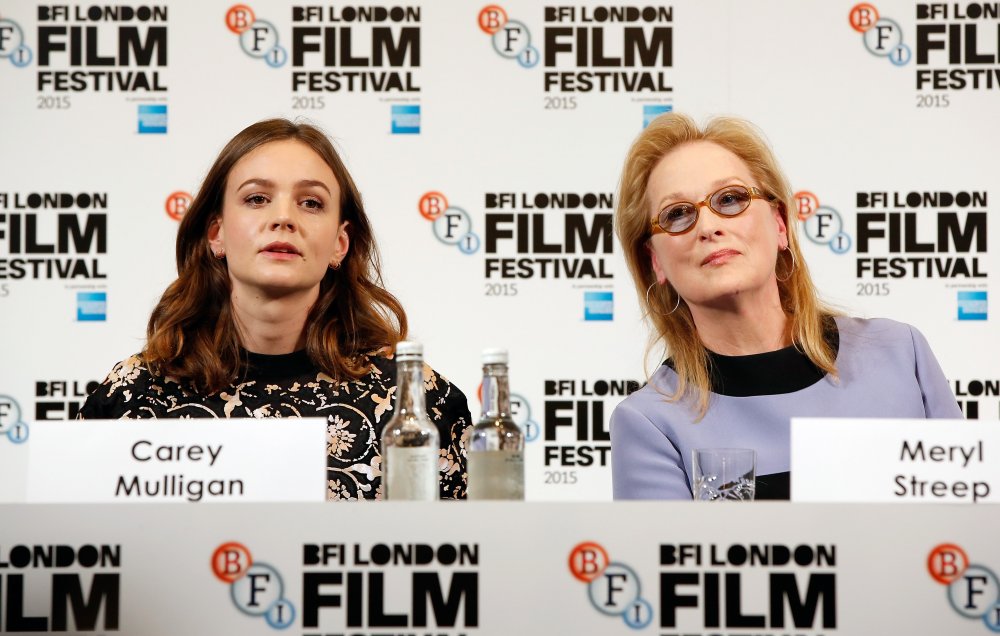
Carey Mulligan and Meryl Streep attend the Suffragette press conference during the BFI London Film Festival
These two have already been facing the press to talk Suffragette. And both have been on fine quotable form. We’ll have a full report very shortly.
Streep: “I went deep, deep, deep, deep into Rotten Tomatoes... there are 168 women”
Directed by Sarah Gavron and written by Abi Morgan (The Hour, The Iron Lady), and starring Carey Mulligan, Meryl Streep, Brendan Gleeson and Ben Whishaw, Festival opener Suffragette tells the story of one working class woman’s feminist awakening during the Women’s Suffrage movement.
This morning, Streep, Mulligan, Gavron and Morgan talked to journalists about equality, change and who they think is the modern-day Emmeline Pankhurst. Simran Hans was there to capture the highlights of today’s press conference.
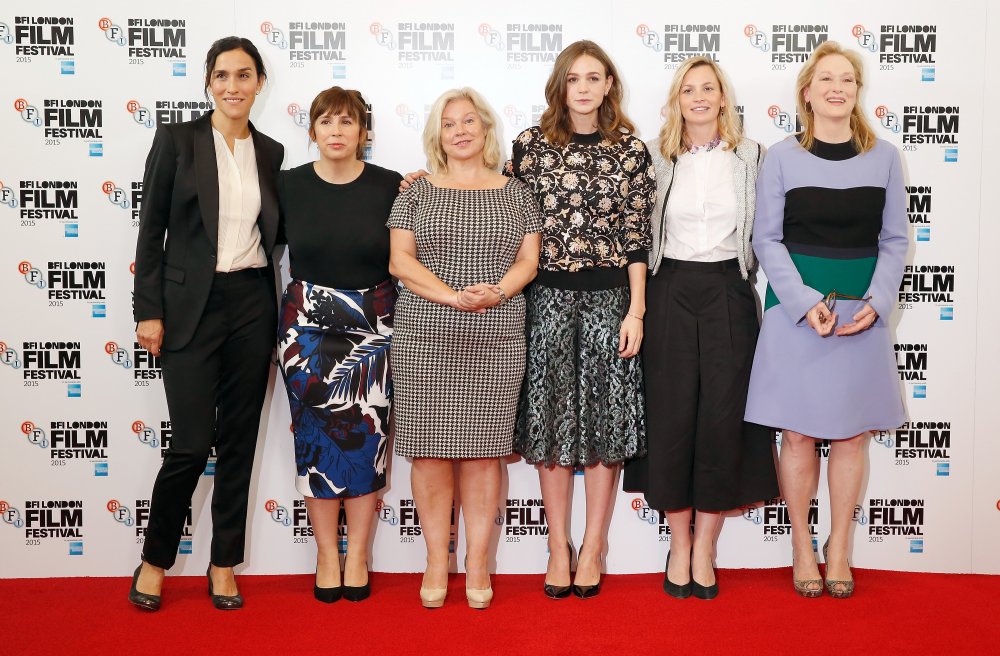
Director Sarah Gavron, scriptwriter Abi Morgan, producer Alison Owen, actress Carey Mulligan, producer Faye Ward and actress Meryl Streep attend the Suffragette photocall during the BFI London Film Festival
Director Sarah Gavron on why she’s reinstating the subject of women’s history
“It took a long time to get it on the school curriculum. I wasn’t taught anything about it. I later read a few lines at the bottom of a history book and I think it’s partly a symptom of inequality and the fact that these stories have been written out of our history.”
Meryl Streep on “the film’s great achievement”
“It’s not about women of a certain class. It’s about a working girl. I think that’s part of why we connect to the film so easily.”
Carey Mulligan on the film’s modern day resonance
“What I always loved about this film was that it didn’t feel like a documentary of a time, it felt like a film about today. I always felt its resonance both where we are; it’s a film to mark the achievement of what these women did and what they gave to us, and what they have achieved, and also to highlight where we are in the world. We still live in a society that’s sexist.”
Streep on the modern-day equivalent of Suffrage leader Emmeline Pankhurst
“Malala Yousef.”
Writer Abi Morgan on the film’s development difficulties
“Sarah [Gavron] and I have been on this project together for six years, but it’s truly been Sarah’s passion project for the last decade. Film does take time, but [Suffragette was a hard sell because] it’s fronted by not one but an ensemble of women. And they’re not being funny. It’s hard, and it’s not romantic – and I think that became a huge obstacle.”
Morgan on casting the men of Suffragette
“We kept on getting the call from agents saying ‘The part’s not big enough… for the men.’ But although [the film’s male parts] are smaller and supporting, they are complex.”
Streep on female film critics and “The Tomatometer”
“You guys have that here? I went deep, deep, deep, deep into Rotten Tomatoes and I counted how many contributors to Rotten Tomatoes… there are 168 women. There are 760 men who weigh in on the Tomatometer. The word isn’t disheartening. It’s infuriating. It isn’t fair. We need inclusion. It has to be equal. Half and half.”
Mulligan on whether she’s a “rock thrower” or a “leafleter”
“I’m so lucky to grow up in a generation where I didn’t have to fight, or a family at least, and in an environment where I’ve had a very lovely and easy upbringing. I’m incredibly privileged in that respect, so I’ve never had to fight. I don’t know if I would throw rocks for myself. I would like to think that I could throw a rock for somebody else.”
Night of the giants: Sembene vs Jia
Away from the buzz of Suffragette tonight, two top-table masters of world cinema get evening-long turns in the spotlight.
One sadly no longer with us – Senegalese pioneer Ousmane Sembène – and one so with us he’ll literally be with us in person tonight – the brilliant Chinese director Jia Zhangke.
Settling into NFT3 at BFI Southbank, viewers will be basking in brand new restorations of Sembene’s groundbreaking first two films Borom Sarret (1963) and Black Girl (1966), followed later in the evening by the new documentary portrait Sembène.
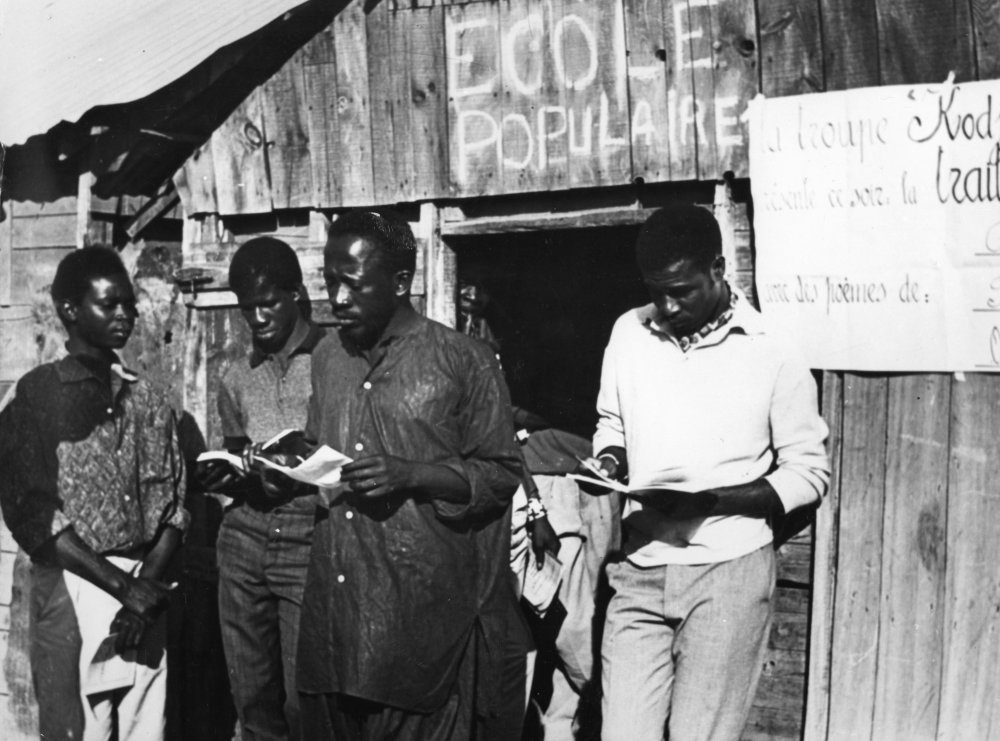
Black Girl (1966)
Next door in NFT1, meanwhile, it’s a chance to see one of the critical buzz films at Cannes this year, Jia’s era-tripping friendship drama Mountains May Depart, followed later by Walter Salles’s documentary about Jia himself: Jia Zhangke, a Guy from Fenyang.
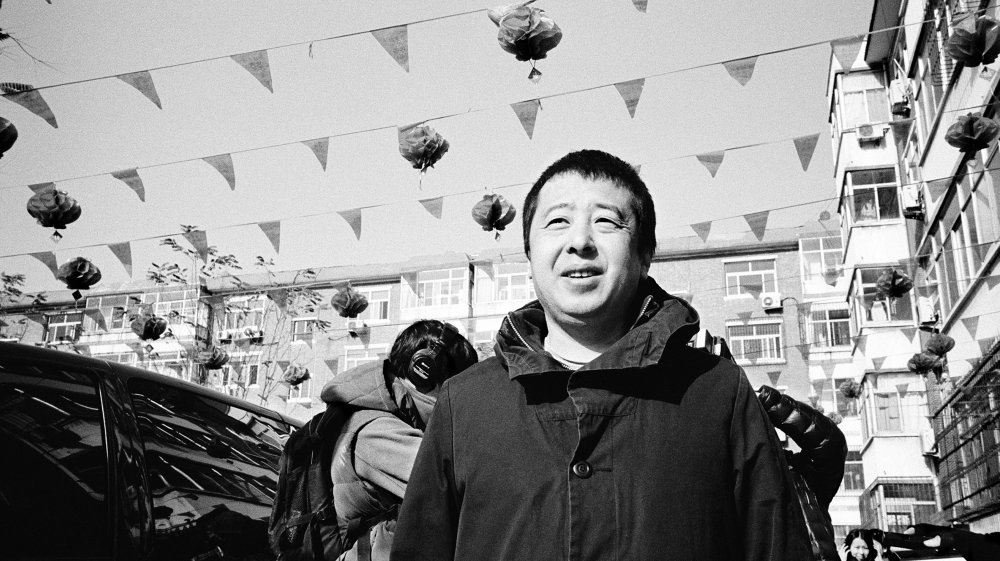
Jia Zhangke, a Guy from Fenyang (2015)
This latter film comes highly recommended by our programmer Geoff Andrew, who writes:
Characteristically opting for lucidity and subtlety rather than the flashy gimmickry that mars too many modern documentaries, Salles wisely lets Jia – one of the most interesting filmmakers at work today, and seemingly a very nice guy into the bargain – and various friends, family members and collaborators speak for themselves. Except that he does more than that, really: the simplicity is deceptive, and the judicious, generous use of clips from Jia’s movies ensure that we not only see what a great director he is but bear witness to how much China and the Chinese have changed over the last two decades. The latter is, of course, completely in keeping with Jia’s own abiding concerns.
Revealing without ever being intrusive, affectionate and admiring without becoming overly eulogistic or reverential, the film is both a lovely tribute by one artist to another, and an insightful exploration of the relationship between Jia’s life and his work.
If you need to brush up on your Jia first, we published this handy primer earlier this week:
A useful style point reminder on the title of one of this year’s most hotly anticipated premieres:
★★★★ from Guardian for Suffragette
The Guardian’s Peter Bradshaw has weighed in with his first review of Suffragette, following a screening for the press at the crack of dawn this morning.
Turns out he liked it. He even compares it to that all-time classic The Battle of Algiers.
In a four-star review, he writes:
“It is a thoroughly valuable and absorbing film, with some terrifically managed suspense sequences that might conceivably have been admired by Gillo Pontecorvo … Suffragette is a tart reminder to those who are casual about democratic gender equality that votes for women were not something that naturally evolved due to the ruling class’s innate decency; they had to be fought for. A startling list of statistics over the final credits gives the staggeringly recent appearances, and indeed non-appearances, of women’s suffrage around the world.”
Just under two hours to go till the red carpet arrivals begin!
“The first sub-Saharan films made by an African, in Africa, for Africans”
With so many hyped UK premieres making up the bulk of the LFF programme, it’s easy to overlook the gems featured in the suitably named Treasures selection – writes Matthew Thrift.
Ahead of their forthcoming release on BFI Blu-ray, two resplendently restored films by the great Senegalese filmmaker – and so-called ‘Father of African cinema’ – Ousmane Sembène receive rare big-screen outings this evening. His debut short, Borom Sarret (1963) – an exquisite 20-minute portrait of a Dakar cart driver – playing alongside his devastating 1966 masterpiece, Black Girl.
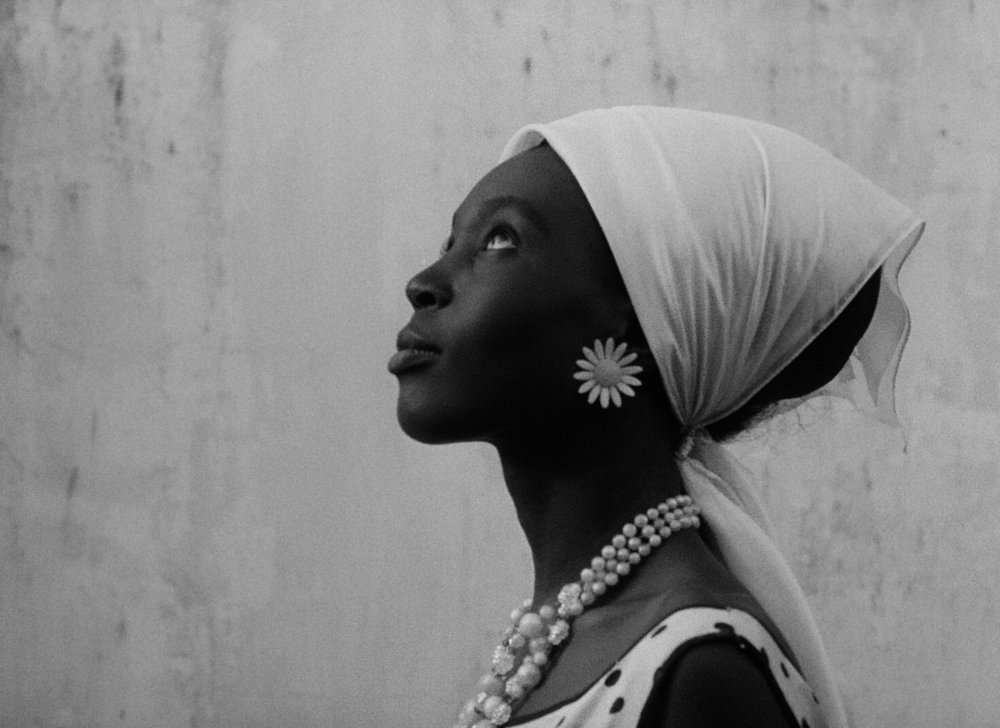
Black Girl (1966)
These were “the first sub-Saharan films made by an African, in Africa, for Africans,” says one scholar in the excellent documentary Sembene!, which also premieres tonight. ”[They] invented a new language to represent black people.”
An ideal companion piece to the two films, Sembene! avoids hagiography – not least in its recounting of the director’s diversion of a fund to help young filmmakers into his own feature, Camp de Thiaroye (1988) – serving up a focused biographical introduction to the man and his films.
Here’s hoping that the documentary’s final title card detailing the ongoing project to restore his remaining films, sees them featured in upcoming Treasures programmes in years to come. From the evidence presented in Sembene!, they’ll be as unmissable an event as those playing tonight.
Exclusive behind the scenes shots from Suffragette
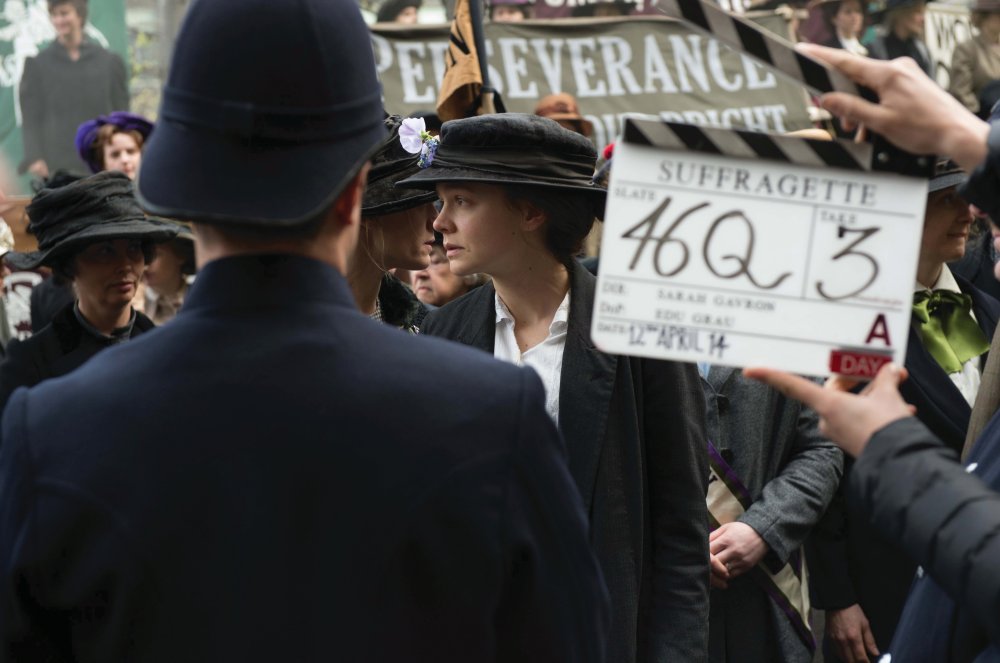
Carey Mulligan on the set of Suffragette (2015)
The time is nearly now. It’s less than half an hour until Carey Mulligan, Meryl Streep, Ben Whishaw and the cast and crew of Suffragette begin arriving on the red carpet for tonight’s Opening Night gala.
Just time to enjoy these appetite-whetting shots taken on location in London during the filming…
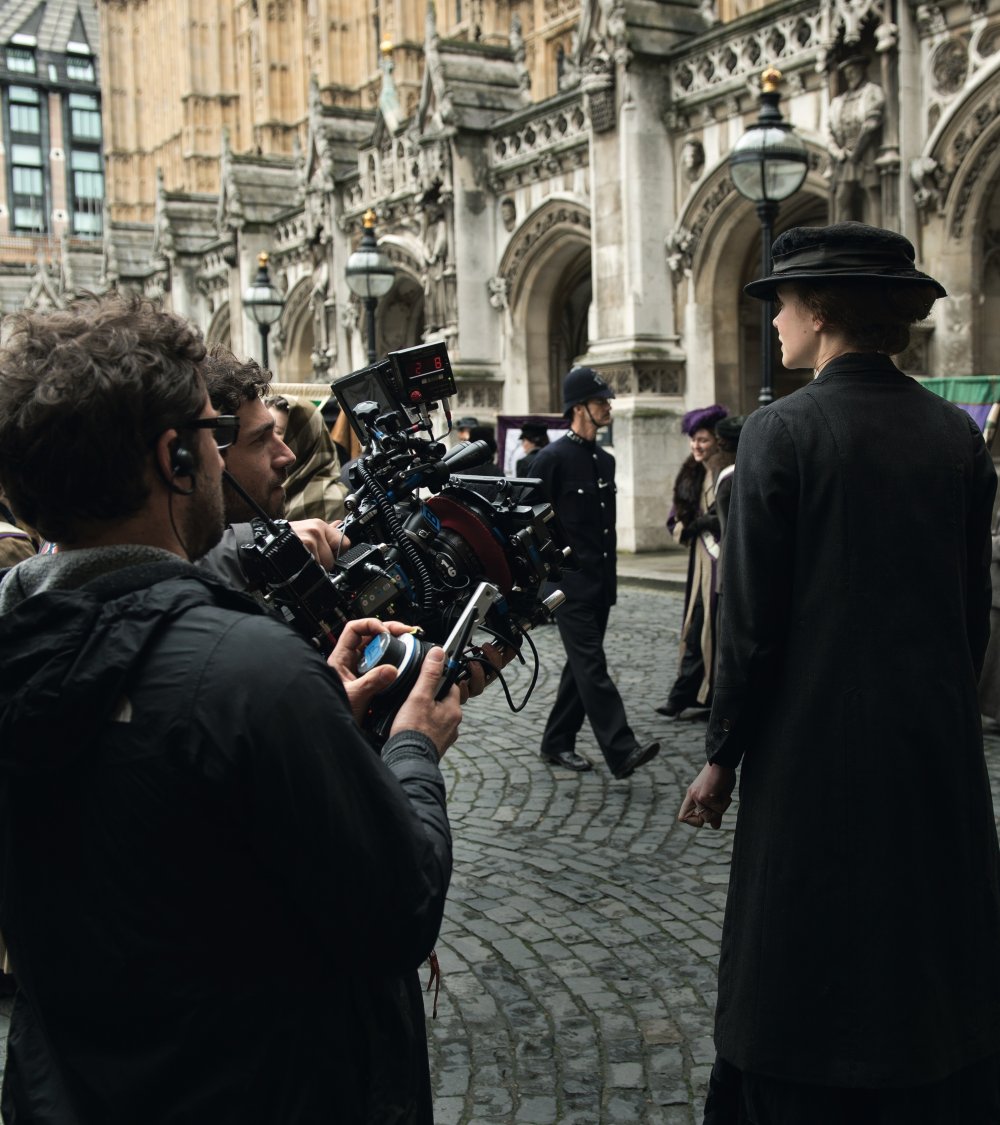
Carey Mulligan on the set of Suffragette, House of Commons, Westminster, London
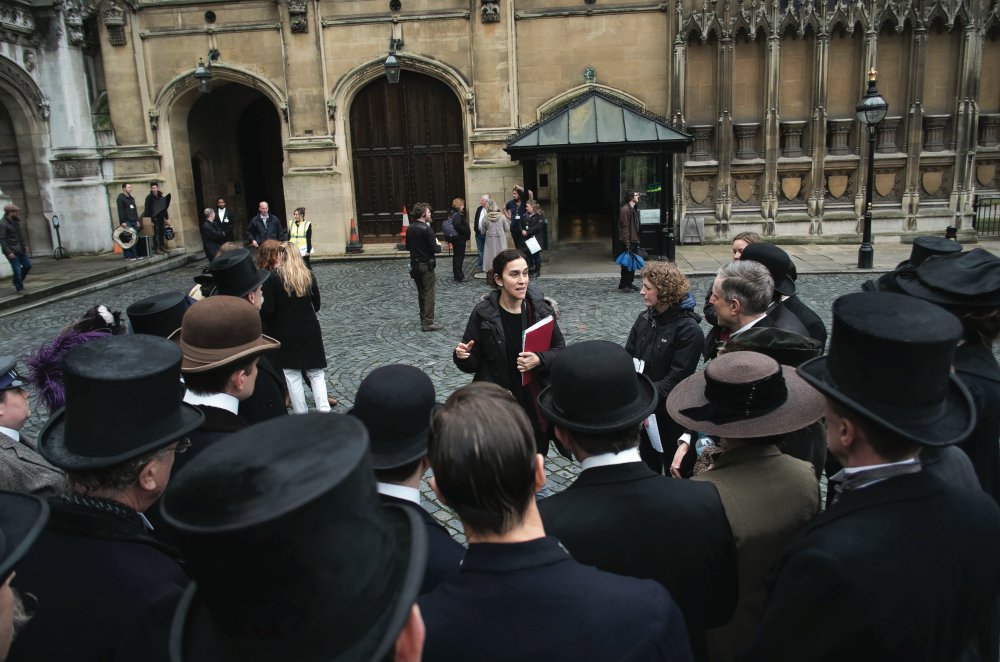
Director Sarah Gavron on location
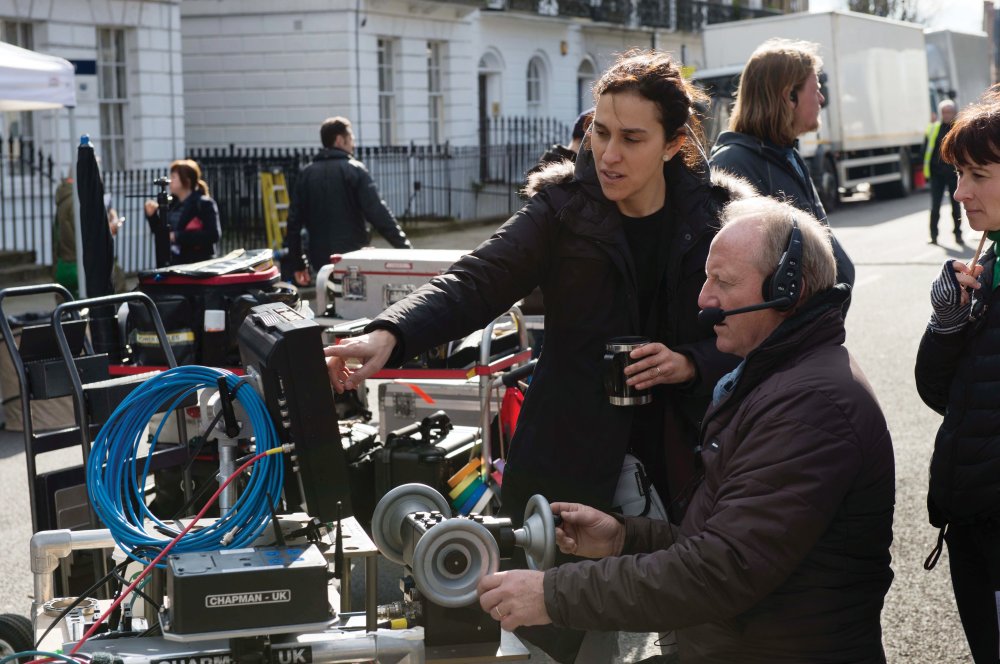
Sarah Gavron on set with Steadicam operator Peter Robertson
You can read more about the making of the film in our recent interview with the team:
The red carpets are being rolled out. There are seven minutes till our livestream from Leicester Square begins!
Suffragette red carpet livestream
Watch all the action on the red carpet right here in our livestream from the Suffragette premiere.
Here’s who to look out for:
Carey Mulligan
Helena Bonham Carter
Sarah Gavron (director)
Anne-Marie Duff
Meryl Streep
Brendan Gleeson
Romola Garai
Ben Whishaw
Sam West
Abi Morgan (screenwriter)
Faye Ward and Alison Owen (producers)
Hannah Farrell (co-producer)
Helen Pankhurst (great granddaughter of Emmeline Pankhurst)
Laura Pankhurst (great great granddaughter of Emmeline Pankhurst)
Suffragette: the best pics from the red carpet
The stars were out in force for the Opening Night Gala screening of Suffragette. Here are some of the choicest snaps from the red carpet…
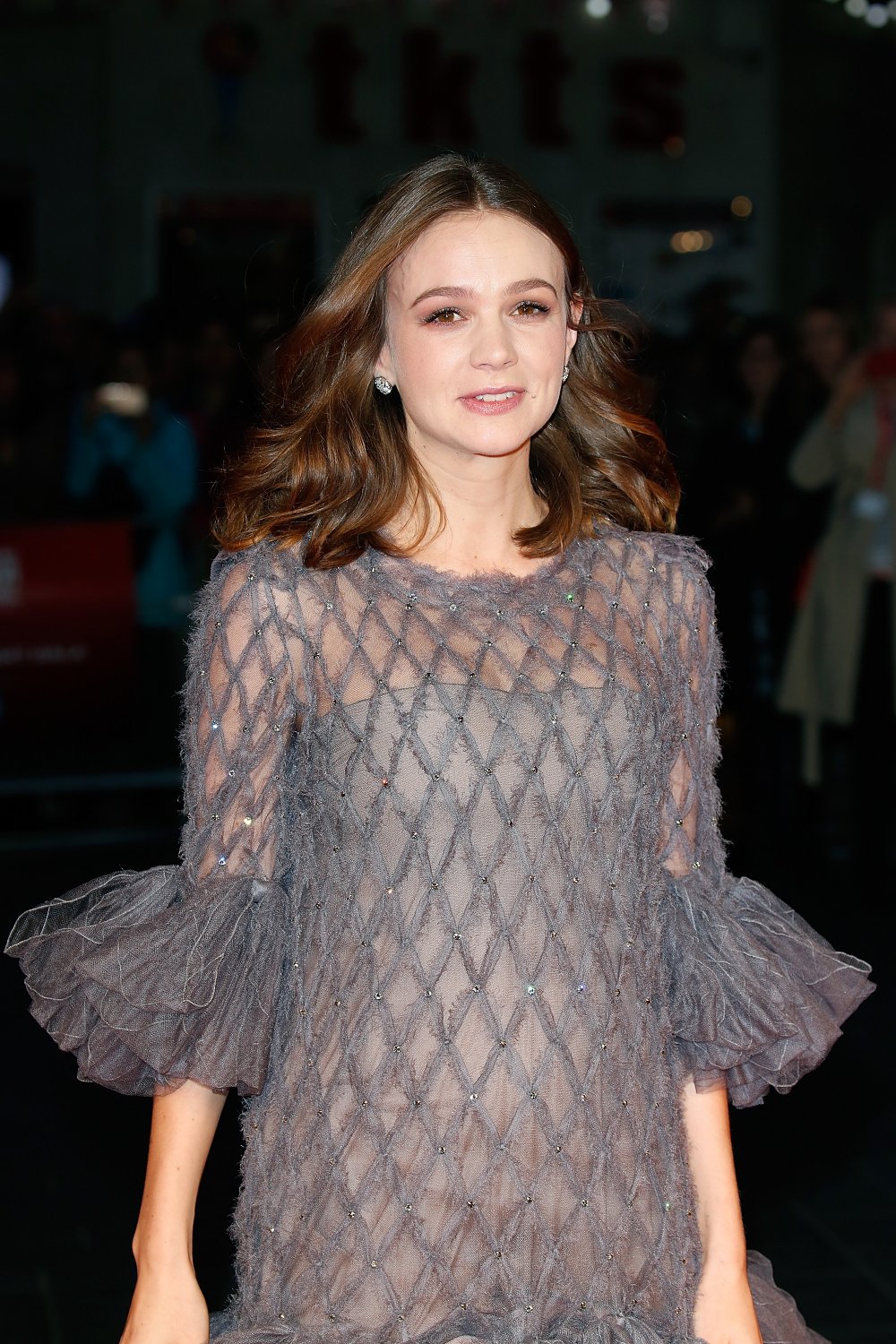
Carey Mulligan
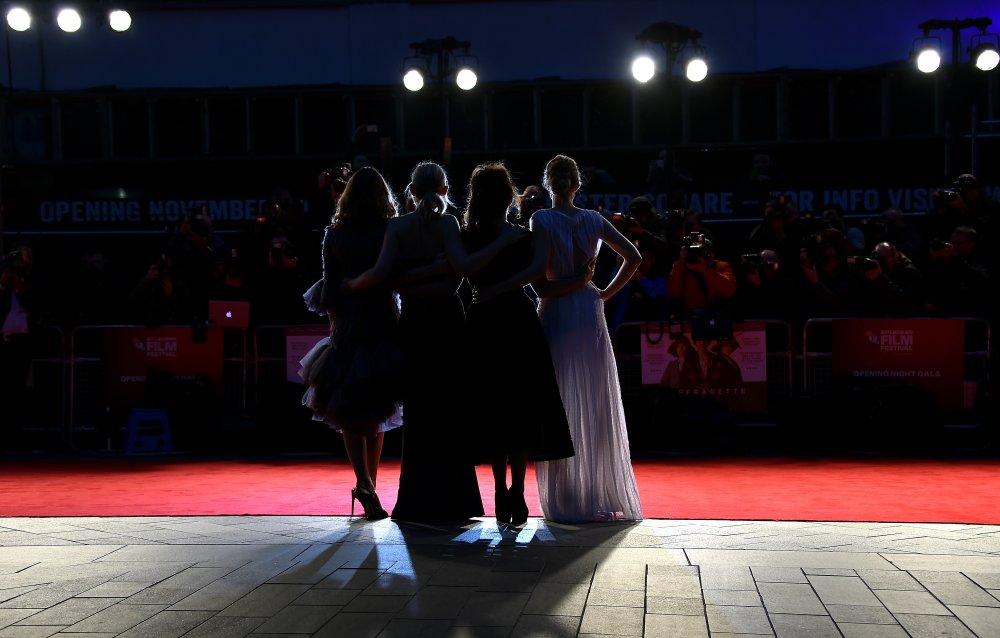
Carey Mulligan, Anne Marie Duff, Helena Bonham Carter and Romola Garai

Meryl Streep
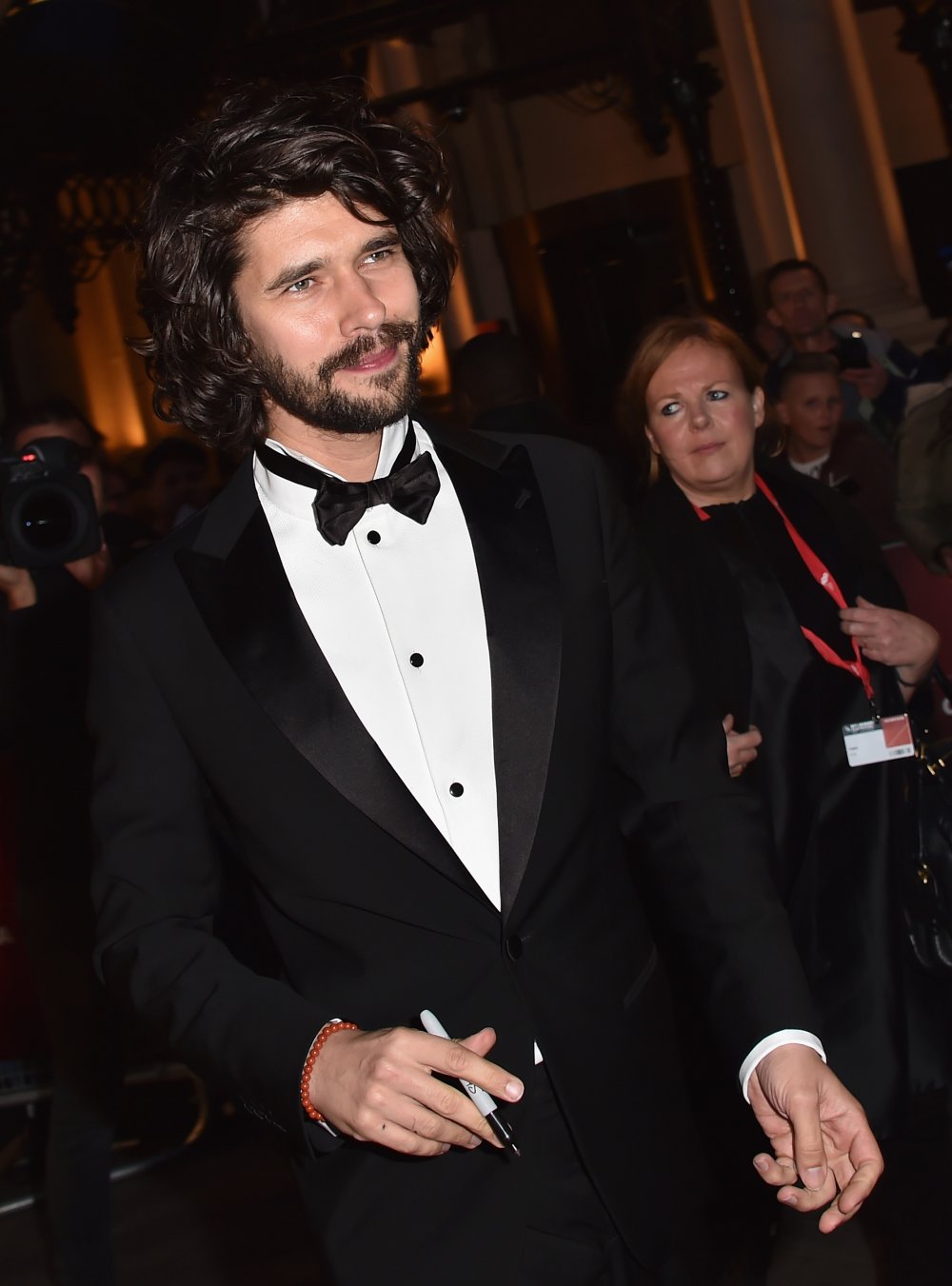
Ben Whishaw
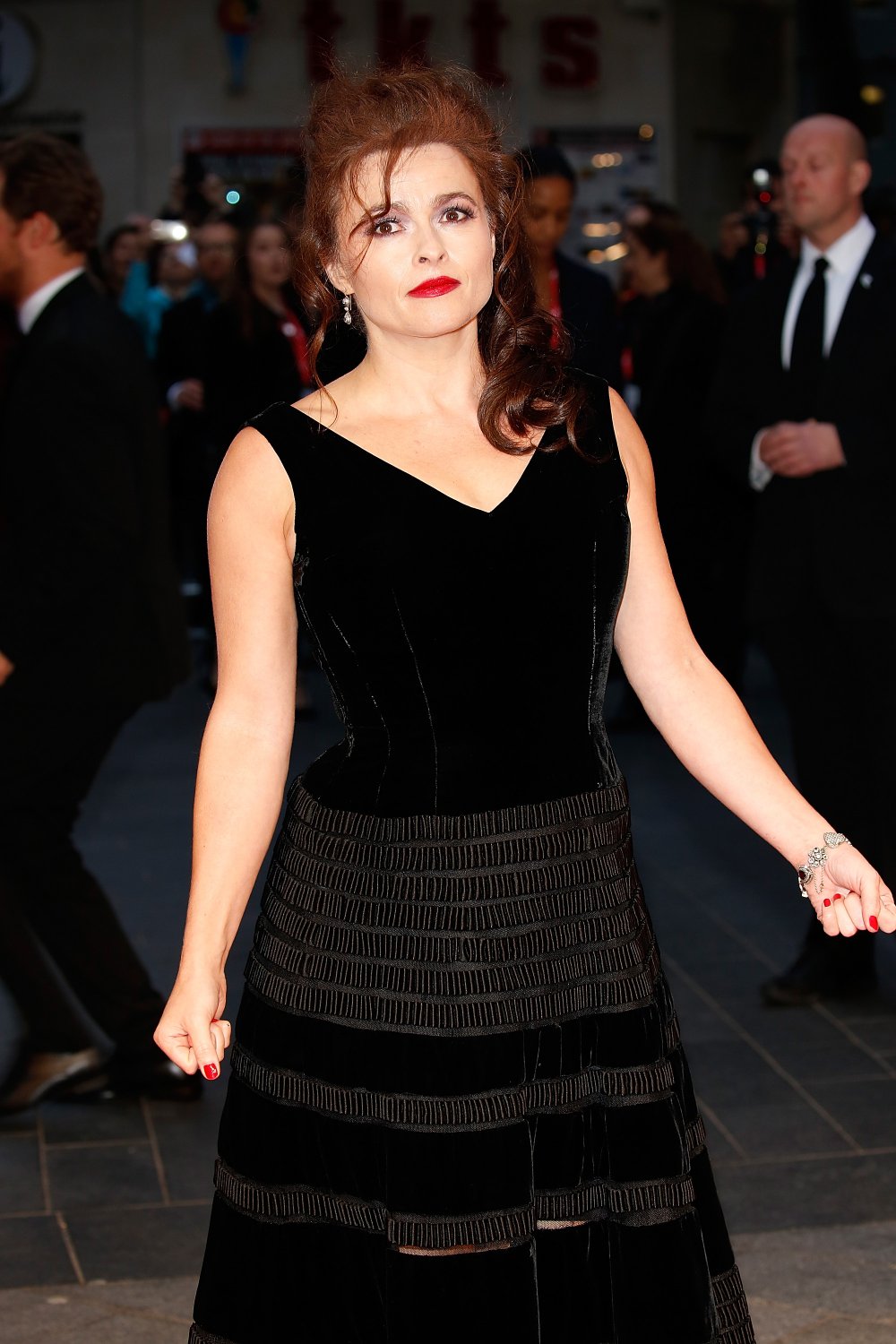
Helena Bonham Carter
And this is what Ben Whishaw had to say about working with Carey Mulligan…
How was Day 1 for you?
If Twitter is anything to go by, Suffragette went down a storm, with lots of buzz for the performances and a vital story powerfully told.
The spirit of protest was also alive and well down at Leicester Square, when the red carpet was invaded by activists from the group Sisters Uncut, demonstrating for greater support of victims of domestic violence. The protesters chanted “cuts kill” and “dead women can’t vote”, also setting off smoke flares and laying down across the red carpet. Speaking to Sky News, star Helena Bonham Carter called the incident the “perfect” response to Suffragette, saying: “I’m glad our film has done something. That’s exactly what it’s there for”.
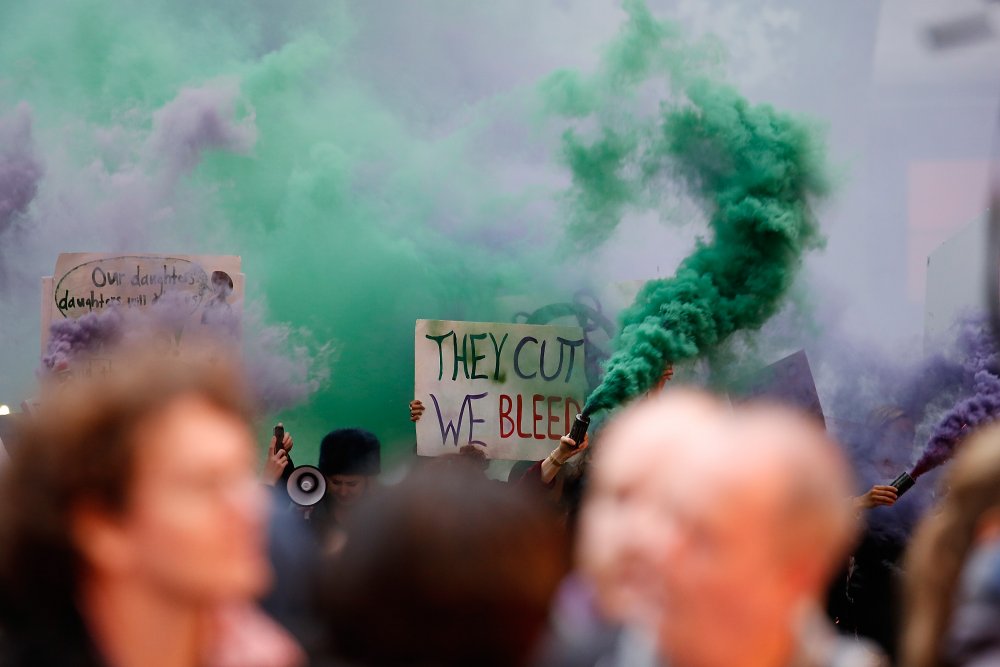
Activists protesting before the Suffragette premiere
Devil in the detail
Meanwhile, across town at the ICA, Christina Newland enjoyed Lucifer, a formally inventive three-act fable…
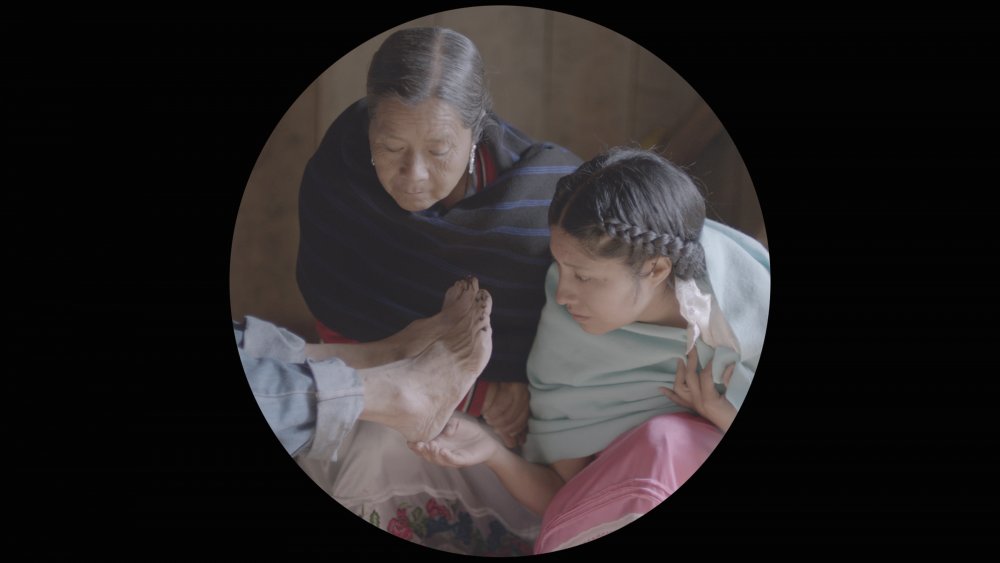
Lucifer (2015)
Belgian director Gust Van den Berghe’s Lucifer sees the devil himself visiting malice upon a traditional Mexican village. Calling himself an ‘angel’ and appearing to heal the sick, a stranger arrives in the form of a crooked-featured young man with a coolly seductive manner (Gabino Rodriguez).
But the film unfurls in none of the expected ways; it’s freewheeling, with the quotidian subtly transformed into the ominous. Lucifer is also filmed from within a wholly circular frame — Van den Berghe actually developed this process (called ‘Tondoscope’) using a device made up of convex mirrors. Present after the screening for a Q&A, the director talked about the symbolic importance of the circle in almost every ancient religion or culture, and of wanting to translate this idea into a cinematographic language.
An opening shot utilises the iris-like frame well, gazing upward from the inside of a crater — and Lucifer adopts this playfully literal interpretation of heaven and hell throughout. Villagers even build the tallest tower possible to reach the heavens and bring their ‘angel’ back to them. Van den Bergh’s film is an admirably peculiar experiment; asked whether the unique filming process was ever restrictive, he says, “The moment you’re limited […] the solution is creativity.”
Day 2’s big tickets
Day 2 is when things really begin to hot up, when the films start coming thick and fast from elevenses time onwards and even the most determined festival-goer will struggle to keep on top of their FOMO.
Today we’ve got Jia Zhangke and Walter Salles going head to head in an on-stage Screen Talk.
The Official Competition gets under way with its first contender, Cary Fukunaga’s gut-wrenching child-soldier drama Beasts of No Nation.
The headliner of our Thrill section is Deepa Mehta’s Beeba Boys, a high-octane gangster thriller set amid Vancouver’s Sikh community, while Russell Brand portrait Brand: A Second Coming plays as our Laugh Gala in a neighbouring screen at VUE West End.
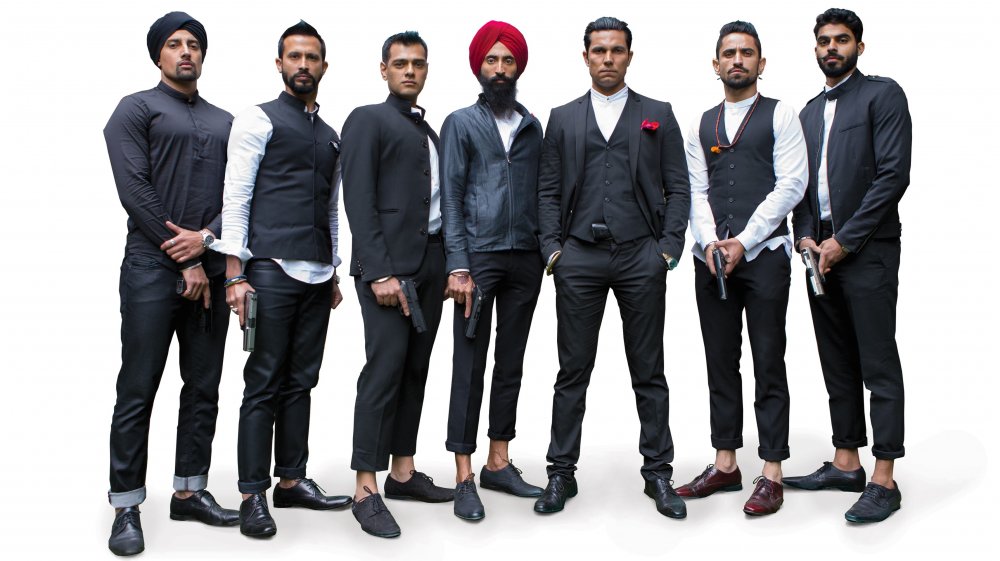
Beeba Boys (2015)
Just now, however, critics have spilled out of an early morning preview of tonight’s biggest event, our Accenture Gala screening of Trumbo, featuring Breaking Bad’s Bryan Cranston as blacklisted 1940s screenwriter Dalton Trumbo. Let’s see what Twitter made of it:
‘Bring a cushion’ bladder-busters at LFF
Just because there’s no new film from Lav Diaz at this year’s LFF, doesn’t mean there aren’t some serious contenders for his crown as king of the Festival’s unofficial ‘Bring a Cushion’ strand, writes Matthew Thrift.
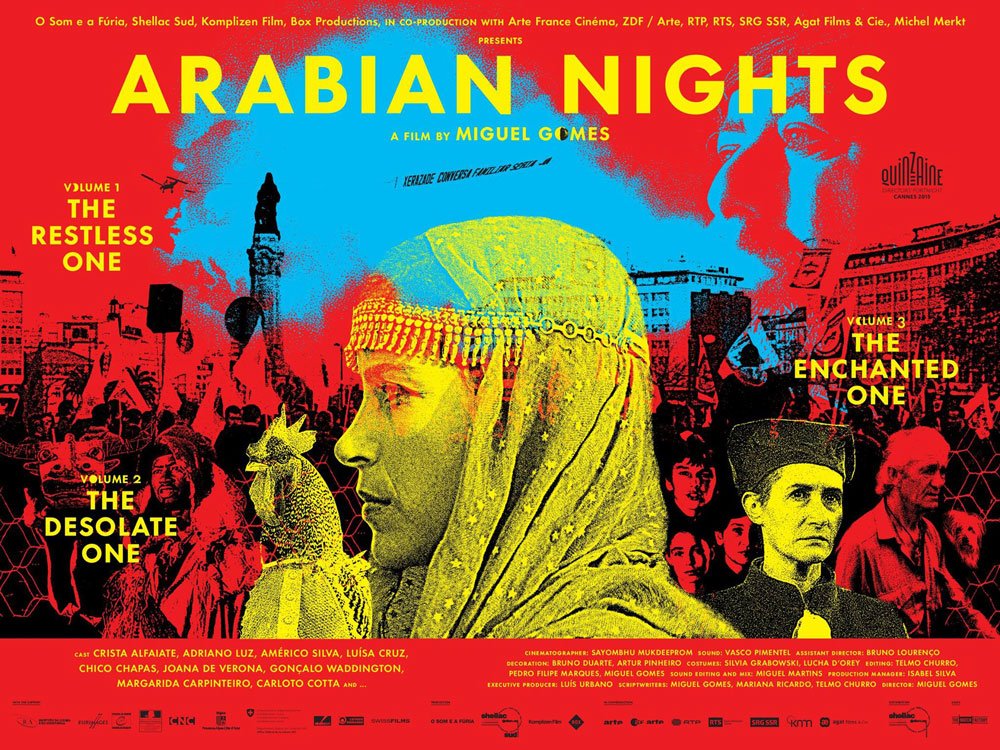
Arabian Nights (As Mil e uma Noites, 2015)
By the middle of next week, for those seeing multiple films each day, there will be no sweeter programme information than ‘Running Time: 75 mins.’ But we’re not here to talk about that. This post is strictly for the festival hardcore, for those that actively seek out the five-hour running times as an endurance-test of their cinephile mettle.
Of course, bladder-busting durational girth isn’t automatically synonymous with quality. But if you’ve somehow managed to convince a friend (or your boss) that 300-odd minutes spent in NFT3 is the best use of a Thursday morning and afternoon, you’ll be pleased to know that this year’s long ’uns really do represent some of the best of the fest.
Clocking in at a mere 190 minutes, In Jackson Heights – the new film from US documentary maestro, Frederick Wiseman – could almost be considered a short when held up against the rest of this list (and some of the director’s earlier behemoths). His deceptively straightforward, unobtrusive style will be familiar to those who caught his recent LFF triumphs, National Gallery (2014) and At Berkeley (2013), as he turns his eye to the challenges of community via the multicultural microcosm of the eponymous New York City neighbourhood.
It’s not the only lengthy doc: Marcel Ophüls’ monumental (and rarely-seen) 1976 film The Memory of Justice tackles questions of national guilt and identity in the aftermath of the Nuremberg trials. Its epic moral interrogation goes on to cast a much wider net as it progresses through its 278 minutes, right up to the (then-contemporary) US involvement in Vietnam. An essential film, and a great companion piece to Claude Lanzmann’s colossal Shoah.
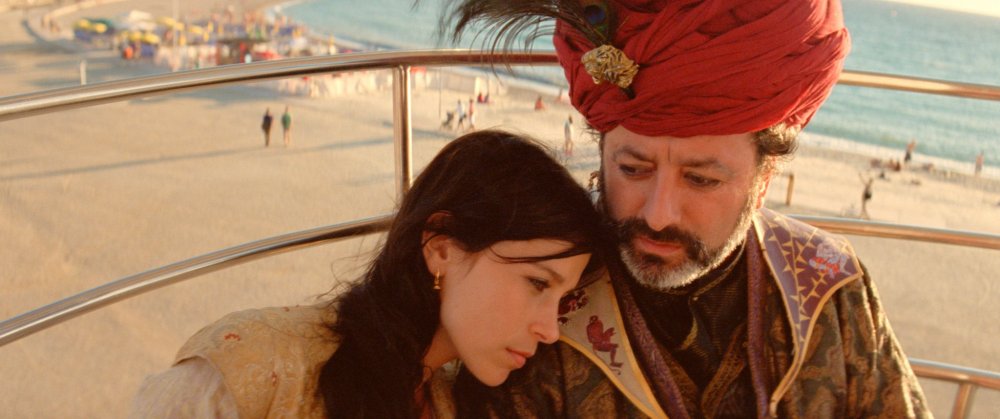
Arabian Nights (As Mil e Uma Noites, 2015)
Already a hot ticket (despite its 382 minutes), Miguel Gomes’s three-part Arabian Nights, a sprawling state-of-the-nation address is undoubtedly one of the year’s best. An endlessly surprising, beguiling – even infuriating – series of cinematic coups that encompass myriad formal devices. You’ll not see anything else like it this year – or likely next.
The best under-the-radar tip comes in the form of Ryusuke Hamaguchi’s staggeringly good Happy Hour. Its 317-minute running time may sound intimidating, but viewing it proves a breeze. It’s stunningly written and performed by its four female leads – describing it as ‘Sex and the City as directed by Hirokazu Kore-eda’ may serve as a tweetable hook, but does its piercing complexities nothing but a disservice.
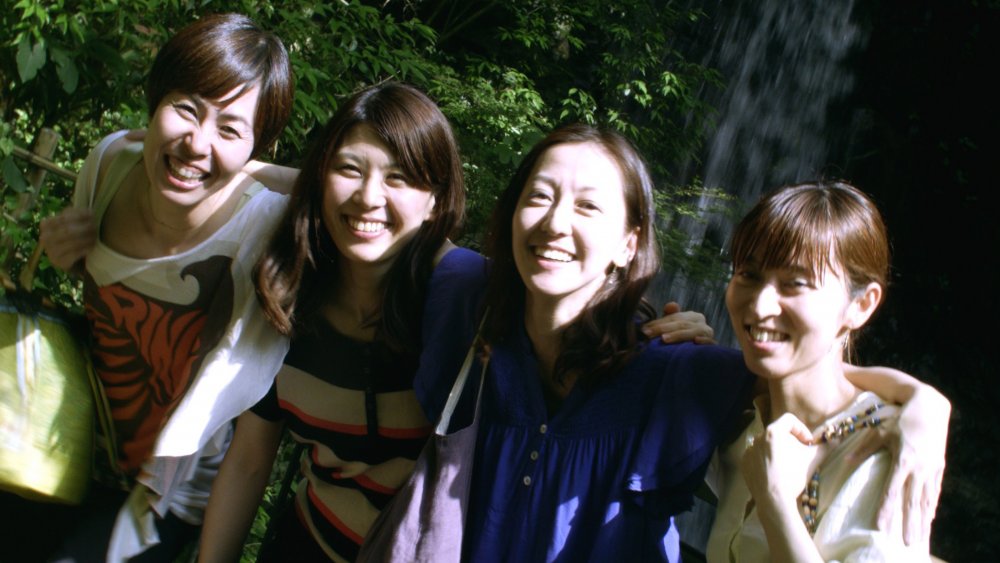
Happy Hour (2015)
Finally though, when it comes to durational endurance-tests, all of the above pale in comparison to Kevin Jerome Everson’s Experimenta doc, Park Lanes. Designed to reflect an entire working day at an Ohio bowling-equipment factory, the film lasts exactly eight hours. That’s right, eight hours.
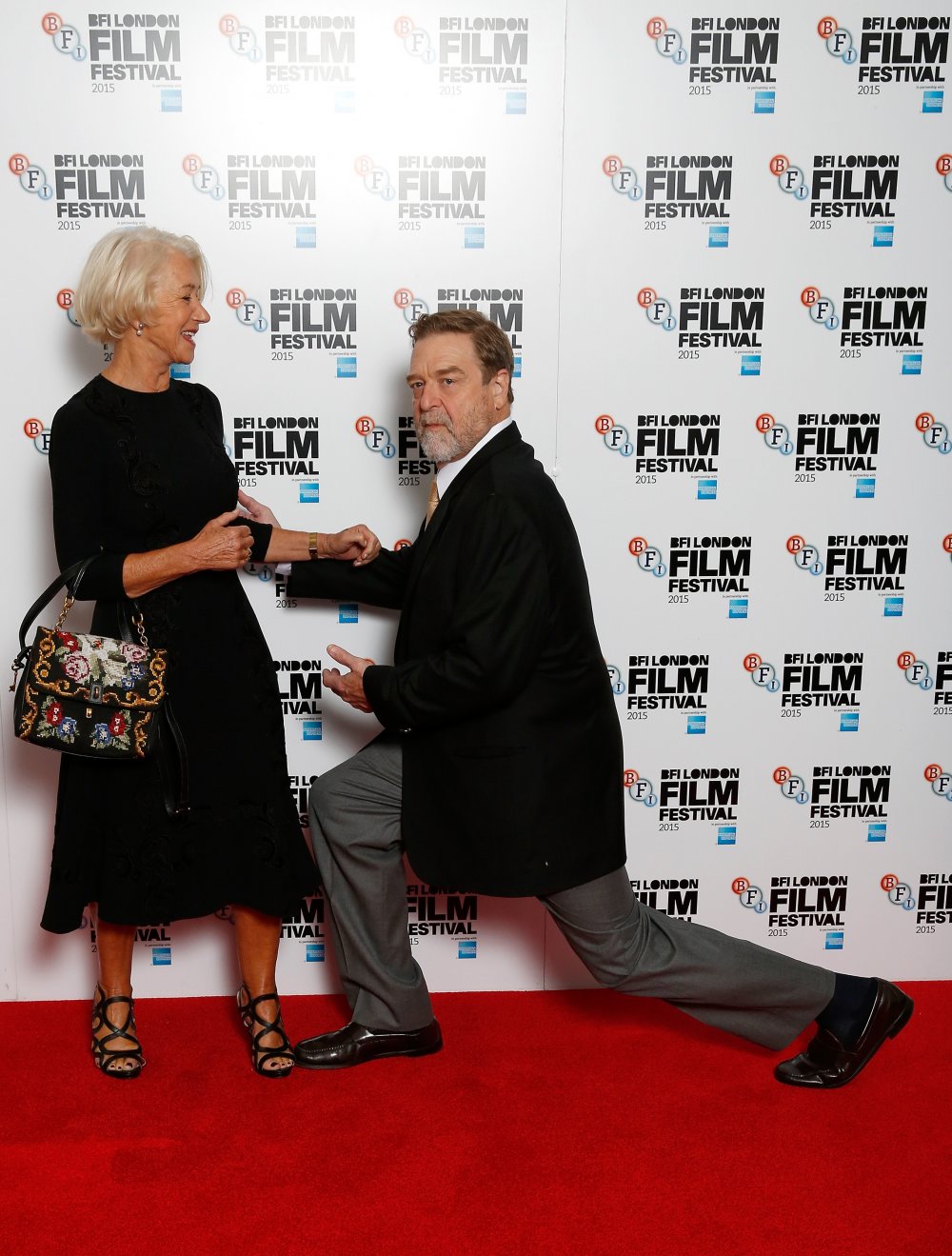
Actors Helen Mirren and John Goodman attend the Trumbo photocall during the BFI London Film Festival
Here’s John Goodman down on his knees for his co-star Helen Mirren at the Trumbo press conference just now.
We’ll have a full report here soon…
Lunchtime reading alert!
Ahead of next week’s lavish 4K digital restoration screening of the multi-Oscar-winning drama A Man for All Seasons, we’ve tripped back through the corridors of film history to compile our ultra-definitive list of
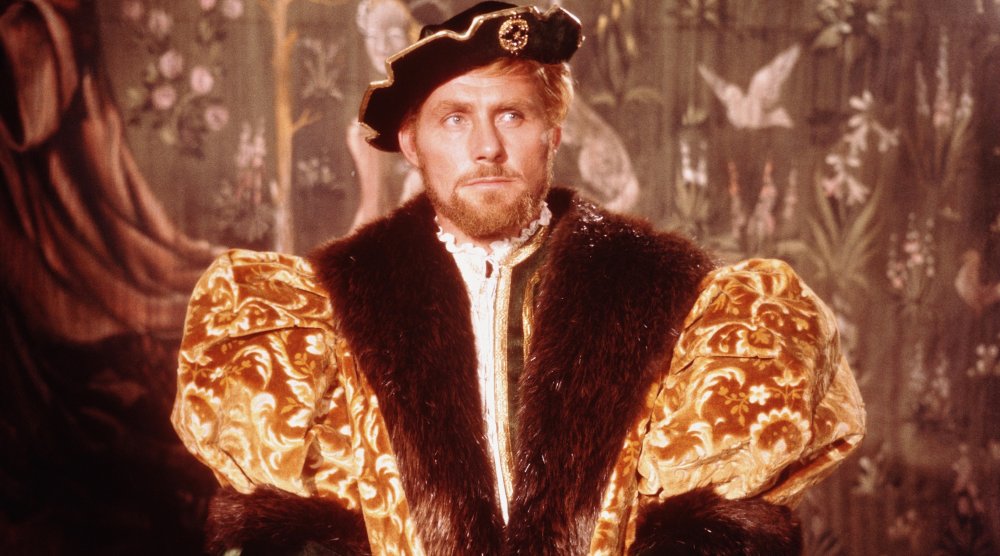
A Man for All Seasons (1966)
Here’s Geena Davis talking briefly about gender and media this morning…
An industry symposium addressing gender equality in film has just this minute wrapped up in NFT1 at BFI Southbank. Geena was there. Shami Chakrabarti, Bonnie Greer and Suffragette screenwriter Abi Morgan too. Not to mention plenty of other industry top brass.
Luckily, we had cameras and a reporter on the ground, so we’ll bring you some highlights this afternoon.
We’re loving this shot of Jia Zhangke, Naomi Kawase and Apichatpong Weerasethakul posing together, courtesy of Mubi UK.
That’s three of the world’s finest right there.
Jia’s in town for tonight’s Screen Talk and the UK premiere of his latest, Mountains May Depart. Kawase’s here with An (“perhaps her best to date” – Geoff Andrew). And Apichatpong (Palme d’Or winner for Uncle Boonmee) has his film in competition: Cemetery of Splendor.
We hope they’re enjoying the LFF so far.
Bryan Cranston: ‘There’s only four people I wouldn’t work with’
Trumbo is a slick, witty and timely account of the fascinating career of blacklisted Hollywood screenwriter Dalton Trumbo, writes Paul O’Callaghan.
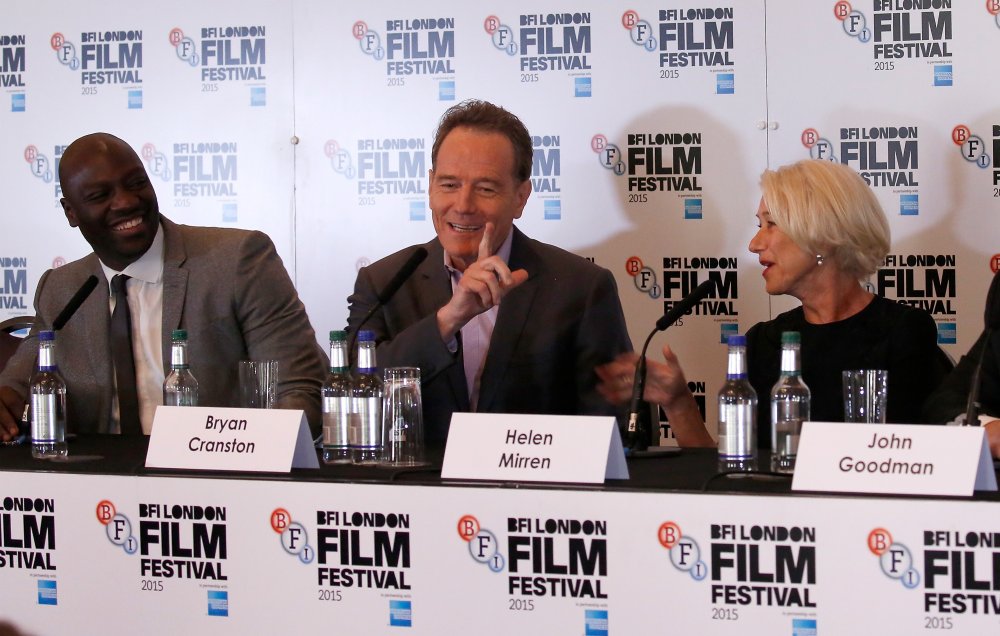
Actors Adewale Akinnuoye-Agbaje, Bryan Cranston and Helen Mirren attend the Trumbo press conference during the BFI London Film Festival
Bryan Cranston delivers a grandstanding performance as the titular wordsmith, whose life begins to unravel after his left-leaning views incur the wrath of the notorious House Un-American Activities Committee (HUAC).
Ahead of tonight’s European premiere, Cranston and co-stars Helen Mirren, John Goodman and Adewale Akinnuoye-Agbaje assembled before the press to talk about the dark period of Hollywood history that Trumbo depicts, the lightness of touch brought to the film by director Jay Roach, and why this period biopic has plenty to say about today’s society and political climate.
On Hollywood’s relationship with politics
Bryan Cranston: “I think Hollywood has always been very political. Hollywood is fascinated with politics and vice-versa. But I think it’s circumstantial that in one given year there might be more political film than in others. I don’t think there’s an overarching agenda, which speaks to the whole story of Trumbo. HUAC thought there was collusion in Hollywood to propagate communism through film, which was a ridiculous notion.”
On working with Jay Roach, best known for comedies like Austin Powers and Meet the Parents
Helen Mirren: “It certainly wasn’t shot as a comedy. We did a read-through months before shooting, and the approach wasn’t comedic at all. But I think that whenever you have a director with an inbuilt sense of humour, as Jay does, it just naturally comes out. He can see the humour in normal everyday things. I think that’s the best kind of humour – not built around jokes, but around the absurdity of human behaviour.”
On whether there’s still ‘blacklisting’ in Hollywood
Bryan Cranston: “I think there’s some self-imposed blacklisting in Hollywood. I would say that Mel Gibson has done that. If you have skeletons coming out of your closet that expose you to abnormal or criminal behaviour, you can place yourself on a blacklist, because people don’t want to work with you. Years ago I was up for a film, and they said ‘I think they’re going to get O.J. Simpson to be in the movie too’, and I thought ‘no, no, no!’ And as actors started hearing about that, they started dropping out, and the movie fell apart. I hope there aren’t any political blacklists, I hope there isn’t a sexual orientation blacklist – I think we’re moving out of that as a society, and that’s a great thing. For me, there’s probably only four people in this world I wouldn’t want to work with after 35 years”
Helen Mirren: “And they’re all sitting at this table!”
On US indie James White
About to go into its second of three screenings is new US indie film James White. Our correspondent Ben Nicholson has already seen it and found much to admire…
Watch the James White trailer
The camera never strays far from the eponymous protagonist in Josh Mond’s feature debut, James White. Played by Girls alumnus Christopher Abbott, he is a picture of privileged contradiction – both blown about in the prevailing wind, and anchored by a desire to remain precisely where he is. That is, in a world of arrested development and middle-class comfort, which is threatened by the recent death of his father and his mother’s (Cynthia Nixon) sharply progressing cancer.
Their relationship, intimately captured on screen and insightfully drawn throughout the narrative, is the film’s beating heart. Where early exchanges may suggest a recognisably naval-gazing New Yorker, the muted personal drama that emerges is far more effective. Often focusing on Abbott’s face in unforgiving close-up, there is nowhere for James’s raw emotion to hide. It may not quite land as forcefully as it could, but the two leads are compelling.
Watch Jia Zhangke on stage
This just in: our video from last night’s Q&A with Chinese master filmmaker Jia Zhangke, following a screening of his latest film Mountains May Depart.
The Guardian’s critic Peter Bradshaw called Jia’s latest “a mysterious and in its way staggeringly ambitious piece of work from a film-maker whose creativity is evolving before our eyes”.
Which bodes well for the audience who are sitting in VUE5 right now waiting for its second screening to begin in 9 minutes… oh to be there!
And, on the subject of staggering pieces of work, what about this poster?

Mountains May Depart (2015) poster
From the archives: 13th London Film Festival poster
Best not stare at this too long, but this hypnotic design was the poster for the 13th London Film Festival in 1969, which opened with Eric Rohmer’s My Night with Maud and closed with Boy (Nagisa Oshima) and Sweet Hunters (Ruy Guerra).
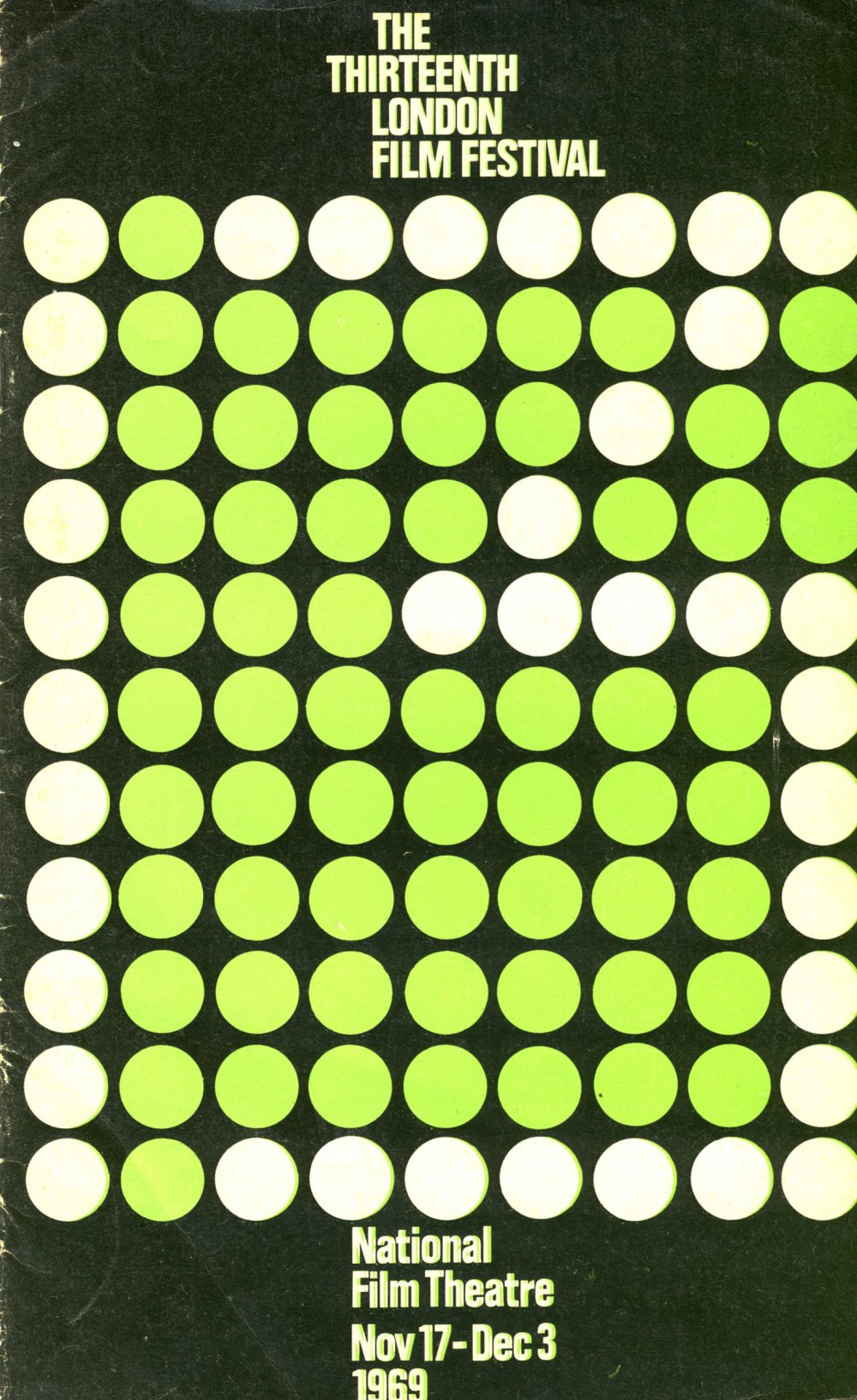
The 13th London Film Festival poster
The Corpse of Anna Fritz – a gruesome cadaver thriller
“I never think of this film as a horror movie; for me it’s a drama,” said director Hèctor Hernández Vicens when asked about his approach to genre at the Q&A last night following his new film, The Corpse of Anna Fritz.
Many will find it hard to agree after experiencing this deliciously dark and gut-wrenchingly taut thriller, centred on the reprehensible morality of three young guys and the cadaver of a beautiful actress laid before them in a morgue, writes Ben Nicholson.
Vicens went on to confirm that he took inspiration from a newspaper story about an orderly interfering with bodies, before his fictional script snakes off into surprising twists and unashamedly distasteful territory that provided gruesome counter-programming to the upstanding Suffragette which was opening the festival across the city at the same time. Wearing a grin, actor Albert Carbó, who plays the necrophiliac orderly Pau – wonderfully described by Little White Lies’ Sophie Monks Kaufman as a “squirmier creature” – gamely tried to defend his character to a clearly unconvinced audience.
He’s one of the few ambiguous elements in a film mostly painted in broad but excruciating strokes. The tension is ratcheted by the collisions between a minimal cast and within a restricted location. With a chuckle, Vicens proclaimed his bloody denouement as “a happy ending.” Attendees will need to perform their own postmortem on that assertion.
There’s a second chance to catch The Corpse of Anna Fritz at 18:30 at RICH MIX tonight.
Day 2 on Twitter
Twitter is your friend in keeping track of what’s hot this festival. Let’s have a look at what people have been watching this afternoon, and whether they were worth bunking work for…
LFF holiday inspiration
We’ll be welcoming Bryan Cranston, Helen Mirren, John Goodman and Adewale Akinnuoye-Agbaje to Leicester Square very shortly. Trumbo’s the big one tonight.
To while away the wait, here’s a light bit of festival reading, courtesy of the Telegraph’s Travel section: LFF films that will inspire you to travel.
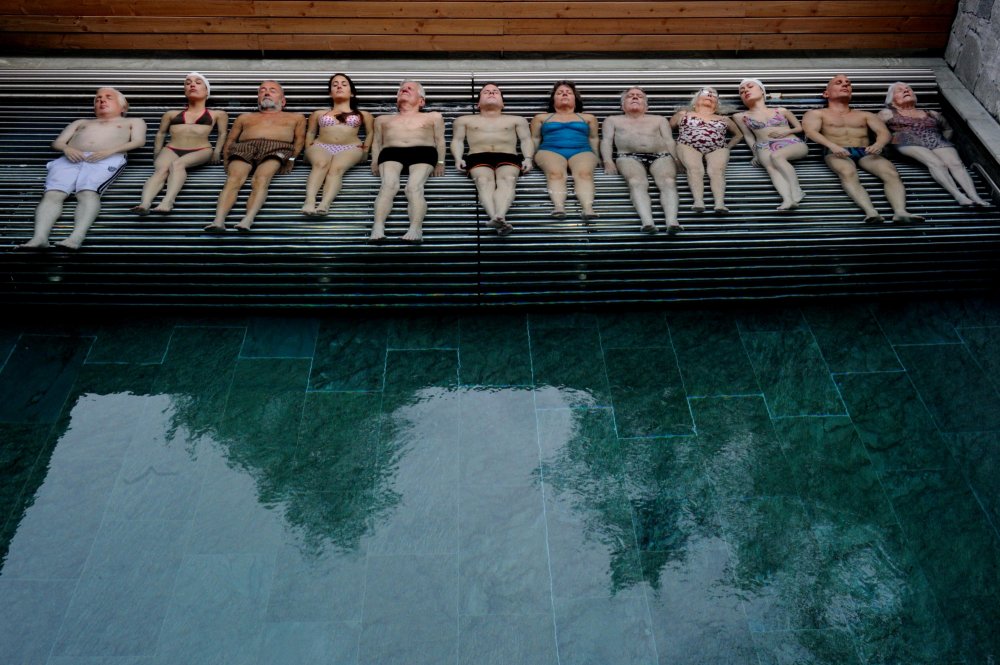
Youth (2015)
It includes a look at Paolo Sorrentino’s Youth, set at a spa in the Swiss Alps; Sailing a Sinking Sea, a documentary portrait of the people of the Mergui Archipelago of Myanmar and Thailand; and Lamb, the Ethiopian film that played Cannes this year. Your cinema-seat travels start here…
Big announcement!
Terrific first pro shot from the red carpet for Trumbo.
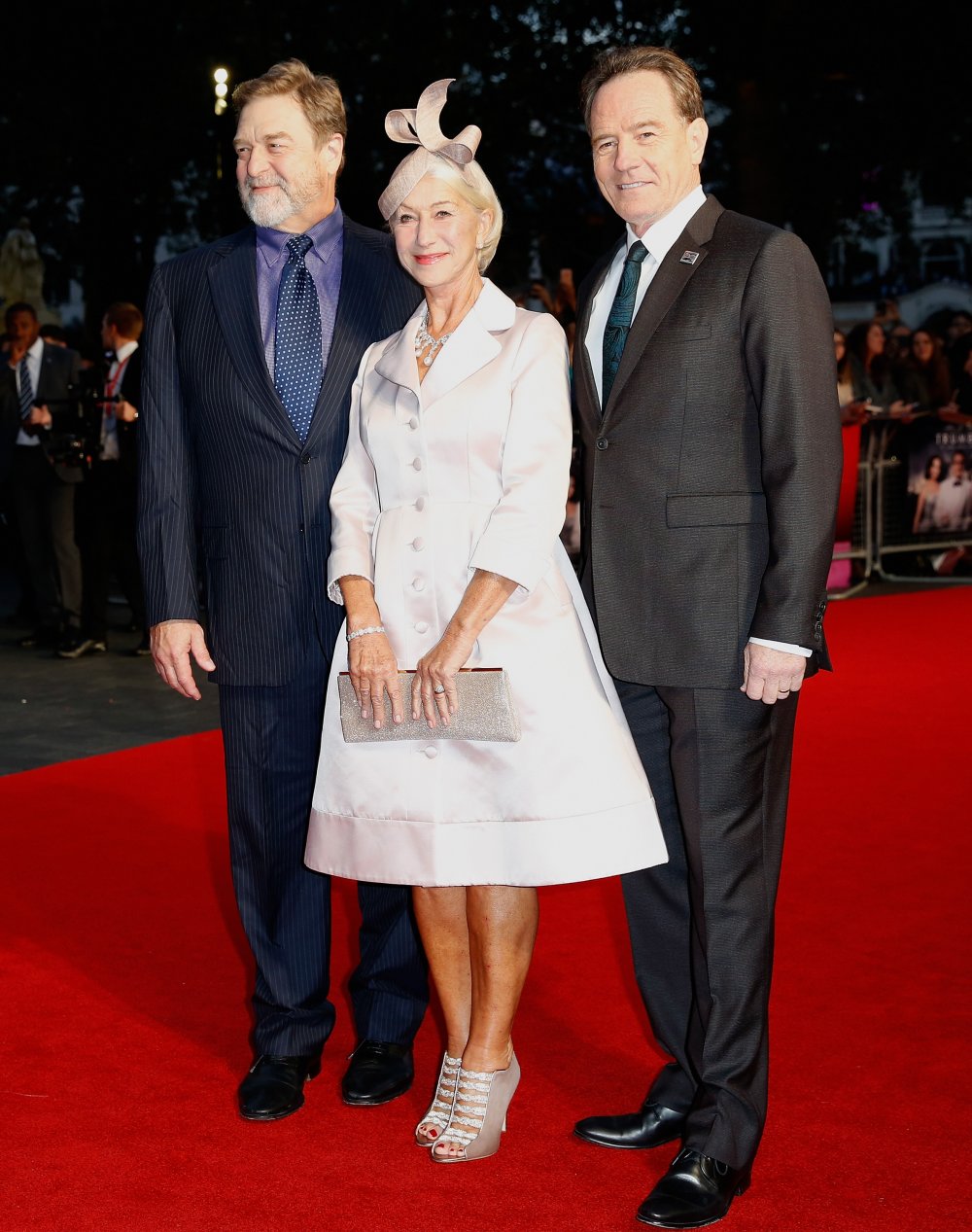
Actors John Goodman, Helen Mirren and Bryan Cranston attend the Trumbo premiere during the BFI London Film Festival at the Odeon Leicester Square
Credit: Tristan Fewings
Day 2 photo highlights
Here are a few choice snaps from last night to brighten up your morning. The main event was of course the star-studded Accenture Gala premiere of Trumbo, but Leicester Square also played host to gala screenings of Beeba Boys and Brand: A Second Coming.
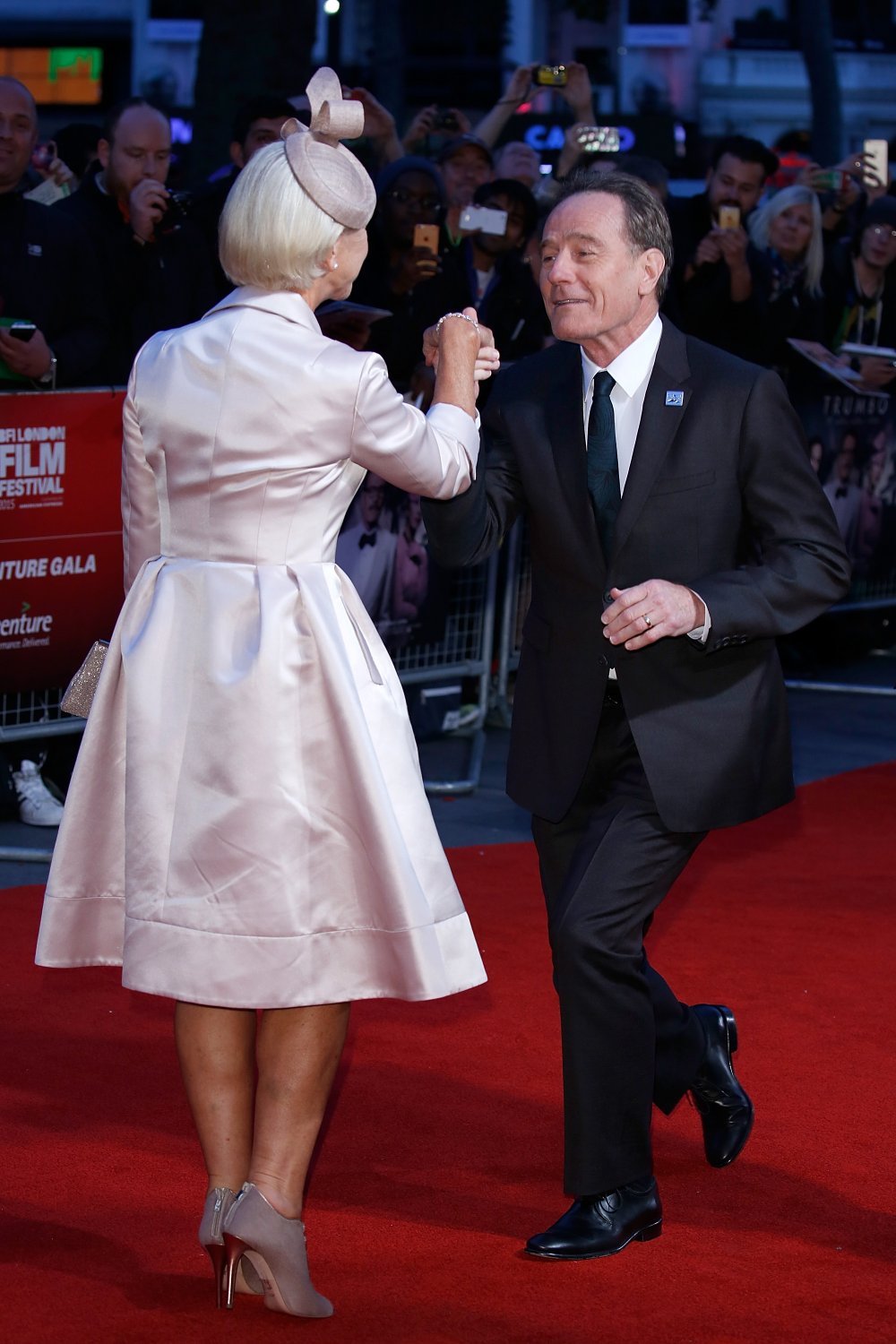
Helen Mirren and Bryan Cranston
Credit: John Philips
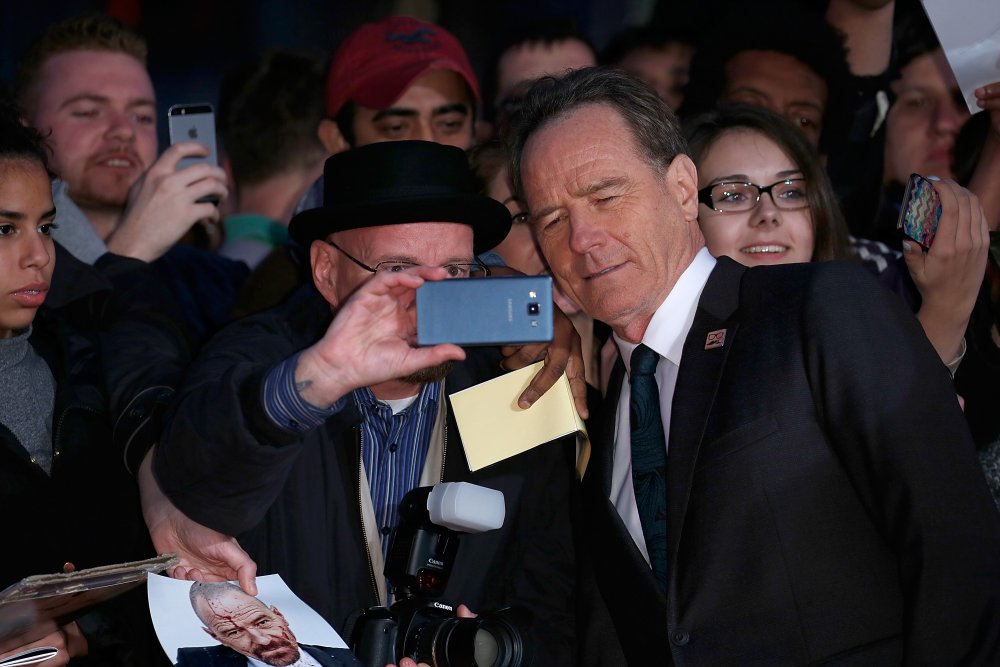
Bryan Cranston and fans
Credit: John Philips
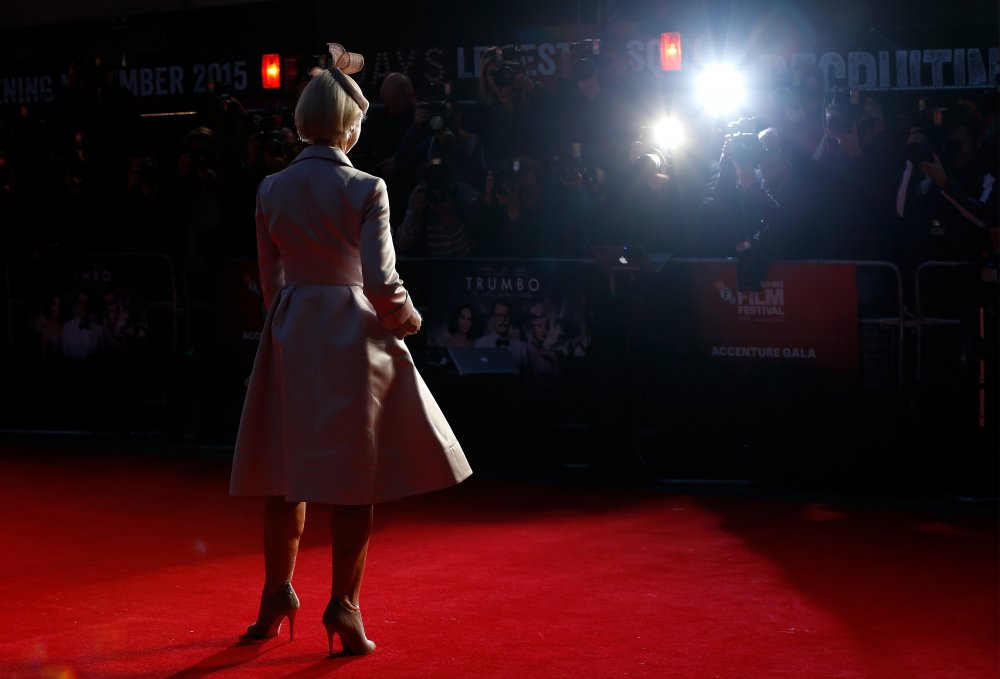
Helen Mirren
Credit: Tristan Fewings
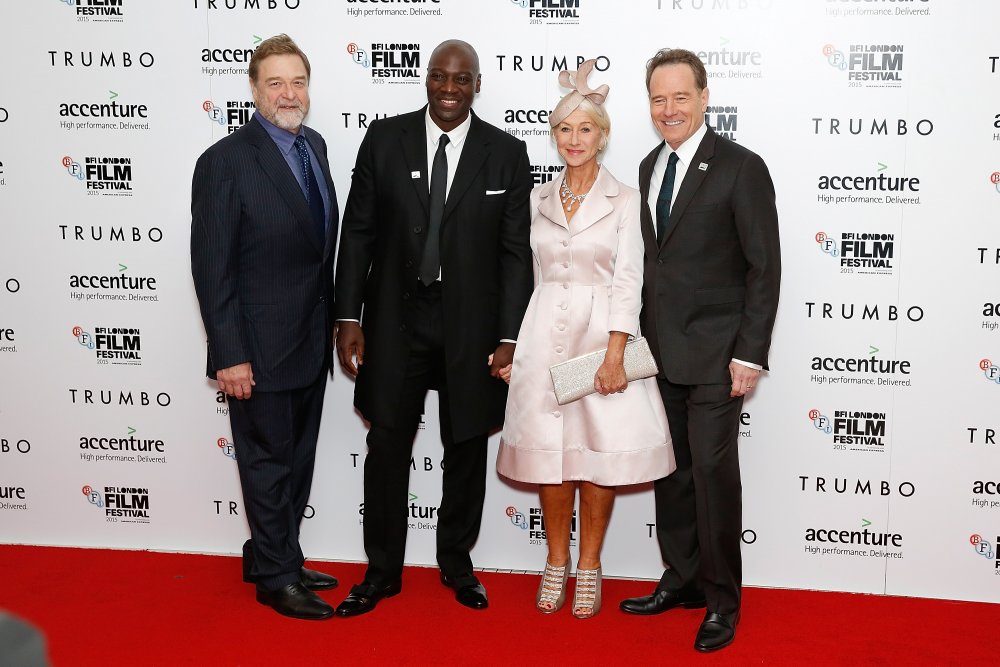
John Goodman, Adewale Akinnuoye-Agbaje, Helen Mirren and Bryan Cranston
Credit: John Philips

Gulshan Grover, Deepa Mehta and Randeep Hooda attend the premiere of Beeba Boys at Vue Leicester Square
Credit: Stuart C. Wilson
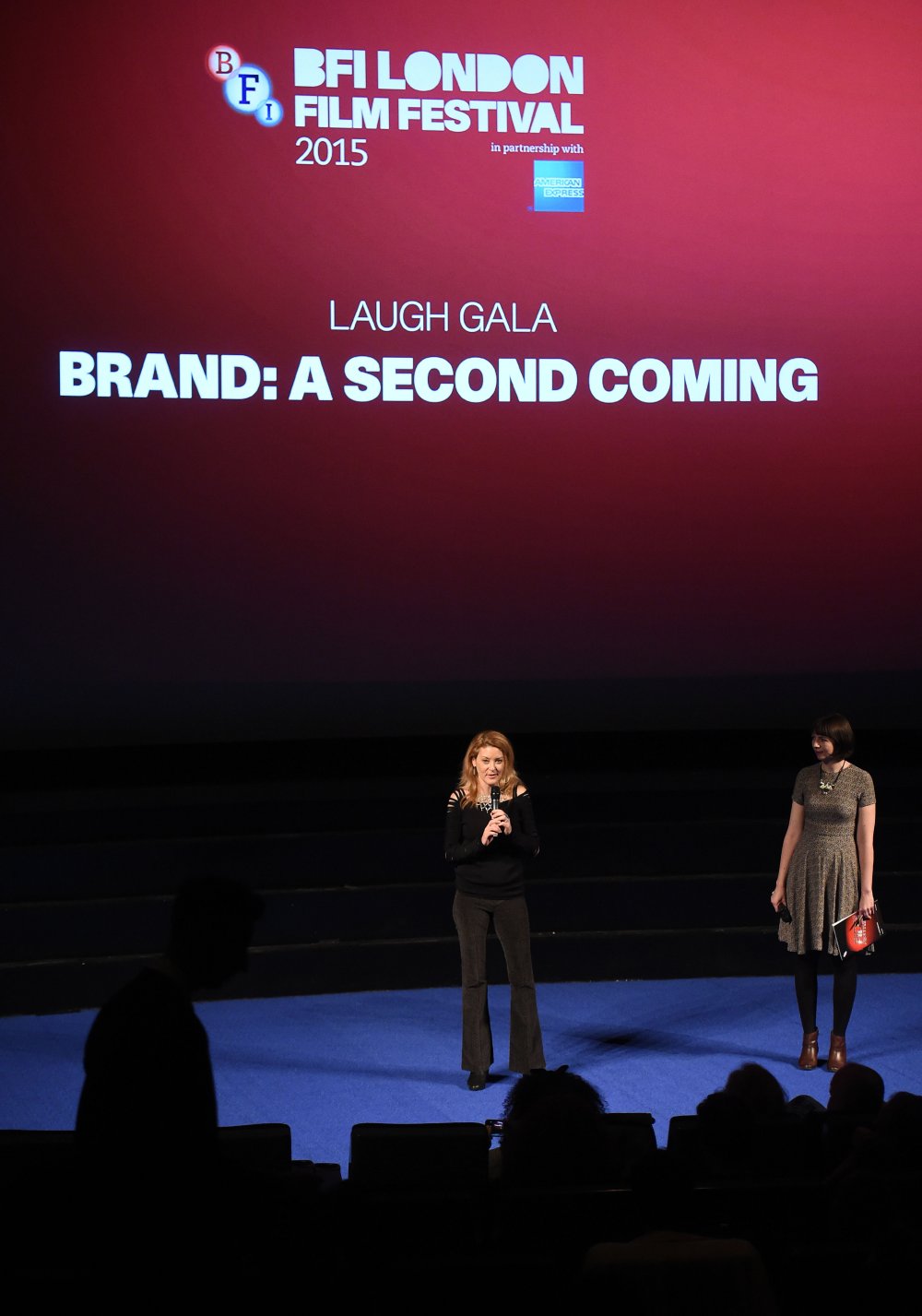
Director Ondi Timoner introduces Brand: A Second Coming at Vue Leicester Square
Credit: Stuart C. Wilson
Day 3’s big tickets
There’s an array of heavy hitters making their festival debuts today. Odeon Leicester Square plays host to Gala premieres of two eagerly anticipated titles — Ben Wheatley’s High-Rise and Luca Guadagnino’s A Bigger Splash.
UK audiences will also get their first chance to see US indie sensation Tangerine, while the Official Competition hots up with the premiere of The Daughter, a radical interpretation of Ibsen’s The Wild Duck.
Over at BFI IMAX, viewers can expect to have their minds blown by The Forbidden Room, a slice of inspired insanity from co-directors Guy Maddin and Evan Johnson.
Judging by the response to festival press screenings, there’s every reason to be extremely excited about today’s line-up.
Last chance to enjoy a treasure from the archives
The final festival screening of African classic Black Girl will get underway at BFI Southbank shortly. Georgia Korossi caught the film earlier in the week, and was thoroughly impressed.

Black Girl (1966)
Ousmane Sembène, the father of African cinema, once said “I don’t just want to make films for entertainment but films to trigger thought”. His debut feature Black Girl (1966) not only embodies this philosophy perfectly, it also puts Africa on the cinematic world map.
Winner of both the 1966 Prix Jean Vigo for best feature film and the Tanit d’or award at the Carthage Film Festival, the story follows Diouana (Mbissine Thérèse Diop) from Dakar to France, where she takes a job as a nanny. Christian Lacoste’s exquisite cinematography juxtaposes the natural beauty of Dakar with the charm of the French Riviera and the lethargy of its bourgeois inhabitants.
Following a major new restoration supported by the World Cinema Foundation, the film has never looked or sounded better. Its nostalgic ambience, use of close-ups and magnificent score offer a feast for the senses. Black Girl’s central message — that money doesn’t bring happiness – is movingly conveyed, and Sembène’s on-screen appearance as a teacher is a real treat.
Black Girl screens together with Borom Sarret (1963).
Industry luminaries assemble for Global Symposium on Gender in Media
Festival director Clare Stewart has declared this year “the year of the woman”. Yesterday, industry delegates assembled for a Global Symposium on Gender in Media, hosted by the Geena Davis Institute in partnership with the BFI and Women in Film and TV. The three-hour conference brought together industry leaders from Film4, Google and the House of Lords alongside Geena Davis herself. Here are nine things Simran Hans took away from the event.
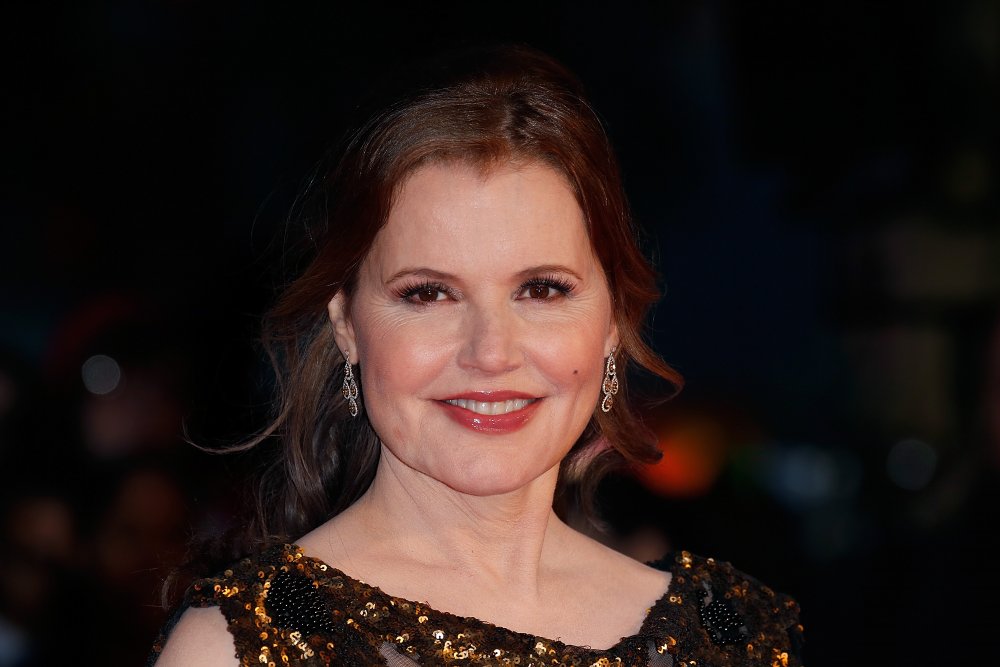
Geena Davis at the Opening Night Gala premiere of Suffragette
Credit: John Philips
“I have to be careful about what I get involved in, because whatever I do, I want to go to the Olympics in it.”
Geena Davis
At 43 years old, Geena Davis qualified for the semi-finals of the Olympic trials… in archery.
“Just 17% of crowds are female on film.”
Geena Davis
From live action to animation, only a tiny silver of the people onscreen are women. “Perhaps Hollywood directors think women don’t gather,” quipped Davis.
“In G-rated films, animated female characters wear the same amount of sexually revealing clothing (as they do) in R-rated movies.”
Geena Davis
As well as lamenting sexualised depictions of women in film, Davis also commented on their unrealistic bodies. “Their waists are so small… Could you even fit a spinal cord in there?”
“It would be easier if I wrote about Klingons than if I wrote about black people.”
Destiny Ekaragah
Go out there and look at people, and see everyone as a human being, encourages the director of Gone Too Far.
“Try to be a category of one.”
Laurie MacDonald
The former head of Columbia Pictures and producer of documentary He Named Me Malala advises film professionals to stop trying to change themselves, and to embrace what they can bring to the industry as individuals.
“I wanted to make a gangster film from the female gaze because… Why the f*** not?”
Deepa Mehta
The Indo-Canadian director of Beeba Boys tells the audience that she is bored of writing about women.
“Men don’t always have to be heroes.”
Abi Morgan
The Suffragette writer argues that writing complex female characters can open up space for complex male characters too.
“Having more men and women’s stories makes life richer for everyone.”
David Kosse
The head of Film4 urges women to tell their stories, because a plurality of voices enhances film culture overall.
“Gender parity can be fun, easy, creative, fast and eminently doable.”
Geena Davis
Gender equality in the media doesn’t have to be boring.
Blood of my Blood – a searing portrait of corruption in Italy
Tonight at BFI Southbank, there’s another chance to see the latest film by Italian maestro Marco Bellocchio. Christina Newland would urge you to check it out.
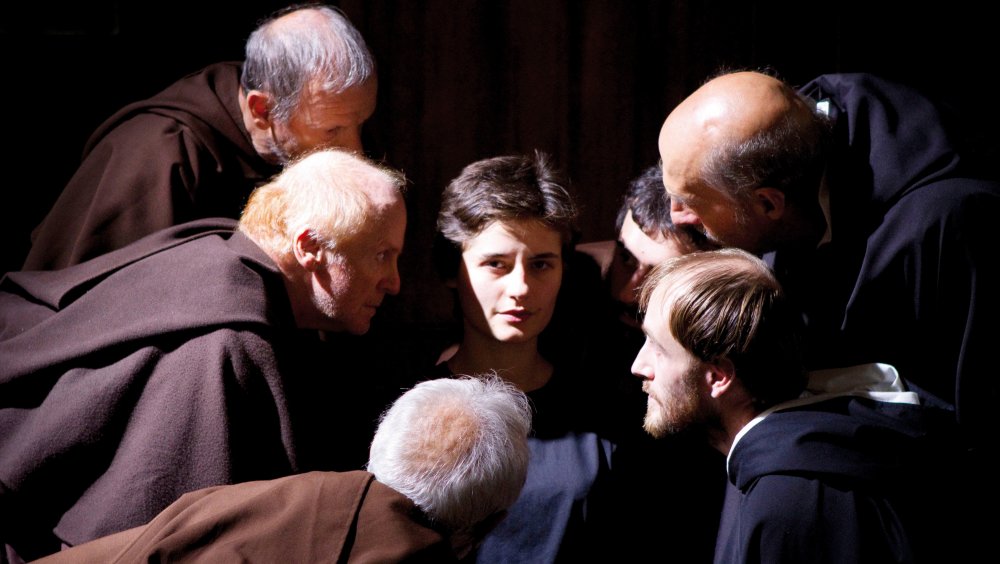
Blood of My Blood (2015)
Veteran director Marco Bellochio, who first made his mark with blistering left-wing satire Fists in the Pocket, has returned with a different critique of the Italian power structure in Blood of my Blood. Set in both the 17th century and the present day, the film embarks on the ambitious task of encapsulating four centuries of Italian corruption.
In a rural medieval convent, a young nun called Benedetta is locked away and her hair is shorn off; a punishment for her affair with a priest who’s since killed himself. The Catholic Church then subjects her to numerous trials by water and fire to gain a confession, while her lover’s twin brother Federico stands by. The director’s son Pier Giorgio Bellochio inhabits the role of Federico in both historical and modern segments, each time as a malaise-ridden man lacking moral conviction.
Pier Giorgio was on hand to talk about the film and succinctly called it “a compendium of subjects from my father’s career”. The film expounds on everything from the church’s exploitation of its followers to the perplexing hierarchy of financial power in modern Italy. In these ways and others, Blood of my Blood paints an astute, if elusive, picture of a patriarchal class reluctant to relinquish its control.
Warlock - an underrated classic
Tomorrow afternoon at BFI Southbank you can feast your eyes on a 4K digital restoration of the bafflingly overlooked 1959 western Warlock. Here’s Patrick Russell to bring you up to speed with this under-the-radar gem.
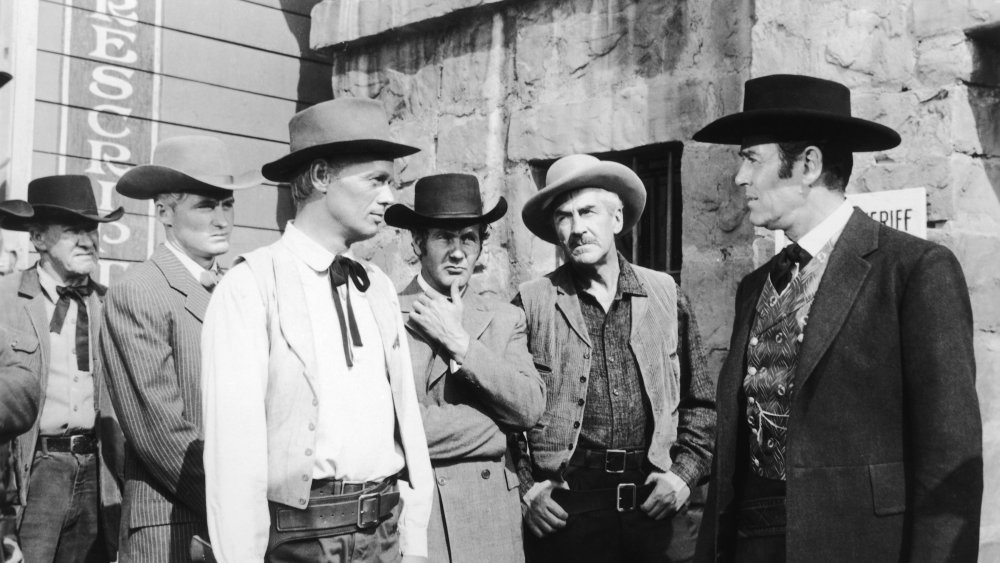
Warlock (1959)
What’s it about?
Desperate times call for desperate measures…. Terrorised by local cowboys, the good folk of Utah mining town Warlock turn to a famed and mercenary gunman. His arrival sets in chain a tense, complex narrative of tortured rivalries and violent events building to a memorable climax.
Who made it?
Warlock is one of the best films by underrated director Edward Dmytryk and stars an amazing ensemble cast of Hollywood’s finest. Henry Fonda delivers a dark variation on his better-known role as Wyatt Earp in My Darling Clementine. Anthony Quinn, Dorothy Malone and Richard Widmark all give sterling supporting performances as complex characters.
What’s special about it?
Why Warlock isn’t better known is something of a mystery. It takes a classic western plot premise and rings the changes on it, big time. The characters’ ever-shifting relationships are delineated with unusual psychological complexity, contributing to a coiled-spring tension that’s impressively sustained throughout the film. Fonda and Quinn’s close but tortured friendship, with subtle homoerotic undertones, is particularly intriguing. Both actors, incidentally, are kitted out in superbly fancy duds, for which the costume buyer should surely have received a special sartorial prize!
Structurally, the film alternates literate dialogue with stylish visual sequences, hinting at the operatic stylisation of the spaghetti westerns of a few years later. It’s a big film in every sense, and is screening in a terrific 4k restoration from the Twentieth Century Fox team that was behind the restoration of My Darling Clementine — a highlight of last year’s festival.
Wave vs Shore - illuminating insight into a fascinating artistic movement
Dare strand documentary Wave vs Shore made its festival debut last night. Here’s Ben Nicholson on why you might want to catch it when it screens again tomorrow afternoon at the Cine Lumière.
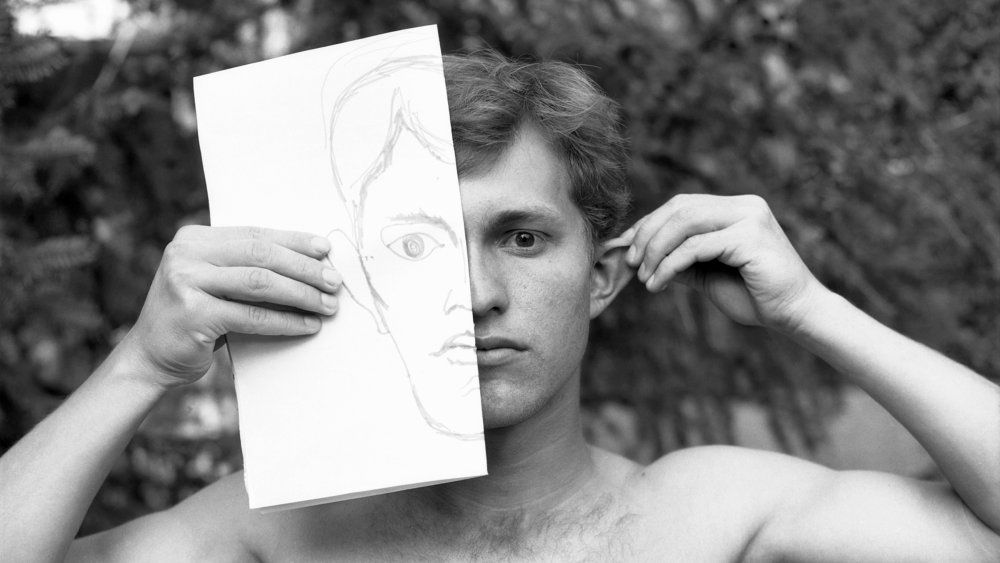
Wave vs Shore (2014)
“Those guys spoke neither Czech nor Slovak; they spoke Czechoslovak. It’s another language,” explained producer Zuzana Mistríková about the subjects of documentary Wave vs Shore as its post-screening Q&A drew to a close. It was an apt observation, as the film concerns a photography movement, The Slovak New Wave, which rose to prominence in the 1980s precisely because it seemed to speak a language all of its own.
Director Martin Štrba had key insight into the group, having been a member himself. “There was a joke in the pub that [the Slovak New Wave] is what we were, and the curators saw it that way afterwards. Then the Velvet Revolution came and it was then that the work spread further.” The arresting images on display are reason enough in themselves to see the film, and Štrba channels their creative energy into a vibrant and warm scrapbook of an extraordinary and dynamic artistic reflex against the state.
“To some extent, it was a reaction to this totalitarianism and finding a freedom through the work,” he explained, going on to elaborate on his own sense of release — for him “the Slovak New Wave was bungee jumping.” His film evokes the spirit of playfulness and bold expression that these provocateurs embraced wholeheartedly.
We’re mere moments away from the Festival Gala premiere of High-Rise, and excitement levels are through the roof…
Finally for today, here’s a few fabulous shots from the High-Rise red carpet. More to follow tomorrow, so be sure to swing by…
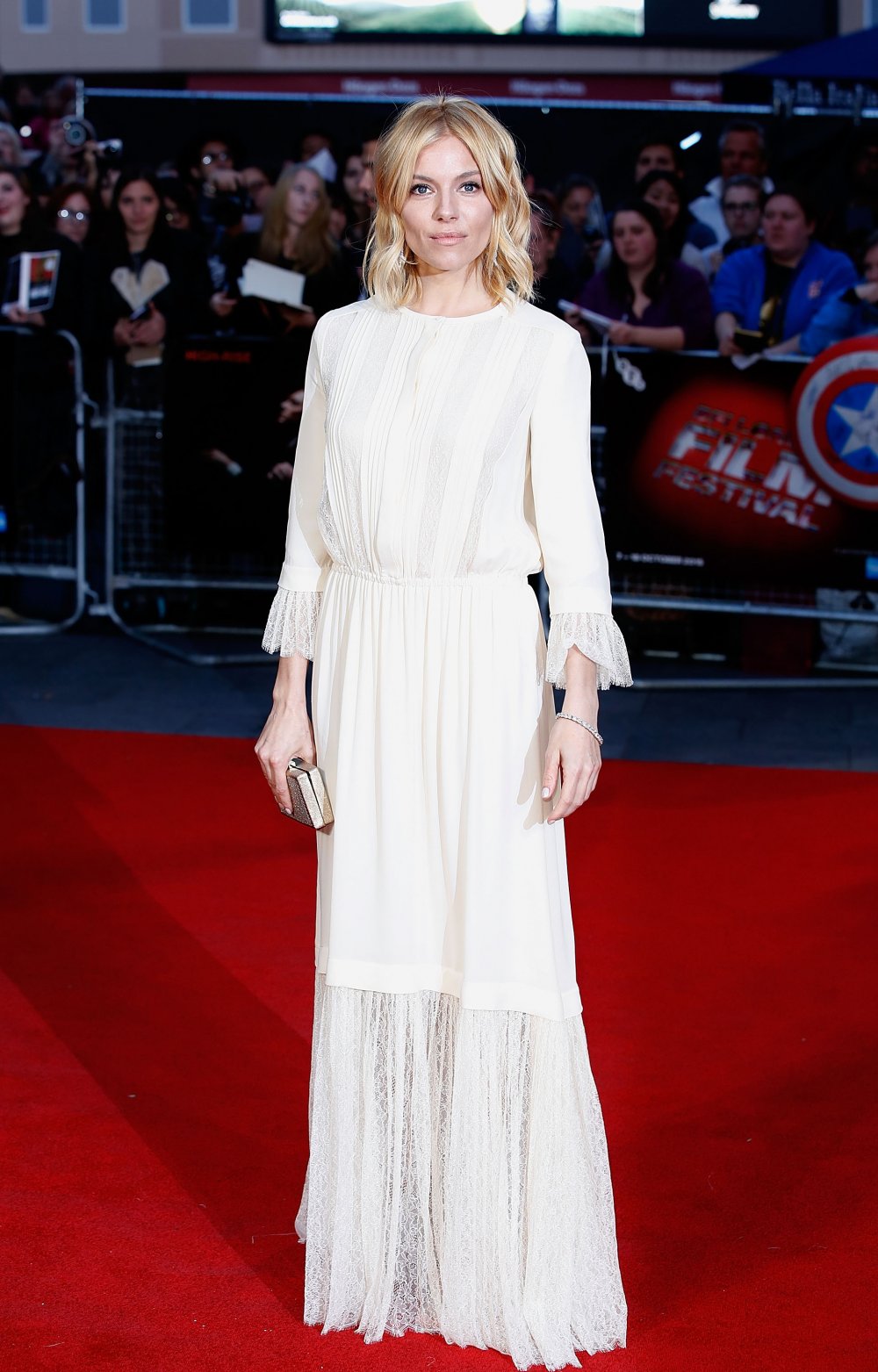
Sienna Miller
Credit: John Philips
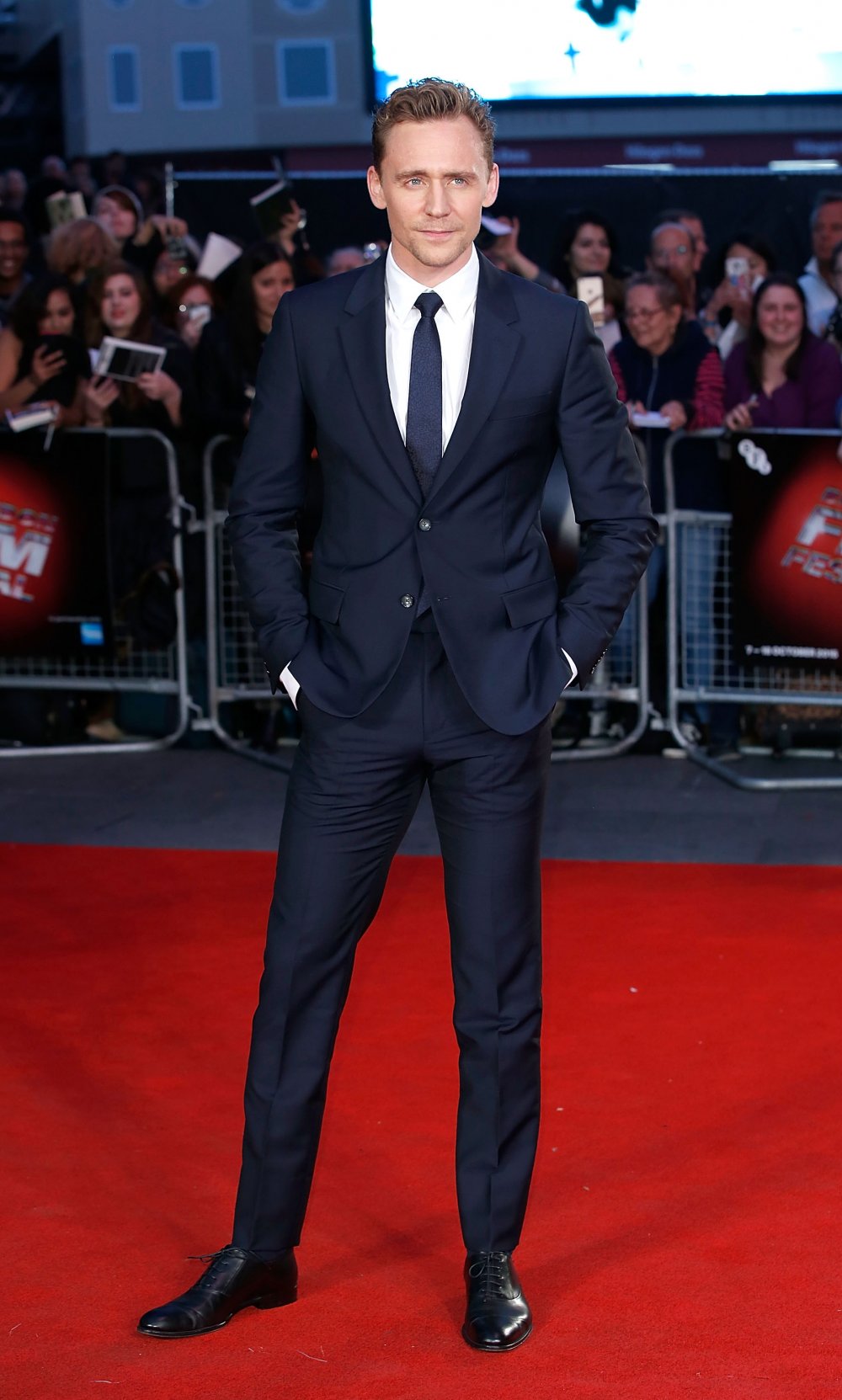
Tom Hiddleston
Credit: John Philips
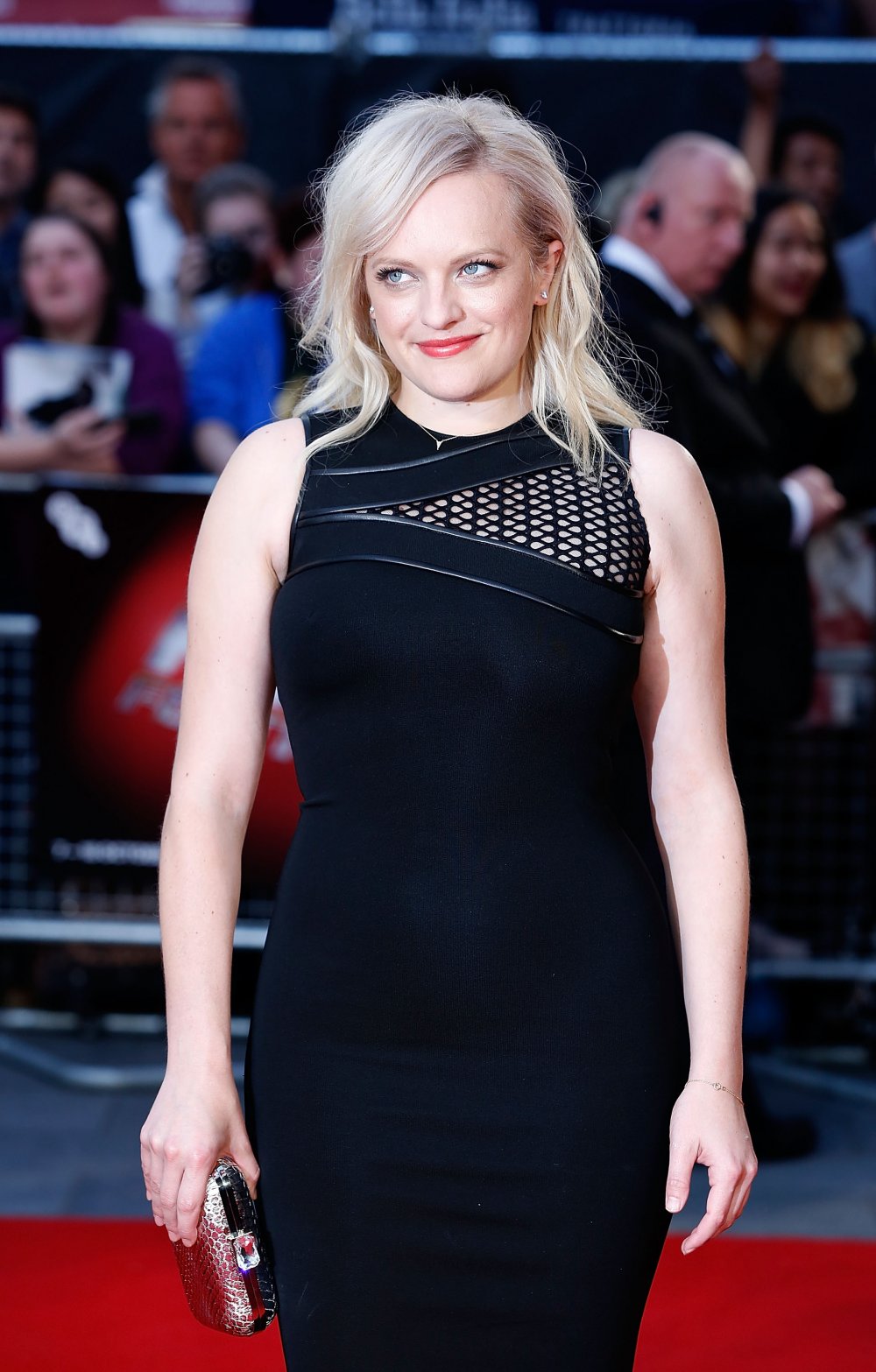
Elisabeth Moss
Credit: John Philips
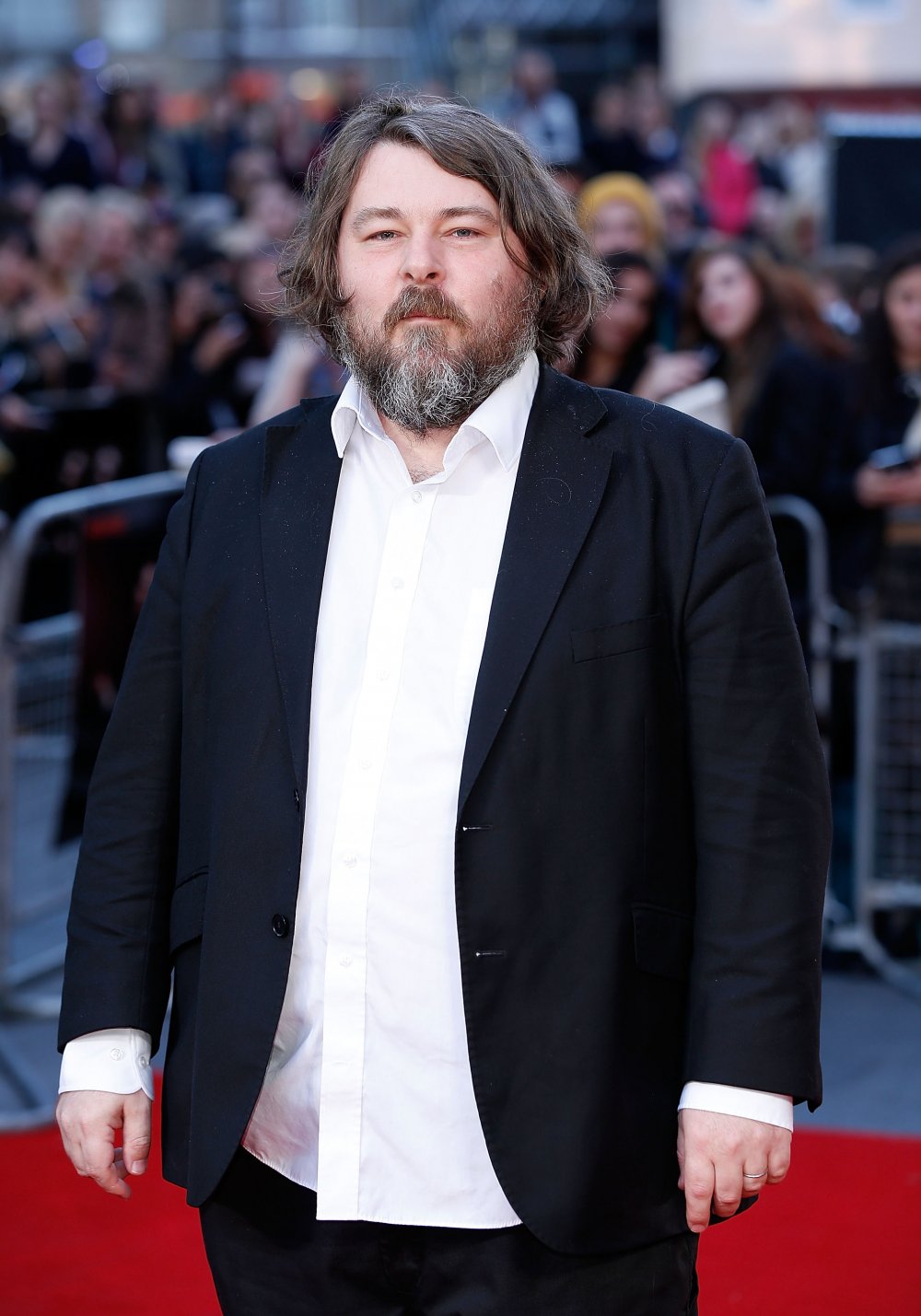
Ben Wheatley
Credit: John Philips
If you were there, or even if you weren’t, here’s what Leicester Square looked like last night at the big premiere of Ben Wheatley’s High-Rise…
What’s in store for Day 4?
It’s always exciting, the first Saturday of the festival. It’s the time when weekday workers get to properly dive in to daytime screenings and events with the proper abandon that such a smorgasbord of film demands. Swing a cat around anywhere in central London today and you’ll hit great cinema.
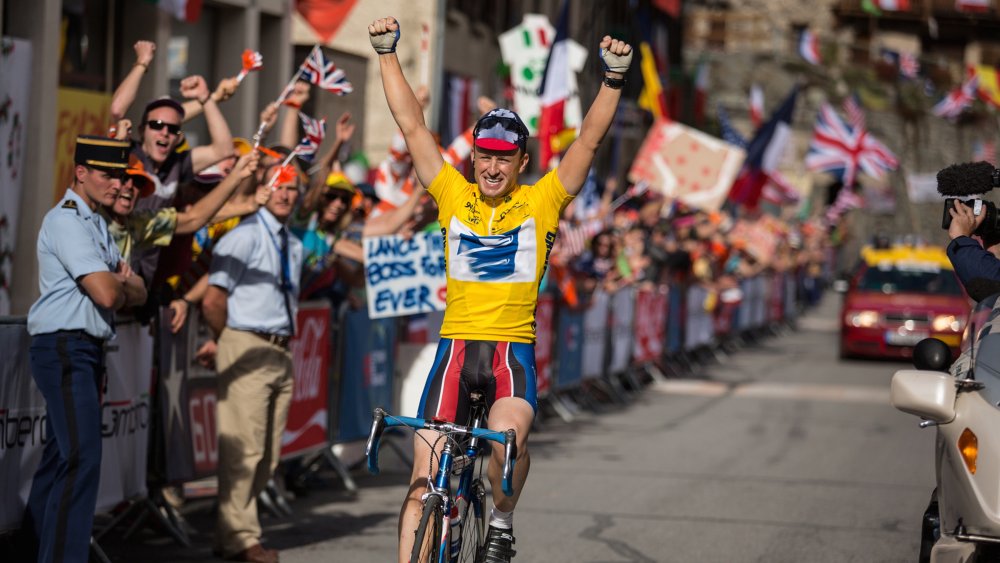
The Program (2015)
At Curzon Soho, things gets under way at noon with the unveiling of Frederick Wiseman’s Documentary Competition contender In Jackson Heights, a vivid and vital three-hour portrait of New York’s most culturally diverse neighbourhood.
There’s three-hour drama of a more vintage sort already unspooling at BFI Southbank, with a restored version of Luchino Visconti’s soap-operatic classic Rocco and His Brothers (1960). Hot on Rocco’s heels at 14:30 is the rediscovered western Warlock, directed by Hollywood Ten exile Edward Dmytryck.
There’s another chance to our Thrill Gala, Beeba Boys, at the Odeon Leicester Square at 14:15, and a final chance to see Competition competitor Tangerine at VUE West End at 12:30.
Tonight’s big-tickets items, meanwhile, are the Debate Gala unveiling of Stephen Frears’s dramatisation of the Lance Armstrong scandal, The Program, and some full-on Wild West action with Kurt Russell in Bone Tomahawk (our Cult Gala).
And our Competition continues apace with the harrowing Cannes buzz title Son of Saul and the hyper-kinetic thriller 11 Minutes from masterful Polish director Jerzy Skolimowski (Deep End; Essential Killing).
‘It was like discovering Atlantis’ - The American Epic Sessions
Among tonight’s other excitements is the premiere of Sonic strand highlight The American Epic Sessions, the last in a series of documentary films on the pioneering recording systems of the early American music industry – and how they revolutionised music.
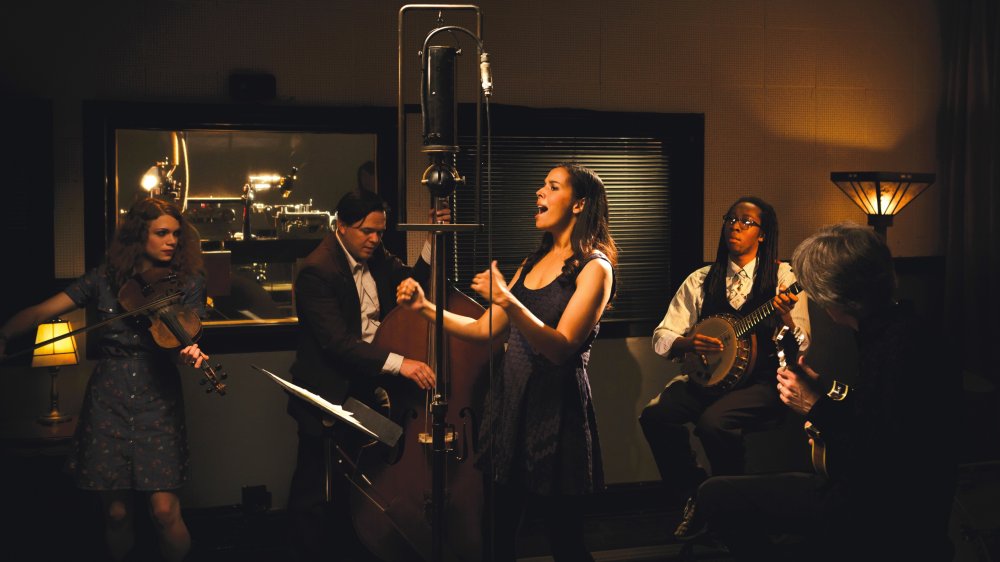
The American Epic Sessions (2015)
In this film, produced by Jack White and T Bone Burnett, director Bernard McMahon brought together performing artists as varied as Elton John and Nas to record on a rebuilt version of the antiquated device.
The sound was only being locked a few days ago, so few people have seen it yet, but Christina Newland caught up with the director to find out more.
Could you tell me a little bit about the background of the project?
Well, in the 1920s, buying records was for the wealthy in cities and urban areas, but there was an interest in selling to people in Texas or Louisiana – and the question became, what did these people want to hear? […] And so this device was invented, operated by a weight and pulleys […] And as this travelled around America, it recorded the first blues record, the first rhythm and blues record, country, early hip-hop.
This became the first time that you could hear, for example, a Mexican-American cotton picker express her thoughts and feelings and have that distributed everywhere. So this completely changed music in America. And where it came from changed – it became a working-class art too. What is it Marshall Mcluhan said? The medium is the message.
Telling the history of the American music industry is quite an ambitious story to tell. How did you get started with it?
Well, I spent nearly four years researching it – talking to all the American families connected with this pioneering time in the music industry and then narrowing it down to the 10 families you see in the film. It’s amazing that there are so few photos or existing footage of these recording devices or of the process of recording on them.
So it’s kind of this untold story […] it was like discovering Atlantis, or something.
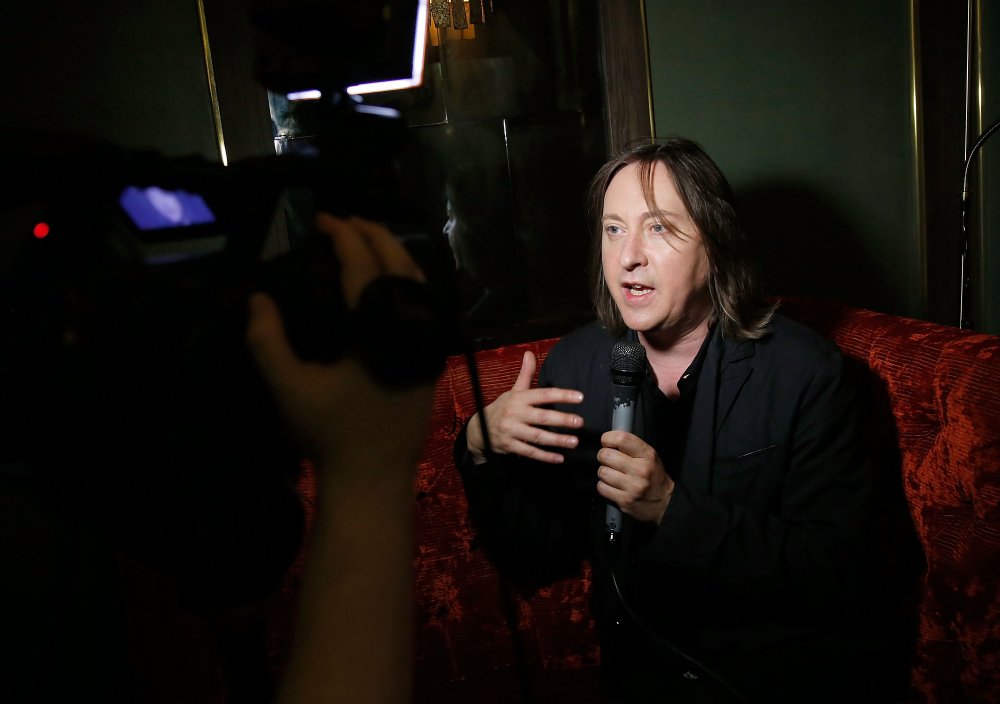
Director Bernard MacMahon attends the FilmMaker Afternoon Tea, part of the BFI London Film Festival
How did all of these big names get involved?
Well I’d been working on it for some time and I was told, you have to approach T Bone Burnett with this. Then I got Jack White’s email, and I told him I had all this rare footage of blues singers […] and he got back to me straight away asking to get involved. And then I was told an executive producer had become very interested in my project and I walked into a meeting with Robert Redford.
I think the recordings are a lot of these musicians’ best, too – from the Alabama Shakes to Nas, they had to arrange and write everything there on the day. Also the way it sounds — everyone said they wanted to do their next record on it because it sounds so great.
And because of the limitations of the recording system, all of the artists only had three minutes to record. How did you all deal with those limitations?
Really, the musicians didn’t have a choice but to understand – none of these things existed anymore and had to be completely rebuilt with sourced items from all around the world. So if a bulb went, it was from 1926 – not too easy to replace. But I mean, this is where the three-minute pop song comes from. When someone got it right the first time, they used to call it ‘lightning in a bottle’.
From the archives: 28th London Film Festival poster
This is what the poster for the LFF looked like in 1984, when the opening night film was none other than Gremlins!

28th London Film Festival poster
Teenage riots at LFF
Teens reign supreme at this year’s Festival – particularly this weekend. Simran Hans has been keeping track of what some of the youngsters are up to…
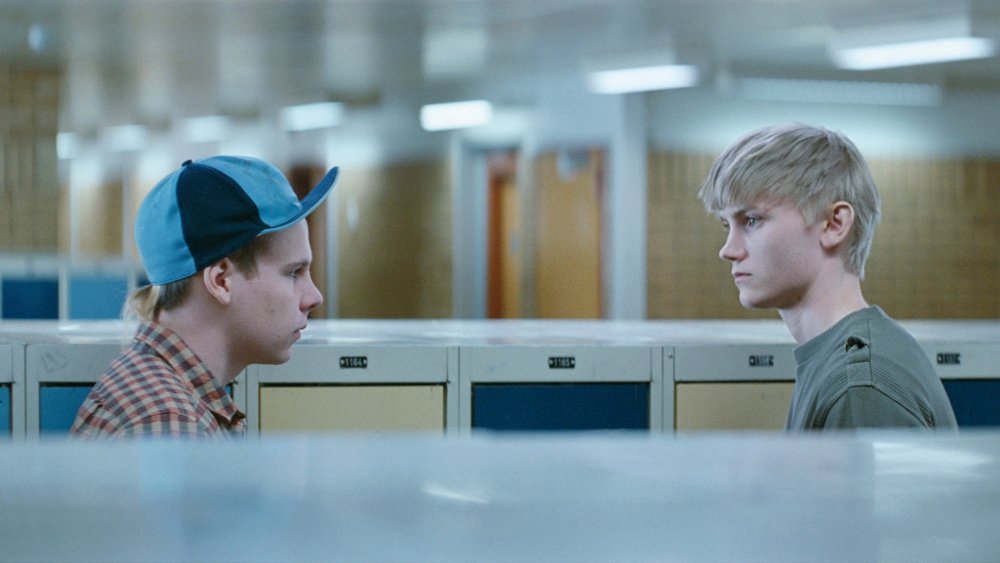
The Here After (2015)
One of my festival favourites is chilly Scandinavian indie The Here After. The dark drama stars Ulrik Munther as teenage delinquent John, who struggles to reintegrate into his small-town community after doing time in prison. John’s isolation is mirrored in the sweeping, desolate landscapes of rural Sweden; the effect is a bit like a Scandinavian version of Derek Cianfrance’s The Place beyond the Pines. Munther is particularly excellent as the brooding, psychologically opaque John.
If you liked Xavier Dolan’s French-Canadian ménage-a-trois Les Amours imaginaires, you might like Eva Husson’s directorial debut Bang Gang (A Love Story), which tracks the bad habits of a sex-obsessed group of school kids determined to document their explicit exploits. Meticulously art-directed teenage bedrooms, an indie soundtrack and a whole lotta naked bodies; Husson offers a slick, stylish commentary on sex, porn and coming of age in the internet era.
Equally uneasy is Der Nachtmahr, a wacky teen thriller from visual artist AKIZ. 17 year-old Tina loves drugs, partying and EDM music, but her lifestyle takes a turn when a mysterious creature that only she can see starts plaguing her. Is the creature a physical manifestation of her psychological anxieties or a violent force to be reckoned with? With its touches of dark humour and playful references to ET, the film balances black comedy with tense horror – and a bonus cameo from Sonic Youth’s Kim Gordon.
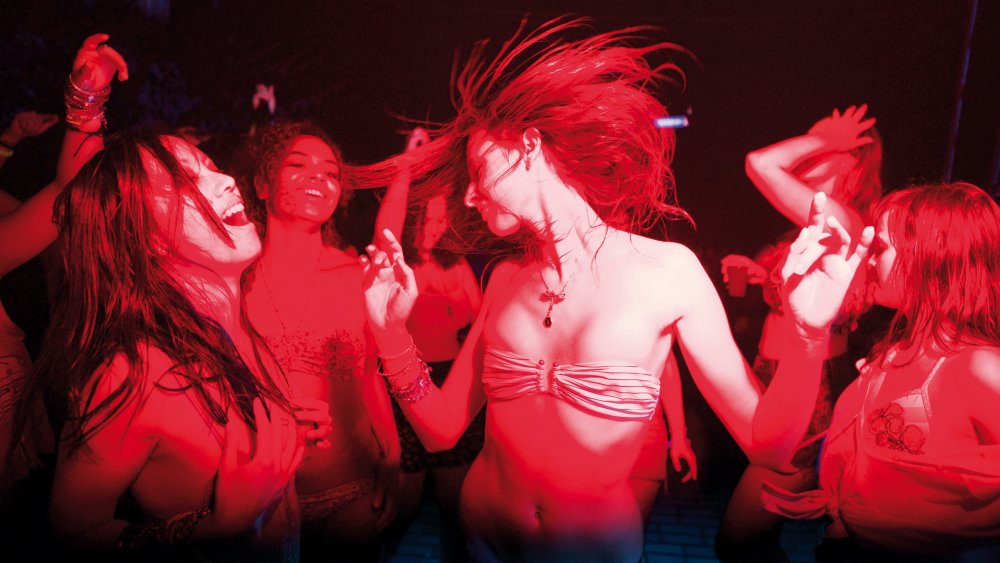
Der Nachtmahr (2015)
Plunging back into the present day is documentary He Named Me Malala, an intimate portrait of 18 year-old Nobel Peace Prize Winner Malala Yousafzai. Director Davis Guggenheim (An Inconvenient Truth) combines voiceover with footage of Malala’s family and animated sequences rendered in beautiful watercolour pencil that depict her former life in Pakistan, contrasting it with her move to England after she was shot by the Taliban at school, in her home country of North West Pakistan. Her commitment to empowering women through education, her tender relationship with her father and her crush on Roger Federer are all covered in this sweet look at Malala’s immigrant experience.
Sean Baker on Tangerine
Last night’s screening of Sean Baker’s indie sleeper hit Tangerine presented an early contender for feelgood film of the festival, writes Paul O’Callaghan.
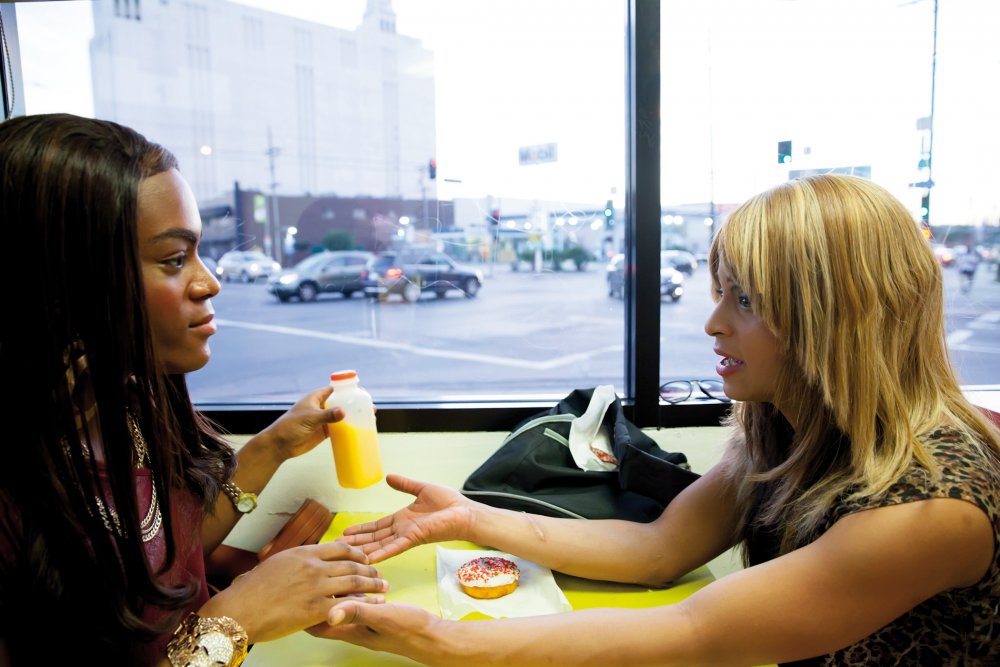
Tangerine (2015)
Tangerine has received a huge amount of press attention since it debuted to raves at this year’s Sundance Film Festival, thanks to two major talking points. It offers a sun-drenched, gloriously cinematic evocation of Los Angeles, which happens to have been shot entirely on modified iPhones. It’s also been heralded as a major breakthrough for the representation of transgender people on film, with first-time actors Mya Taylor and Kitana Kiki Rodriguez delivering jaw-dropping performances as a couple of impoverished sex workers who find themselves involved in an increasingly absurd quest for revenge and retribution on Christmas Eve.
Baker and Taylor were in town for the film’s UK premiere last night, and spoke compellingly about the film’s development process and trans equality.
Sean Baker: “The way I’ve made the last few films is that they’re, in a way, found. In this case, I live about half a mile from the corner of Santa Monica and Highland. (Co-writer) Chris Bergoch and I are both cisgender white men from outside of that world, so we didn’t want to go into it imposing any sort of script or plot – we wanted to find people to work with, and our main collaborator became Mya.”
On its refreshing depiction of Los Angeles
SB: “I’m originally from New York – I came from that sensibility where I’m a walker and a biker, so I tried to keep doing that in Los Angeles. And in doing that, I realised there’s so much of LA that hasn’t been shown in film and television — we actually only see LA through Venice Beach and Beverly Hills, but there’s so many more neighbourhoods and communities and subcultures. We think of LA as a car culture, but there’s a whole other side, where people who don’t have the means still have to get around somehow.”
On the film’s treatment of female friendship
Mya Taylor: “As far as friendship goes, we told the truth about the area. When you’re struggling, when you’re down and out like these girls are, all you have is each other. You don’t have family – if you did you wouldn’t be out there.”
On the ongoing battle for acceptance of trans people
MT: “I feel like there’s a lot of cisgender people who think ‘trans people just want us to accept them’. I feel it’s not about acceptance — it’s more like, why can’t people just mind their business? I don’t care whether you accept me or not, as long as you respect my right to be here. All people need is a basic level of respect – why do some people feel they have the right to interfere with other people’s lives?”
Hand Gestures: ‘You walk into the dark and find yourself transported to another world’
Audiences in NFT2 at BFI Southbank right now are grappling with an outstanding documentary debut from Italian filmmaker Francesco Clerici: Hand Gestures, a meditative portrait of a historic bronze foundry in Milan.
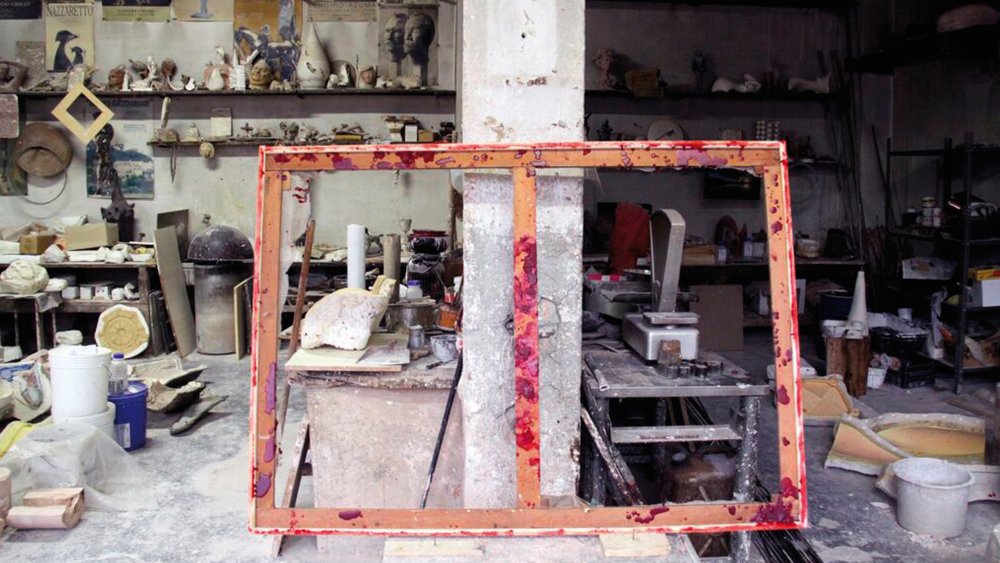
Hand Gestures (2015)
Comparable to the work made by the Harvard Ethnography Lab, Clerici documents a technique that dates back to the 4th-century BC. Foregoing any extraneous music or dialogue, Hand Gestures casts its hypnotic rhythms through meticulous editing and striking compositions. Matthew Thrift grabbed Clerici to speak to him about his filmmaking process:
I’ve always been interested in manual work, people working with their hands. My grandfather was a house-builder and a carpenter, and I was always fascinated by what he was able to make with basic materials, whereas today everyone seems to work with computers. I started working with the artist – the sculptor in the film – in 2009.
I’d visit him at the foundry and watch him work, and the more often I went there, the more I found myself becoming hypnotised by its environment. It’s a crazy place, right in the centre of Milan. They’re using the same techniques that were used for thousands of years, and when you enter the foundry it’s like entering another dimension, and for me that’s cinema. You walk into the dark and find yourself transported to another world.
I was looking for a story I could tell visually, with very little dialogue. I knew this was the place, I just had to find out how I could disappear, how I could become a spectator rather than a director. I didn’t want to use music, and wanted the editing rhythms to act as an homage to the work, to be as discreet and intimate with the foundry workers as possible, following their process. What they were doing was so beautiful, it was easy for me to to step back and let their work speak.
It’s difficult in Italy to make this sort of film. Viewers think a documentary should be a documentary, with voiceovers and interviews. I didn’t want any of this. I wanted a unique flow, where you enter the foundry, but you also enter in cinematic time.
I’m not that interested in bronze-sculpting really. I wanted to make an homage to people working, to their rhythms. Also to connect to something deep inside us, our connection to materials. They make everything with air, water, fire, earth and little else, there’s almost no technology involved. This direct contact with the elements is an experience I wanted to pass on to an audience.
Day 4 on Twitter
Ben Foster will be repping his new portrayal of disgraced cyclist Lance Armstrong down at Leicester Square imminently, as Stephen Frears’s The Program gets its UK premiere.
If you’re in the area, keep your eyes peeled for Foster, co-stars Chris O’Down and Ben Walsh and their director treading the red carpet.
While we await their arrival, let’s see what audiences and journos have been making of this afternoon’s matinees…
Ben Foster has arrived!
The lovely Chris O’Dowd arrives for The Program…
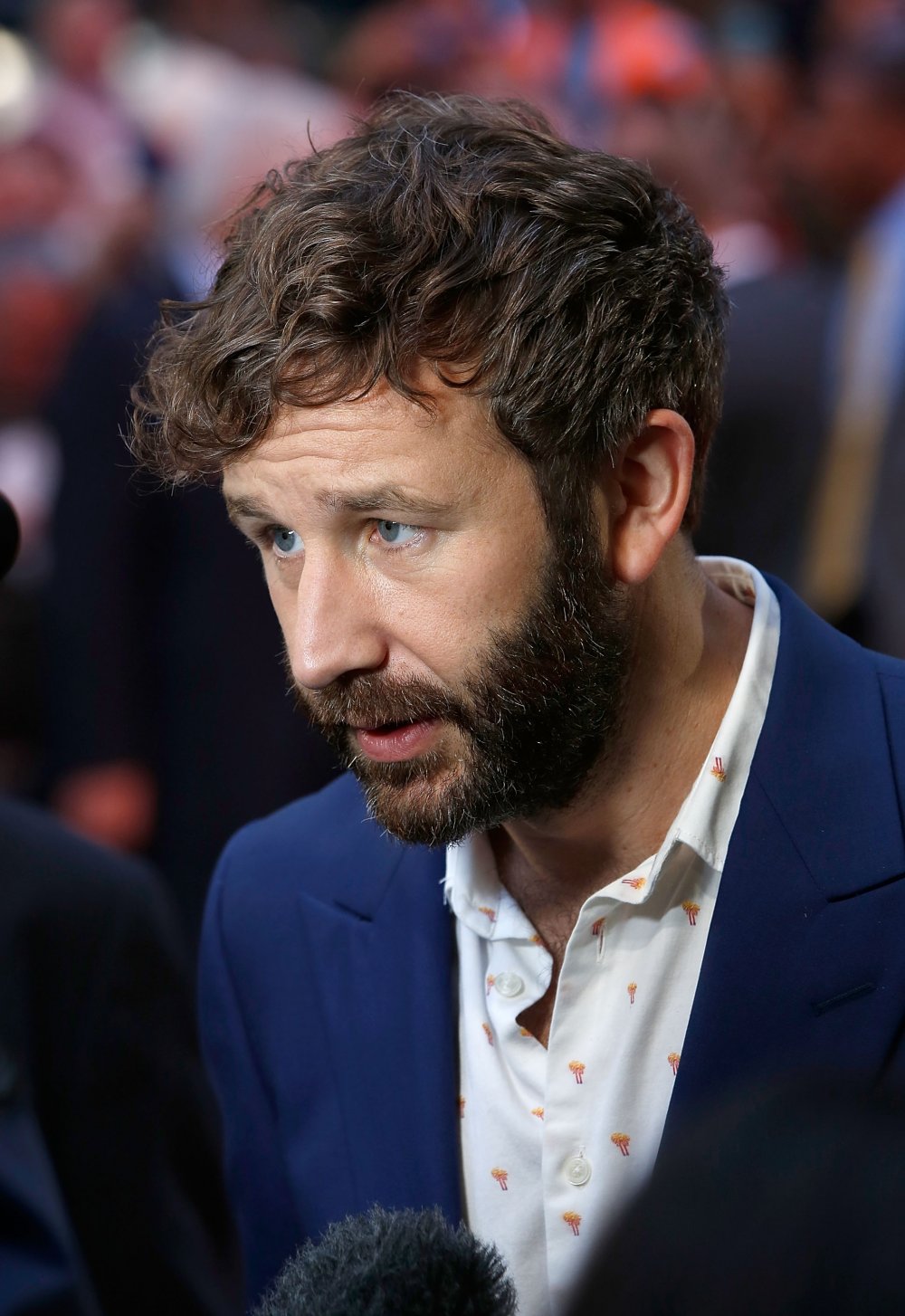
Chris O'Dowd attends the The Program screening, during the BFI London Film Festival
Credit: John Phillips
Black Mass first reactions
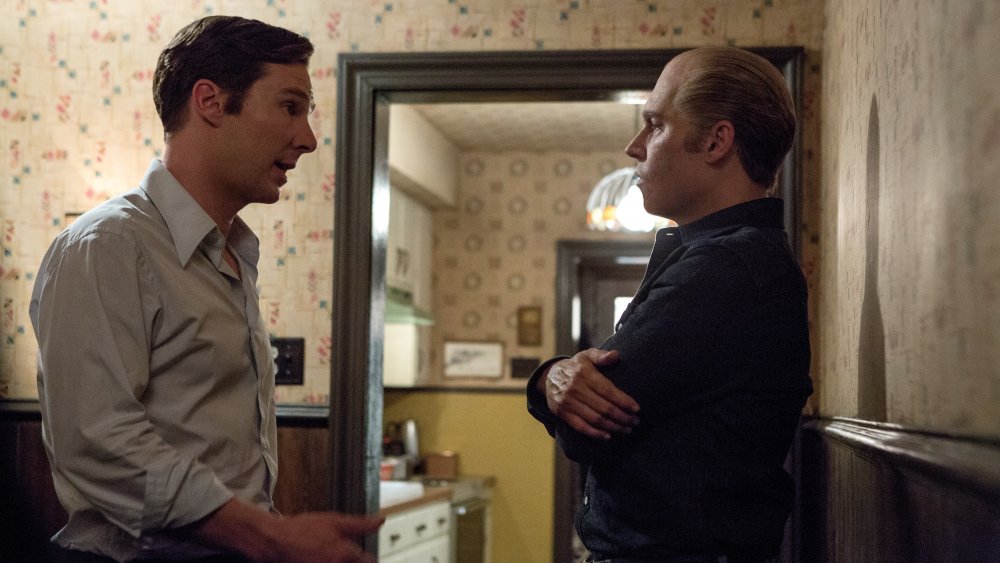
Black Mass (2015)
Day 5 at LFF brings us the Virgin Atlantic Gala screening of Black Mass, a gritty underworld drama starring Johnny Depp as one of America’s most notorious mobsters. With Joel Edgerton, Benedict Cumberbatch and Breaking Bad’s Jesse Plemons also among the cast, it should make for a pretty intense Sunday evening… atleast if the reactions to this morning’s press screening are anything to go by.
Critics emerged into the light just now and had this to say on Twitter…
Welcome to the jungle: Embrace of the Serpent
Away from the glitz of the square, last night Ben Nicholson enjoyed a poetic odyssey into the heart of the Amazon…
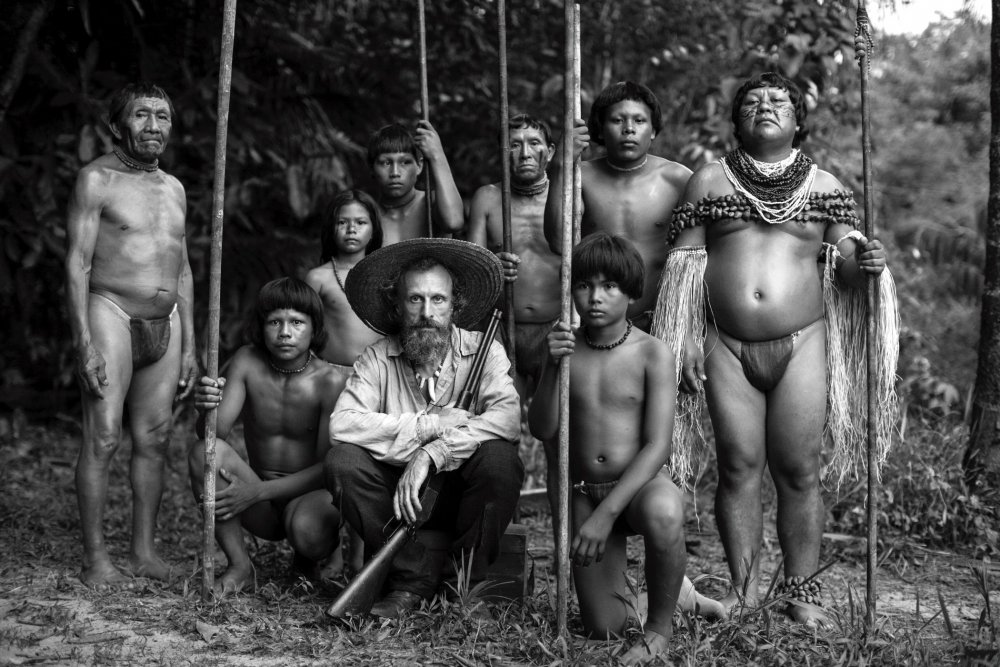
Embrace of the Serpent (2015)
Even invoking the cinematic spirits of famous Heart of Darkness-like narratives such as Werner Herzog’s Aguirre, Wrath of God, or Carol Reed’s Outcast of the Islands is problematic when discussing Embrace of the Serpent. They are undoubtedly relevant touchstones, but the encroachment of white invaders into unsullied and alien land is precisely the reason for this elegant and poignant lament. Indeed, director Ciro Guerra has spoken previously about abandoning the logic of a “foreign-style” production in favour of respecting the environment and inhabitants of the region.
Such lack of respect runs rife in the film’s bristling narrative as colonial powers trample through the jungle which is sumptuously photographed in Super 35 monochrome. Despite the colourless visuals, the sound design by Carlos García brings it to vibrant life, emphasising all the more the natural wonder of what is being destroyed in the name of adventure, religion and rubber. It’s a deeply moving tour of a violated landscape and its peoples, guided by the haggard face of a ghostly denizen.
Embrace of the Serpent screens again tonight at Curzon Mayfair and next Saturday at VUE Islington.
Wonderfully there still seem to be a few tickets available for one of this afternoon’s two screenings of Film of the Year* The Assassin. Hou Hsiao-hsien’s unique and majesterial take on the wuxia genre has been wowing critics since it premiered at Cannes in May, and comes to the LFF this afternoon as its Journey Gala. Truly a cinematic experience like none other this year.

The Assassin (2015)
If you’ve yet to get up to speed with the work of Hou, here’s a handy primer:
Three to see today
Christina Newland recommends three gems from today’s schedules…
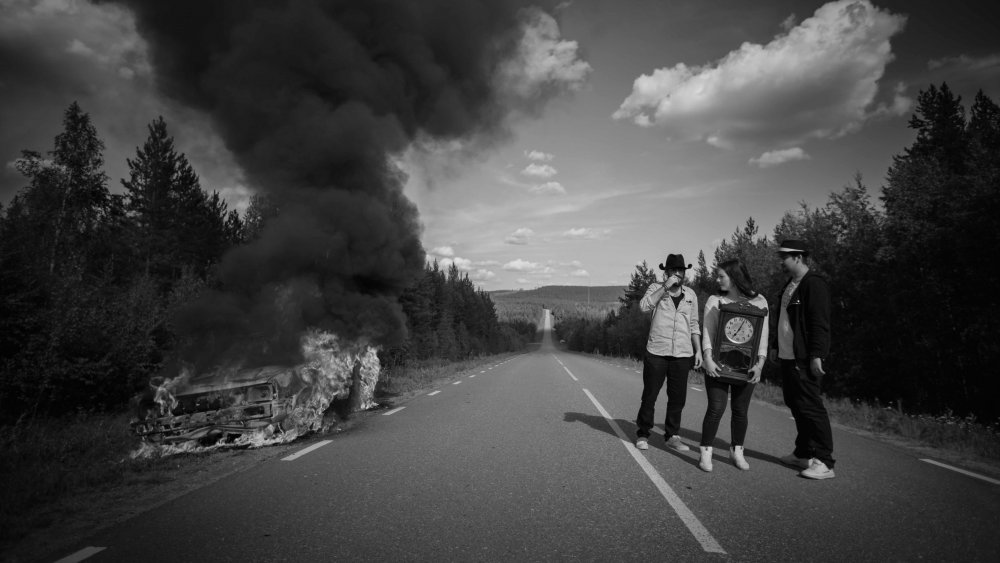
The Garbage Helicopter (2015)
Reminiscent of Stranger than Paradise with a dissonant Scandinavian edge, The Garbage Helicopter is Jonas Selberg Augustsén’s low-fi black-and-white feature almost entirely in the Romani language. Three Roma youths abscond on a road trip across the Swedish countryside to deliver a wall clock to their grandmother; their father, who runs a garage, gives them a useful roll of bubble wrap for their journey. It’s wilfully quirky perhaps, but Augustsén’s formal skills are impressive. Artfully commanding a series of mostly static, tableaux style shots, the film has a curious rhythm all its own. Beyond that, The Garbage Helicopter contains an oblique but barbed commentary on modern ethnic prejudice — highlighting the nation’s less liberal impulses where the Roma are concerned.
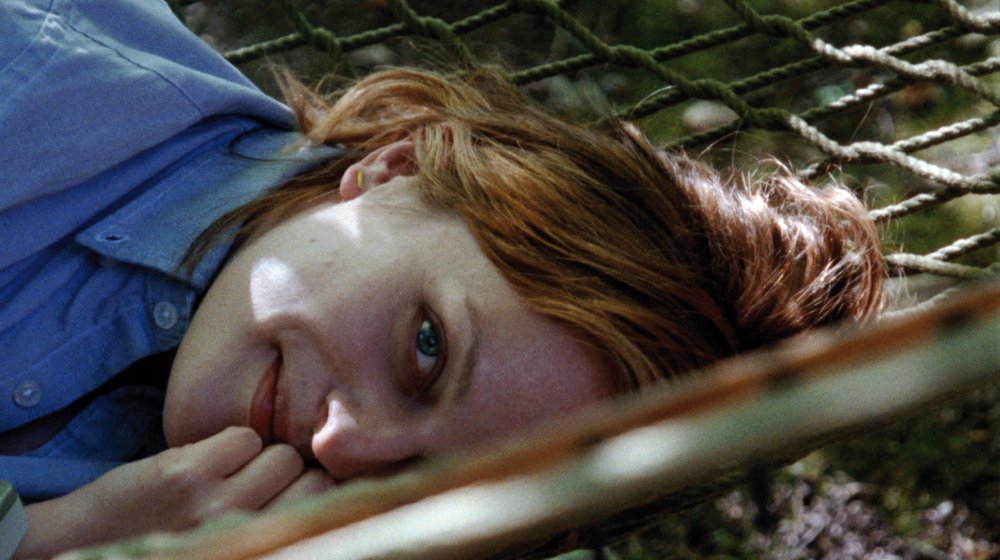
Queen of Earth (2015)
In Alex Ross Perry’s trenchant psychodrama Queen of Earth cracks first appear when Catherine, the daughter and assistant to a prominent New York artist, loses both her father and her long-term boyfriend in a short space of time. She makes her annual summer sojourn to her best friend’s secluded lakehouse, tear-streaked and seeking solace. A retreat from men is in order, but brittle, sharp-tongued Virginia (Katherine Waterson) seems to have an almost vampiric effect on Catherine’s strength. The friendship takes on a tit-for-tat cruelty, reaching jaggedly ugly depths — and giving Elizabeth Moss an indelible role as the psychically damaged Catherine.
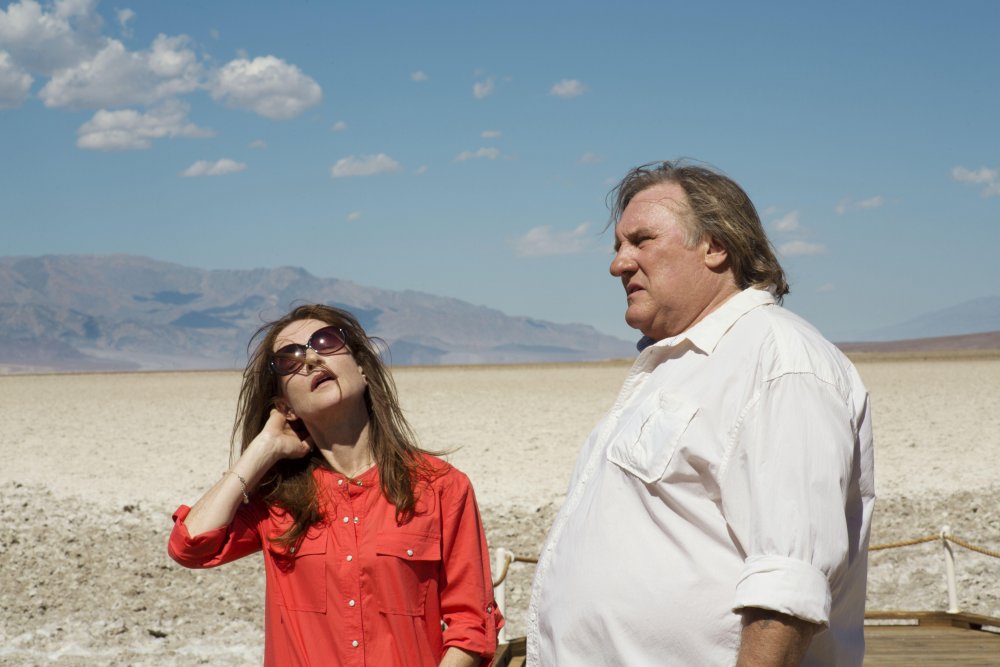
Valley of Love (2015)
Finally, Guillaume Nicloux’s Valley of Love takes a nuanced and poignant look at the long history between a pair of middle-aged exes — Gerard Depardieu and Isabelle Huppert — who make a pilgrimage to Death Valley, California after their son’s suicide. A showcase for its two legendary stars, the film offers a twinkle of self-awareness about their fame and status. Nicloux favours an unobtrusive camera, trailing his characters from behind as they travel beneath an oppressively hot desert sun. With a kind of light, organic humour originating from the French/American culture clash — and from Depardieu’s grumpy physical presence — the film is a study of grief that’s never maudlin.
Vintage Kiss Me Kate posters
These little beauties are two original 1950s posters for the 3D musical classic Kiss Me Kate, which screens in a beautifully restored new version at BFI Southbank this afternoon.
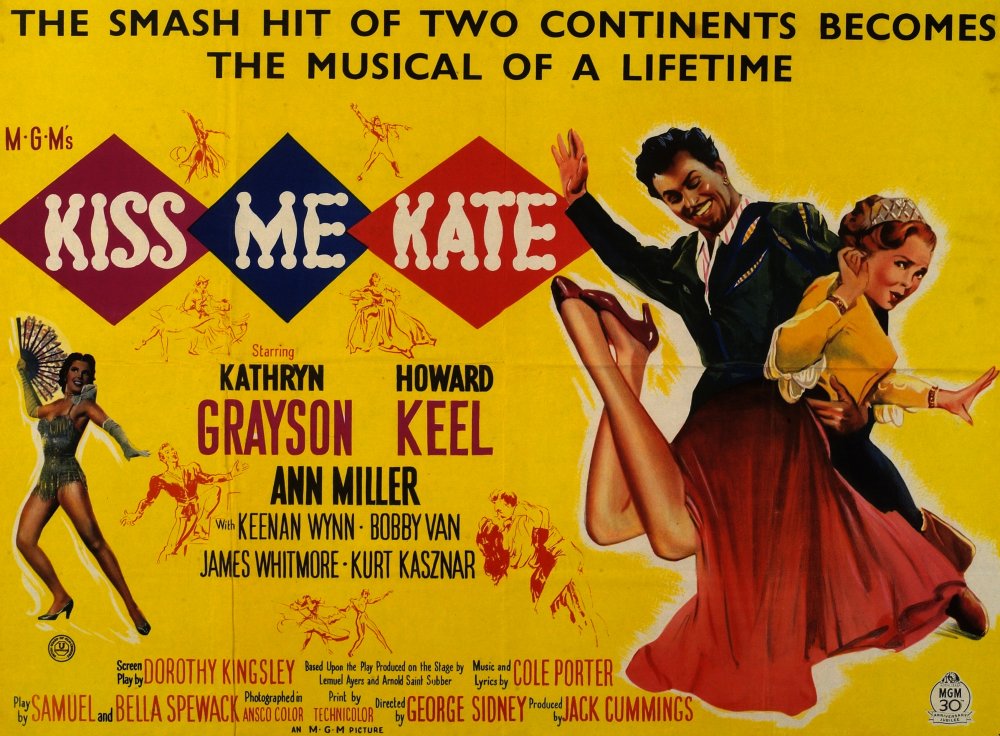
Kiss Me Kate (1953) poster
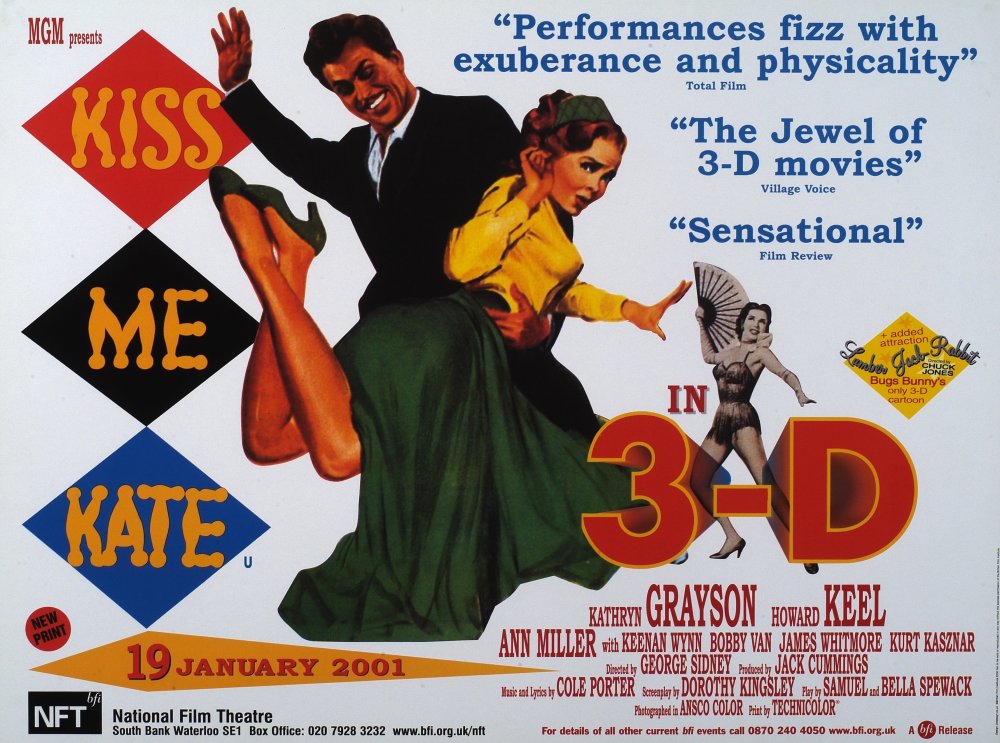
Kiss Me Kate (1953) poster
Sadly they don’t make posters like this anymore, but then nor do they make musicals like Kiss Me Kate. Says curator Robin Baker: “‘If she says your behaviour is heinous, kick her right in the Coriolanus’. Cole Porter took Shakespeare’s The Taming of the Shrew by the scruff of the neck and sent it to Broadway with all the screwball wit and battle-of-the-sexes brilliance of a His Girl Friday, along with some very smart rhyming couplets. This is one of the great musicals and its transition to the big screen is a breathless delight.”
Ayanda: ‘If you’re a female filmmaker making films for women, you’ve got to fight’
A bright, modern, female-centric look at the Yeoville district of Johannesburg, Sara Blecher’s Ayanda is just one of a number of African films playing at this year’s LFF. The film premiered last night, and there’s a second chance to see it this evening at the Ritzy. Matthew Thrift caught up with the director.
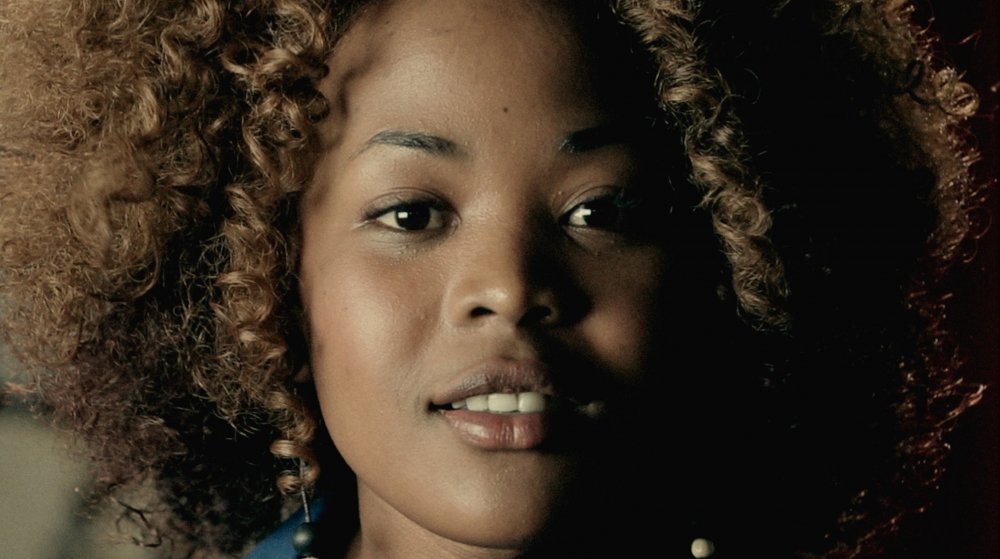
Ayanda (2015)
Ayanda opens with one of the characters speaking about what it means to be an African. What does it mean to be an African filmmaker?
It’s such a loaded question in South Africa, because of the history of race politics. It means having your heart in Africa. It encompasses so many different people, especially in a country like South Africa, where we have 11 languages, which means 11 distinct cultures. No one culture can own being South African, it’s about how you identify.
And what does it mean to be a female African filmmaker?
It means having to fight, it really does. I was reading an article recently that said that historically there have been a lot of female South African filmmakers, and it is increasing. But the reality is that in a country like South Africa, when people go to watch a movie, when they stand at the box office and make a choice about what they want to see, it’s mostly men who make those choices.
If you’re a female filmmaker, particularly if you’re a female filmmaker making films for women, you’ve got to fight. You’ve got to fight the people with the money, to get them to believe on you, and keep fighting to make sure that your point of view can prevail in such a male-dominated industry. Then, of course, you’ve got to fight to get people into the cinemas. It’s not that women don’t want to watch your movie, but that women aren’t getting to make the choices about which movies to watch.
There’s a diverse selection of African films playing this year at the LFF. How do you think African cinema is changing?
One of the things that Ayanda really grapples with is South Africa’s emerging youth culture. Young people have access to the internet, so they know what’s going on in Europe and America, they’re part of the global world, but at the same time they’re really hanging on to their African-ness. Hanging on to their culture and beliefs, while trying to find a way to marry these beliefs. We call them Afropolitans, young people who as au fait with the streets of New York or London, as they are the streets of Jo’burg.
But at the same time they’re truly African. That’s what I’m most excited about with African cinema at the moment, taking influences from all around the world, taking what’s great about South Africa and tying it to external, international influences.
Brixton’s Ritzy looking very fine this afternoon in this Instagram by lucybonnett…
From the archives: 24th London Film Festival poster
It’s 1980.
Akira Kurosawa’s comeback film Kagemusha has just opened the 24th London Film Festival.
Something called Raging Bull will close it.
And this is the poster.
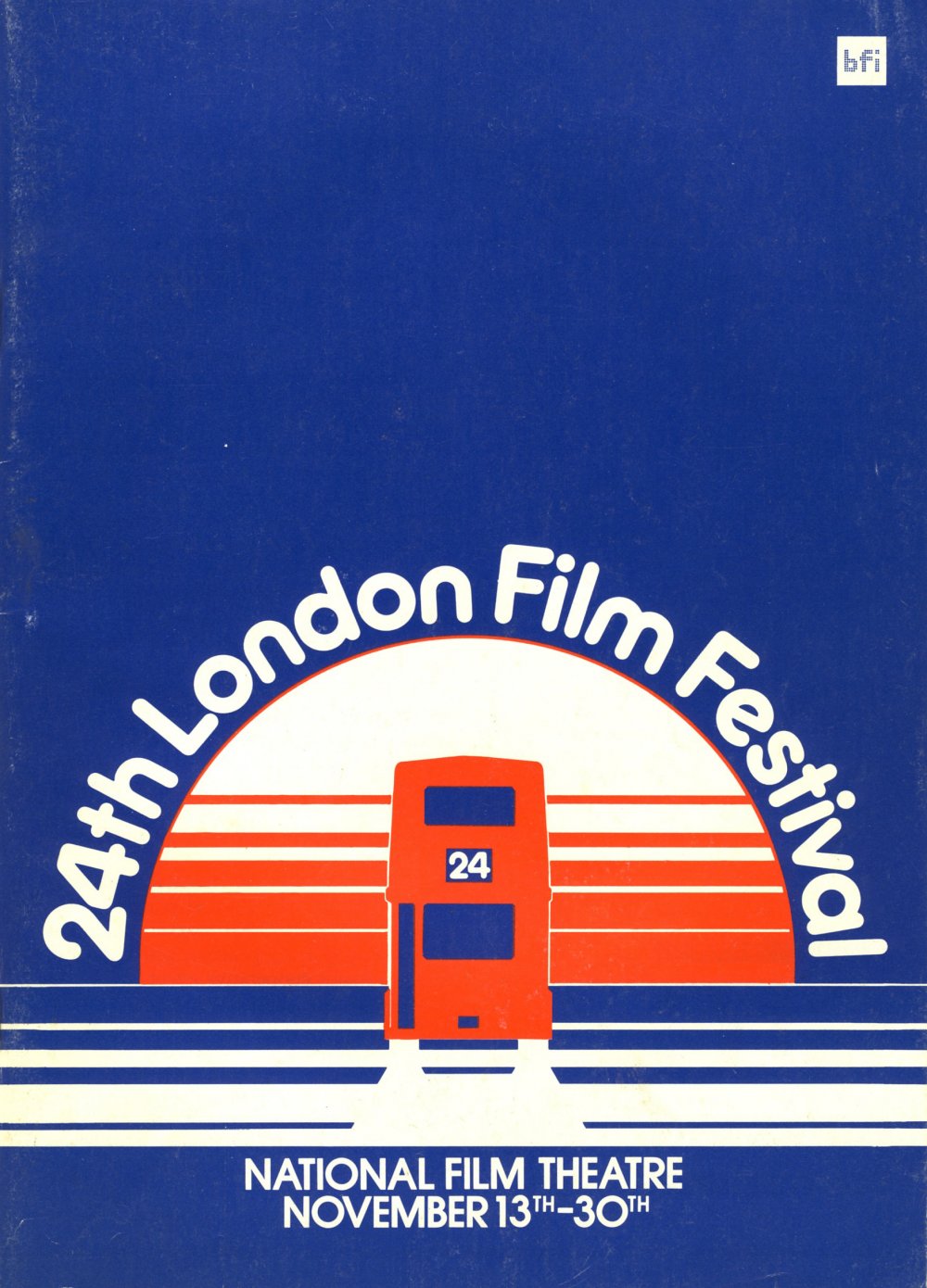
24th London Film Festival poster
‘Some fathers and sons go fishing together - we make films’ - Blood of My Blood
Amid a promising line-up of Italian films at this year’s LFF, Marco Bellochio’s latest feature, Blood of My Blood, spans four centuries of national history. It also features the director’s son Pier Giorgio —an actor and producer — in a dual starring role as both a 17th-century aristocrat and a corrupt modern tax inspector. Christina Newland got a chance to have a chat to Pier Giorgio about the film…
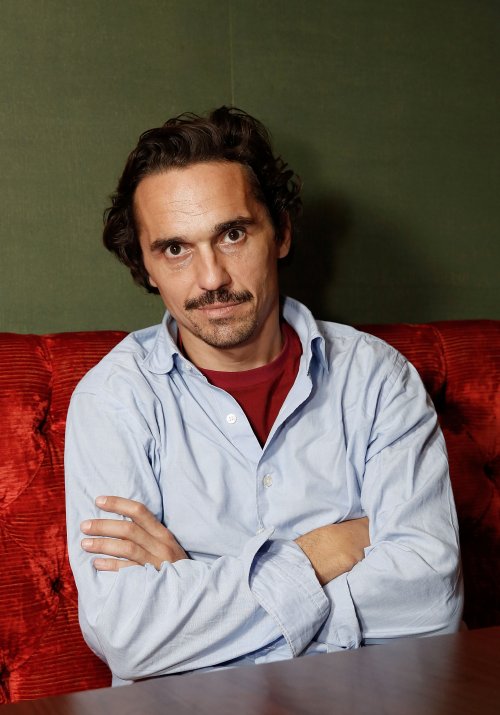
Actor Piergiorgio Bellocchio attends the FilmMaker Afternoon Tea, part of the BFI London Film Festival
Credit: John Phillips
You’ve said that you’ve been working onset with your father since being five years old. How collaborative is the filmmaking process between you, and how has that working relationship developed?
The relationship between me and my father has been molded by our professional relationship. So through discussions, fighting, reconciliation — that has molded our relationship. And at this stage — the process that Marco undertakes is a solitary creation to begin with, then he approaches the first tier of people who are nearest to him — family and people in the creative process. So with his wife, who edits the film, with his son who shoots the film, and with his son-in-law who also takes part.
In these past 35 years, a deeper understanding has been achieved. I don’t need to ask the questions that I would have to start with — so if Marco was going to shoot a scene in this room, I would be able to tell you where the starting point and end point for the camera would be.
If actors in the movie want to know something, and I’m not in front of the camera myself, they come to me to ask directions and they know it will be a faithful approximation of what my father would want from them. Some fathers and sons go fishing together, go to amusement parks — with us we’ve always made films, so that’s the common ground.
In both parts, but particularly in the first portion of the film, you play a very morally ambiguous character. How do you get yourself into the mindset of a man who’s willing to stand by and watch a woman be tortured for an abstract religious idea?
I think it’s the work and the job of the actor to find “the other”. But in a way, the answer is two pronged. In Marco’s scripts, any actor will find lots of hints and details on how to explore and portray that character. The problem in the job of the actor isn’t so much the getting into morally shaky ground as it is how you come out of it. You have to backtrack. Empathising might be the easiest part.
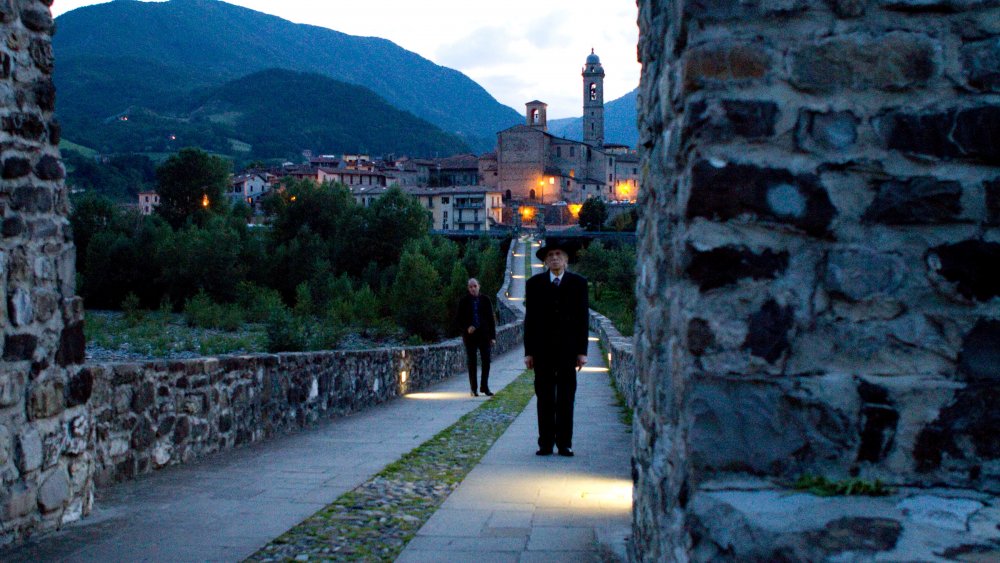
Blood of My Blood (2015)
The 17th century world you recreate in Blood of My Blood is so vivid. How important was historical research to you in the making of the film?
Most of the research was based on the legal proceedings of the inquisition. So not as much research went into costumes, or type of bench they used to have — but a great deal went into the legal proceedings. So the trials by water and fire were used at the time of the inquisition and getting that process right was important to the story.
The moment before the curtain rises. A nice bit of pre-Bone Tomahawk excitement in this Instagram by emaob1…
Rocco and His Brothers – A feast of feeling
Simran Hans urges students, freelancers and festivalgoers to spend their Monday morning in postwar Milan, by way of Luchino Visconti’s Rocco and His Brothers (1960). A new 4K version of the heartbreaking tragedy, lovingly restored by Cineteca di Bologna at L’Immagine Ritrovata laboratory, plays tomorrow at Vue West End.
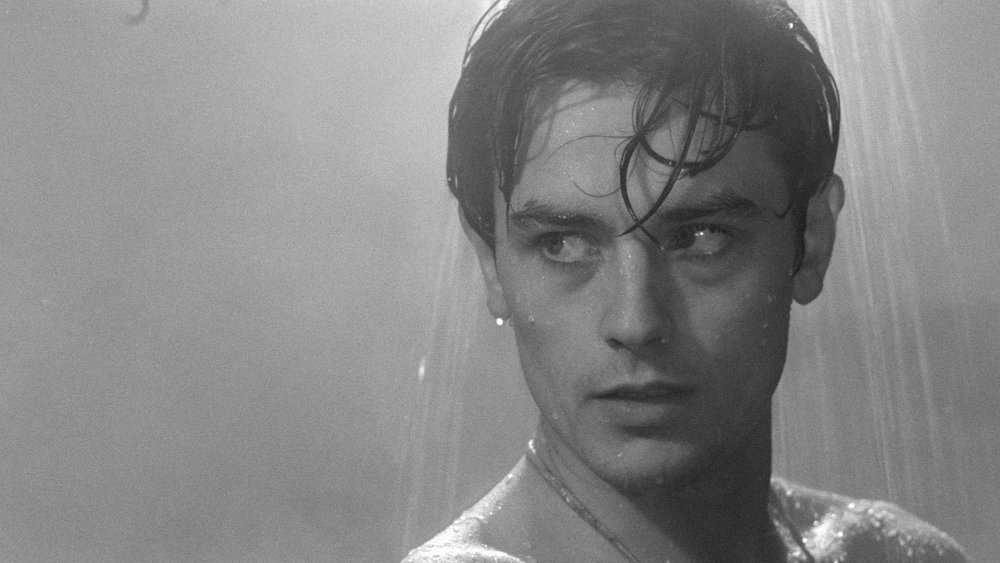
Rocco and His Brothers (1960)
What’s it about?
Five absurdly handsome brothers and their overbearing mother move to industrial Milan in an attempt to escape their former life of poverty in Italy’s rural south. Sibling rivalries lead to crimes of passion in this sweeping, three-hour melodrama about class conflict, family values and the perils of modernism in postwar Italy.
Who made it?
Italian auteur Luchino Visconti (Ossessione, Il gattopardo). Visconti’s films explore the political tensions of Italy’s social structure through lush, emotional melodrama. The film stars Annie Girardot as misunderstood prostitute Nadia and French heartthrob Alain Delon as the titular Rocco.
What’s special about it?
This restoration includes the reinsertion of two scenes that had been cut by censors, and ensures that Giuseppe Rotunno’s sumptuous black-and-white cinematography is as gorgeous as it ever was. Rotunno and Visconti find a cold, hard beauty in the grim industrialism of Milan’s slums as well as the planes of Delon’s chiselled face.
Fans of the French actor know and love him for his calculated opacity; hints of interiority flicker behind his blue-eyed smoulder. In Rocco and His Brothers, Delon swaps subtlety for full-throttle melodrama as noble, naive middle brother, pummelling his audience with a devastating performance that is all vulnerability and pain.
Annie Girardot is just as remarkable as the film’s strong female lead. A smart, fiery loud-mouthed call girl wrestling with her independence, Nadia is a thoroughly modern creation – and despite being punished by the film’s narrative, one of the most exciting, endearing and complicated tragic heroines in Visconti’s oeuvre.
Day 5 on Twitter
It’s fair to say that it’s not often you get Johnny Depp and Benedict Cumberbatch on the same red carpet. But it’s happening tonight. And very soon tonight. They’re here for the premiere of gangster epic Black Mass at 19.15 tonight.
There’ll be photos here. But while we wait, it’s time to find out how everyone’s LFF afternoon has been…
The Black Mass arrivals have begun…
Cumberbatch on Black Mass
A night on the red carpet with Depp and Cumberbatch
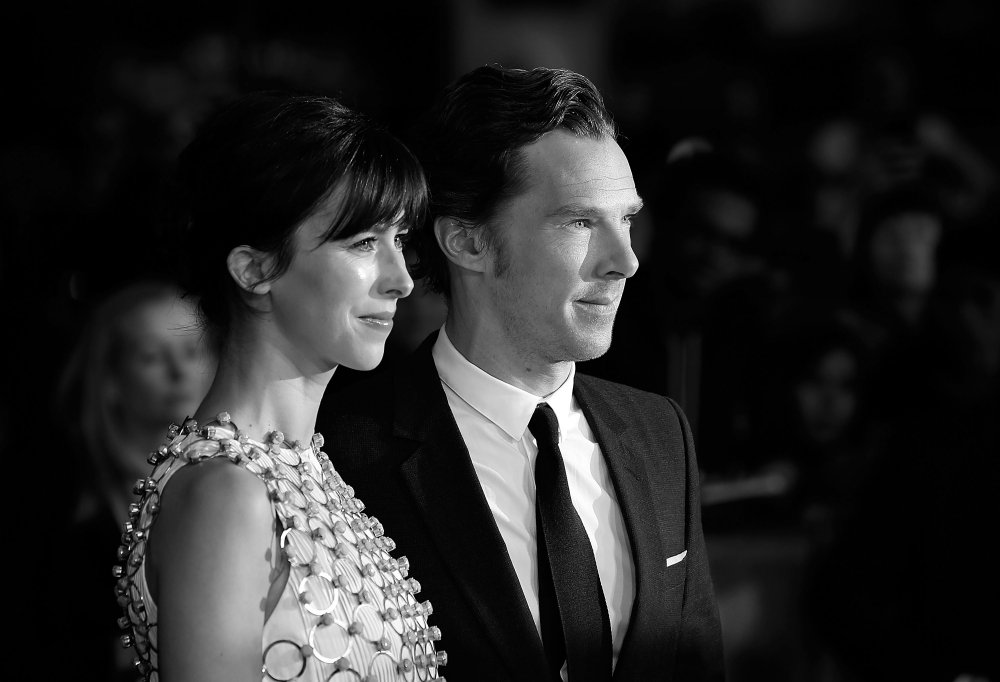
Benedict Cumberbatch and Sophie Hunter attend the Black Mass Virgin Atlantic Gala screening

Johnny Depp poses for a camera on the red carpet for Black Mass
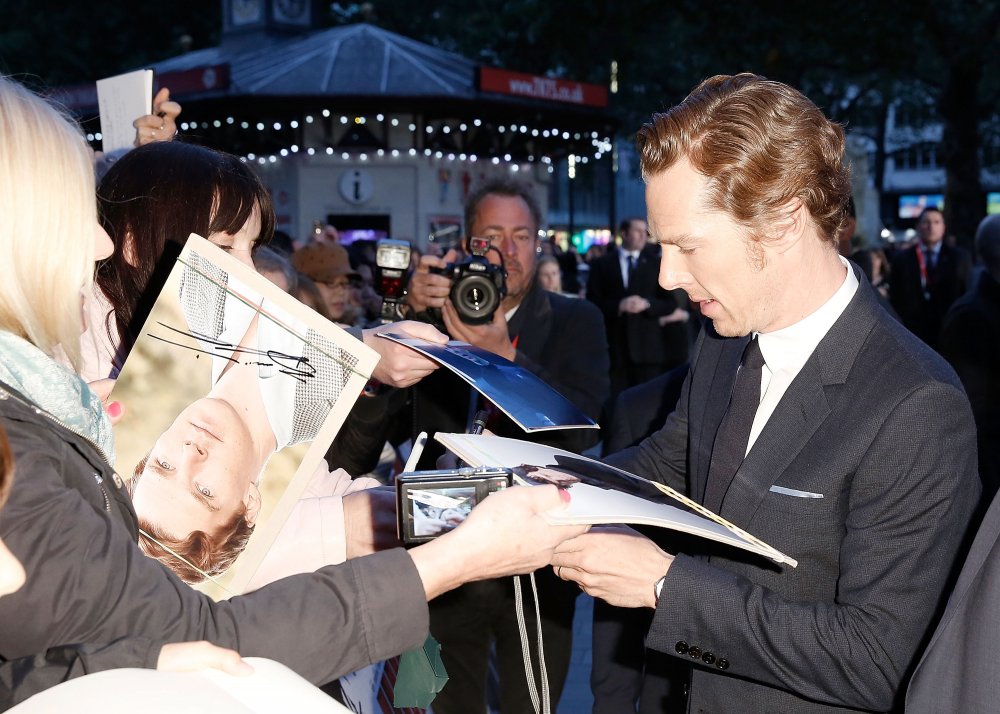
Benedict Cumberbatch signs autographs before the Black Mass Virgin Atlantic Gala screening
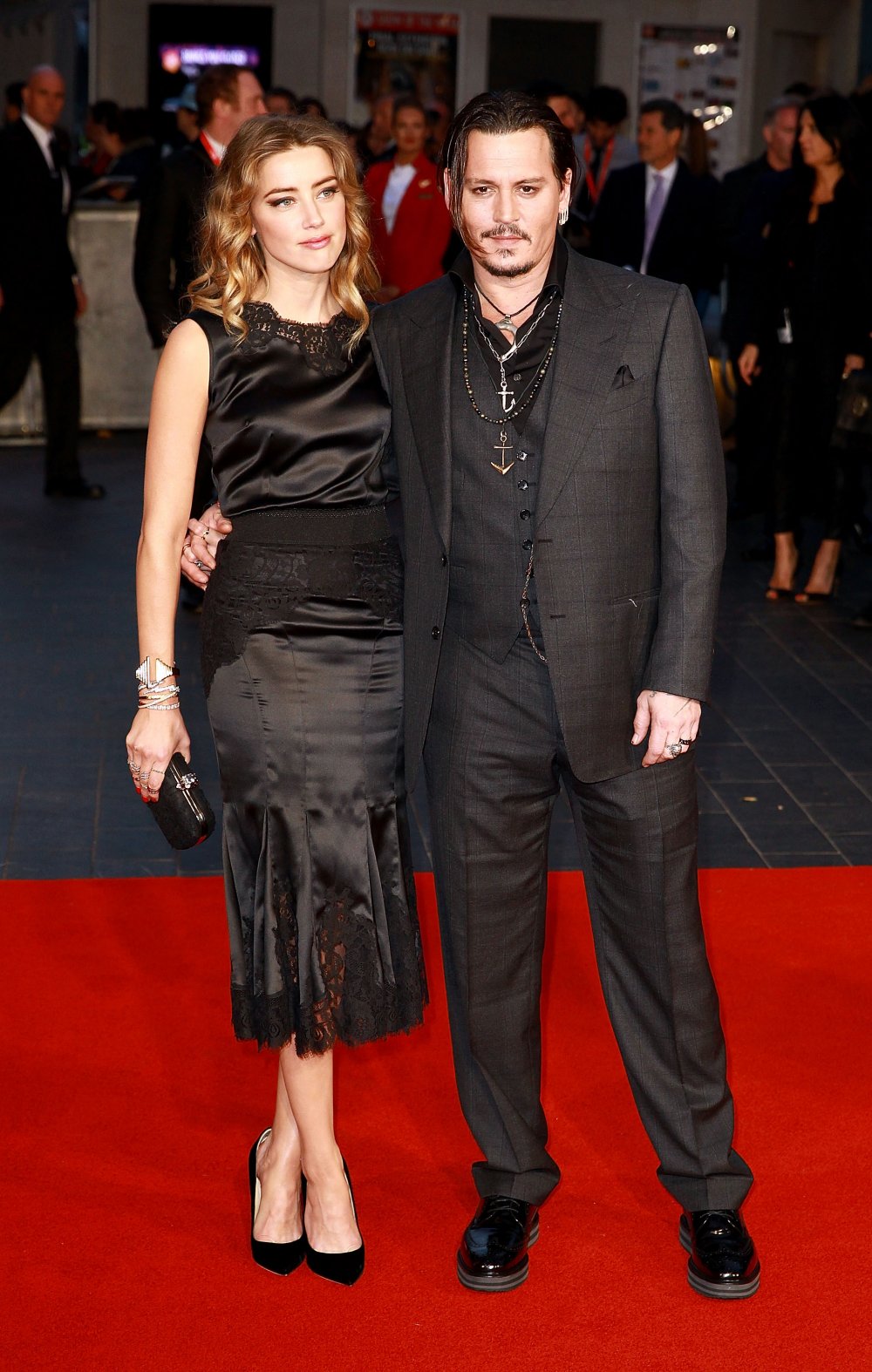
Amber Heard and Johnny Depp on the red carpet for Black Mass
Brooklyn first reactions
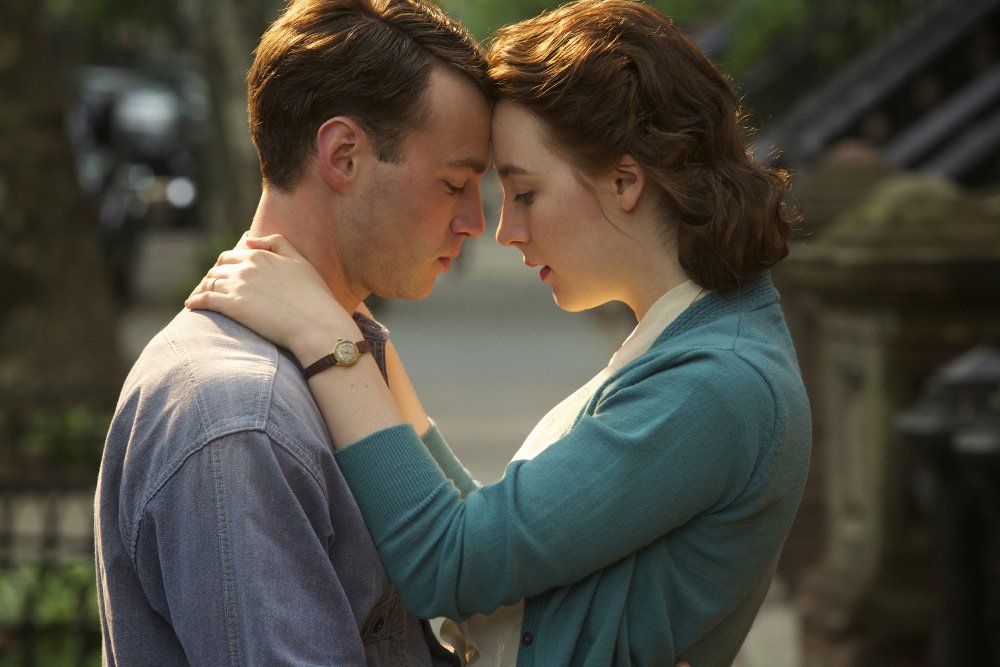
Brooklyn (2015)
Day 6 at LFF offers up The May Fair Hotel Gala screening of Brooklyn, the eagerly anticipated adaptation of Colm Tóibín’s best-selling novel. It’s Nick Hornby’s second consecutive LFF Gala screenplay following his work on Wild (2014) last year and again features a strong female lead, with Saoirse Ronan starring as a woman who journeys from post-war small-town Ireland to New York.
Following this morning’s press screening, critics took to Twitter to give their views…
‘At the very core of understanding is that the role of a father and a mother is equal.’ – Gayby Baby
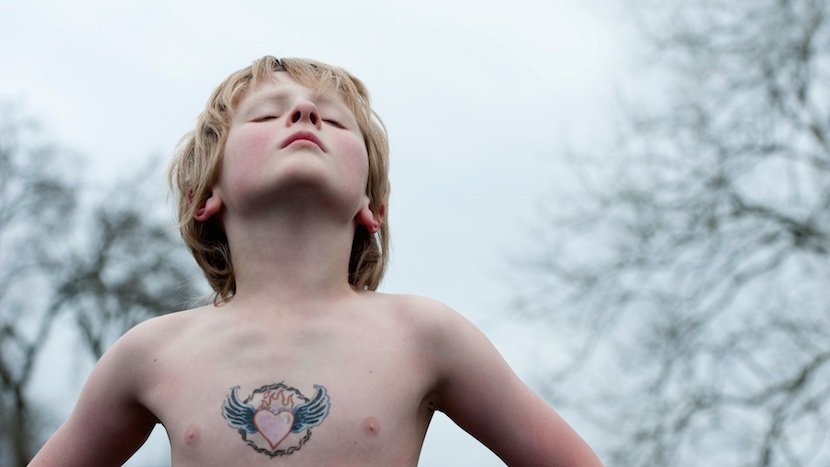
Gayby Baby (2015)
Maya Newell’s documentary Gayby Baby has its second screening at BFI Southbank this afternoon. The film follows the lives of four children with gay parents and is a candid, tender portrait of modern Australian families. Matthew Thrift caught up with Newell to discuss changing attitudes and the challenges facing gay parents.
How did you get the children in the film to open up so candidly?
When I first met Ebony, it was on Fair Day in Australia, kind of like our Gay Pride. I was casting around for kids to be a part of the film, and had noticed her incredible green eyes. Her mums had just got together and she was dealing with the transition into having gay parents, so I told her my story, which is that I grew up with lesbian mums myself (they’ve been together for thirty years). She had never met anyone who was older than her who had gay parents. It was a real eye-opener and she wanted to get to know me, but I think there was an intimacy that was created with all of the kids, being able to connect with them and share my own story, and maybe ask them questions that perhaps even their parents and friends wouldn’t think to ask, from another gayby — what I like to call ‘culturally queer.’
How have attitudes changed since you were growing up?
The biggest thing is the shift in stigma and discrimination in our families. If you’re growing up in an inner city suburb of any western country, you probably know lots of kids who have same-sex parents, in fact you probably even gain some social capital from having gay parents, which certainly wasn’t the case when I was growing up. A beautiful example is a friend of mine, Raj. He’s 32 and grew up in the western suburbs of Sydney telling people that he had an aunt and a mother. His whole family lived in the closet for his entire schooling, but now for the first time in history, if you’re LGBT, you can expect to have a family.
Are there still many legal challenges involving adoption for gay parents?
There are lots. Not having marriage equality is a really significant factor. State by state [in Australia] it’s incredibly inconsistent in terms of adoption: in more than half it’s still illegal. Graham, one of the characters in the film, was one of the first children to be adopted in New South Wales when the law changed in 2010. It was only in 2010 that you could have two women on your birth certificate. Our film was actually banned by the education minister in New South Wales, so it’s not allowed to be shown in schools. I don’t perceive it to be an especially controversial film, but we’re working through that now, it was front-page national news.
What were the biggest challenges you found as a female filmmaker making an LGBT documentary?
I don’t think I’ve ever experienced inequality because of my gender, but maybe that’s also because of how I step into things. I think gender equality has a really interesting role to play in all of our families, because I think until we deal with it, we won’t be accepting [of] our families. At the very core of understanding is that the role of a father and a mother is equal. You have to think that a woman can do everything that a man can do and vice versa before you accept our families. In that way I had two strong women who showed me that there were myriad ways to be a woman growing up, which I think has benefited me taking charge as a female director.
Brooklyn: “I really feel the heaviness you experience when you leave home for the first time and haven’t settled anywhere.”
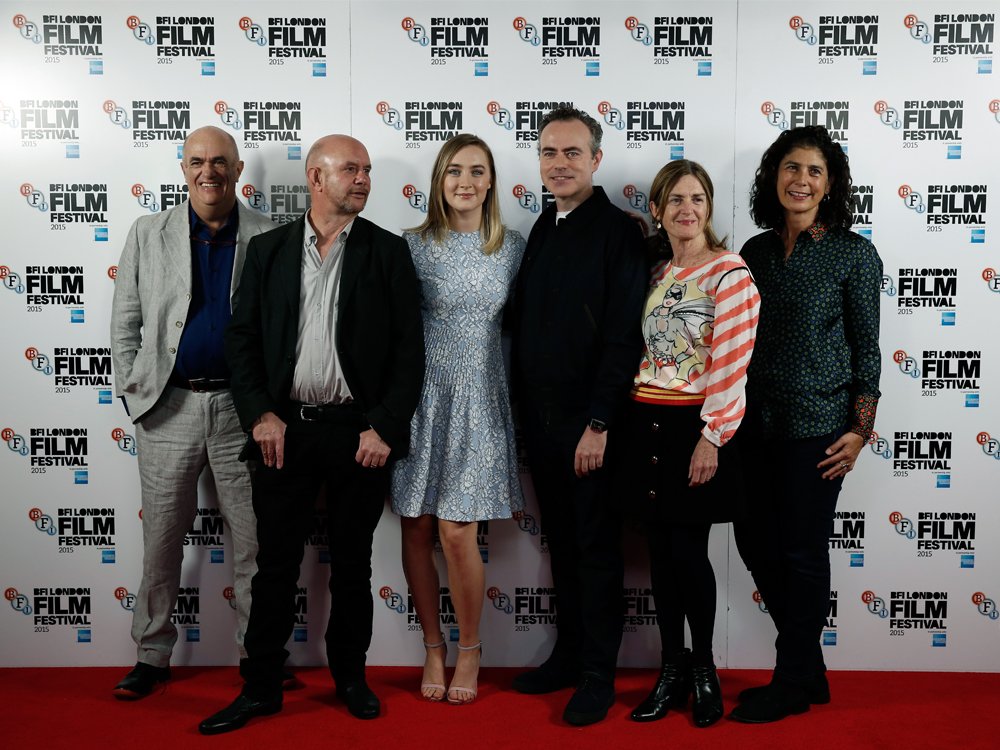
Novelist Colm Tóibín, screenwriter Nick Hornby, actor Saoirse Ronan, director John Crowley and producers Finola Dwyer and Amanda Posey attend the Brooklyn photocall during the BFI London Film Festival
Saoirse Ronan’s Ellis faces a pair of tough choices in Brooklyn. She can stay in her Irish homeland or head to the new promise of America; she can bet on the refined certainties of one suitor or get swept away with the passion and dreams of another.
John Crowley’s adaptation of Colm Tóibín’s award-winning novel is screening tonight as The May Fair Hotel Gala. This morning Ronan, Tóibín and Crowley joined producer Finola Dwyer and screenwriter Nick Hornby at a press conference. Matthew Thrift was there to capture the highlights
Finola Dwyer on the universal nature of the story
“I read the novel very early. It was my story, my mother’s story, and the more I thought about it, it’s a very universal story, where you end up living somewhere other than where you grew up.”
Colm Tóibín on being adapted
“The world that Saoirse’s character navigates in the book is one where so many people are kind to her in one way and so unpleasant to her in another. That amount of flavour in the book, that comes from tricks of speech or the way that someone’s face moves, I think the picture captured better than the book in some ways.”
Saoirse Ronan on her connection to the character
“I really do feel the heaviness you experience when you’re homesick, when you leave home for the first time and haven’t fully settled anywhere, floating between two different places. From the time I met John initially to discuss the film, to the time we actually made it a year later, I had moved away too, so I was right in the middle of that heaviness that Colm and Nick describe so well in their writing.”
John Crowley on the film’s international production challenges
“We had three crews, but Saoirse was the only actor who was consistent in the process. The shoot felt like it had multiple personalities, which was kind of appropriate to what she goes through. Shooting out of order is always challenging when you’re trying to do something which amounts to a very subtle transformation.”
Nick Hornby on adapting another writer’s work
“It’s very frightening because the book is so loved and so special to its readers, so, of course, there’s a tension about messing it up. Colm was so incredibly generous, and hands-off in a way that was so wise. We met once and Colm told me I should’t say ‘rashers of bacon’, it’s just ‘rashers’. And that was pretty much it, we still seem to be friends as a result.”
Saoirse Ronan on working with Julie Walters
“She’s brilliant, but I just kept picturing Dinner Ladies the whole time, and she would go into it a bit between takes. She’d do a little thing with her face, or she’d shake a bit, that made me just think of that. I was just in awe that she was in the film at all.”
Colm Tóibín on the locals
“Ireland has a very strong literary culture, but not a strong film culture, so the idea of those streets being in a film seemed really important, elevating the town and giving them a sense if it in a new way. Most people I spoke to couldn’t believe Saoirse got up at 6am to go to work. In my experience, if you see someone wandering around Enniscorthy at 6am, it usually means they’ve been out late.”
Son of Saul director: digital is ‘the first regression in the history of cinema’
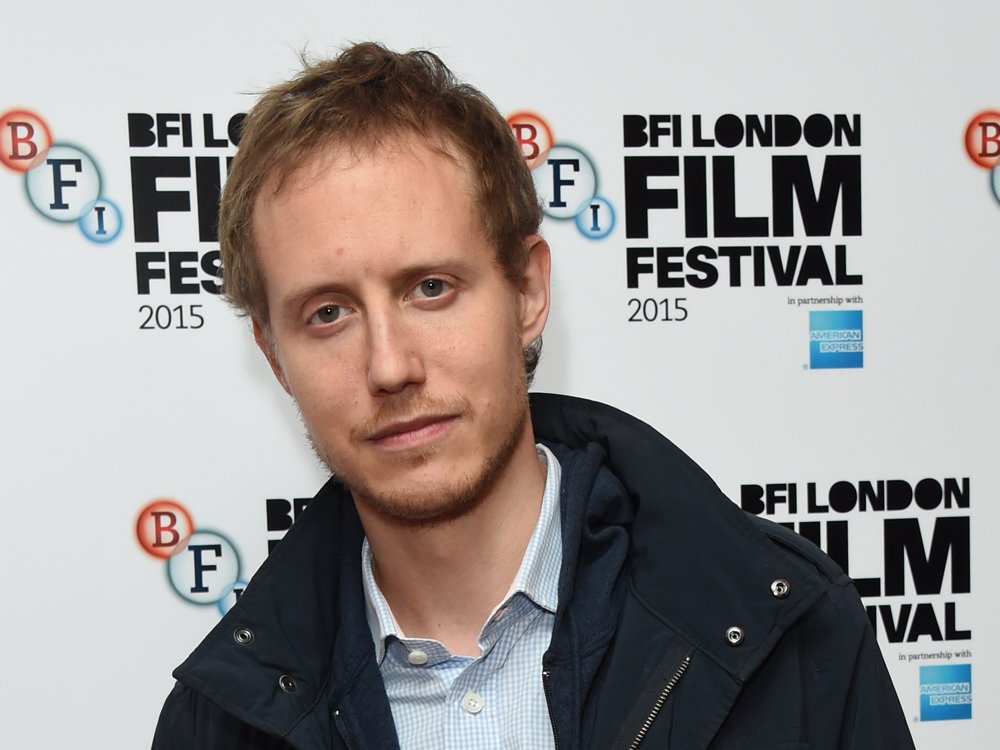
Director László Nemes at the Son of Saul photocall during the BFI London Film Festival
László Nemes’s harrowing masterpiece Son of Saul deservedly won the Grand Prix at this year’s Cannes Film Festival. Ben Nicholson heard Nemes discuss the Holocaust drama and explain where he stands on the film versus digital debate.
“I can see a few people with a lot of popcorn and I’m always impressed by the optimism of some people,” chuckled László Nemes to the sold-out audience at the Curzon Soho screening of his staggering debut Son of Saul. “This is the intended format,” he added, referring to the 35mm projection he had specifically requested for the sceeening, “so I’m so glad you’re here.”
He returned to the subject of digital projection in his post-screening Q&A. “It’s a jpeg definition — I’m not okay with that. It’s the first regression in the history of cinema.” His love of celluloid may have been an underlying reason for his decision to shoot on film, but there was also a very specific one. “We needed the depth of image,” he revealed. This is evident from the bold visual style of his film, which holds its eponymous protagonist in close-up focus throughout with the horrors of the Holocaust occurring at the edge of the frame. “You feel the frenzy, but you cannot take in all the events going on around you.”
His narrative unfolds as a visceral and harrowing take on Aleksandr Solzhenitsyn’s One Day in the Life of Ivan Denisovich and grounds life at Auschwitz-Birkenau in a compelling and unique way: the production-line efficiency of slaughter is seen through the eyes of a Sonderkommando – a prisoner forced to work with and for the Nazis.
When asked by an audience member why he felt the need to make this film now, Nemes explained that those who experienced the events depicted are now elderly and passing away. He didn’t want to use the established style of previous films on the subject which, he feels, “look like fantasy films”. “I wanted to talk to the viewers in the present.” Few viewers are likely to argue with the immediacy and urgency of Nemes’s methods in achieving such spectacular results.
South London docs tonight at the LFF
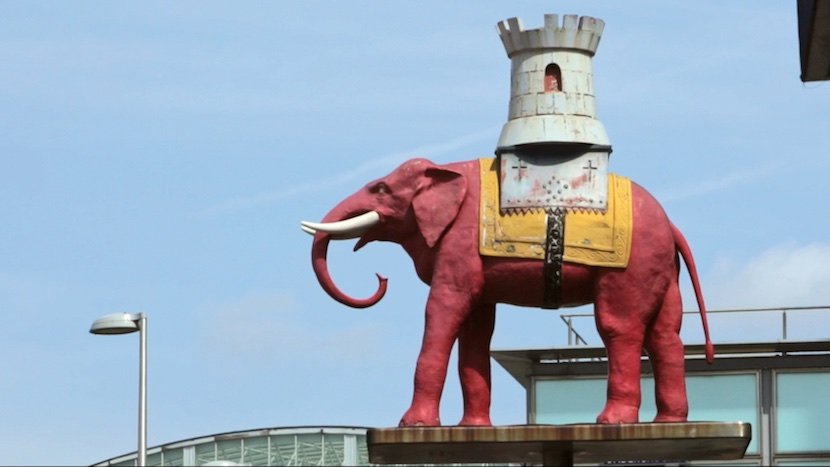
Elephant Days (2015)
For those that aren’t heading to Brooklyn tonight, there are still a few tickets left for a pair of fine transpontine documentaries making their inaugural appearances at the LFF tonight. Elephant Days sees directors James Caddick and James Cronin follow the Maccabees as they create their fourth album, ‘Marks to Prove It’, in an Elephant and Castle recording studio. Aside from the band and its creative process, the film takes a poetic look at the area and its eclectic inhabitants and discovers there’s far more to the Elephant than just a down-at-heel shopping centre and one of London’s most dangerous roundabouts.
Sarah Turner’s Public House, meanwhile, is set four miles to the south in Nunhead. It centres on The Ivy House, a local pub that was set sold to be sold to property developers and has since been saved. It’s a genre-blending doc that turns community action into a participatory opera. As the BFI’s Helen de Witt writes: “This is not just a film about resistance; it is a film that itself refuses categorisation, reinventing documentary reality as a polyphonic clamour of musical subjectivities.”
Elephant Days screens in the Sonic strand at Cineworld Haymarket tonight at 6.30pm, 3.45pm Saturday 17 October at Brixton Ritzy and Vue Islington on 8,45pm Sunday 18 October.
Public House screens at Picturehouse Central at 8.45pm tonight and Rich Mix on Saturday 17 October 3.20pm.
Red carpet highlights from Brooklyn and The Idol
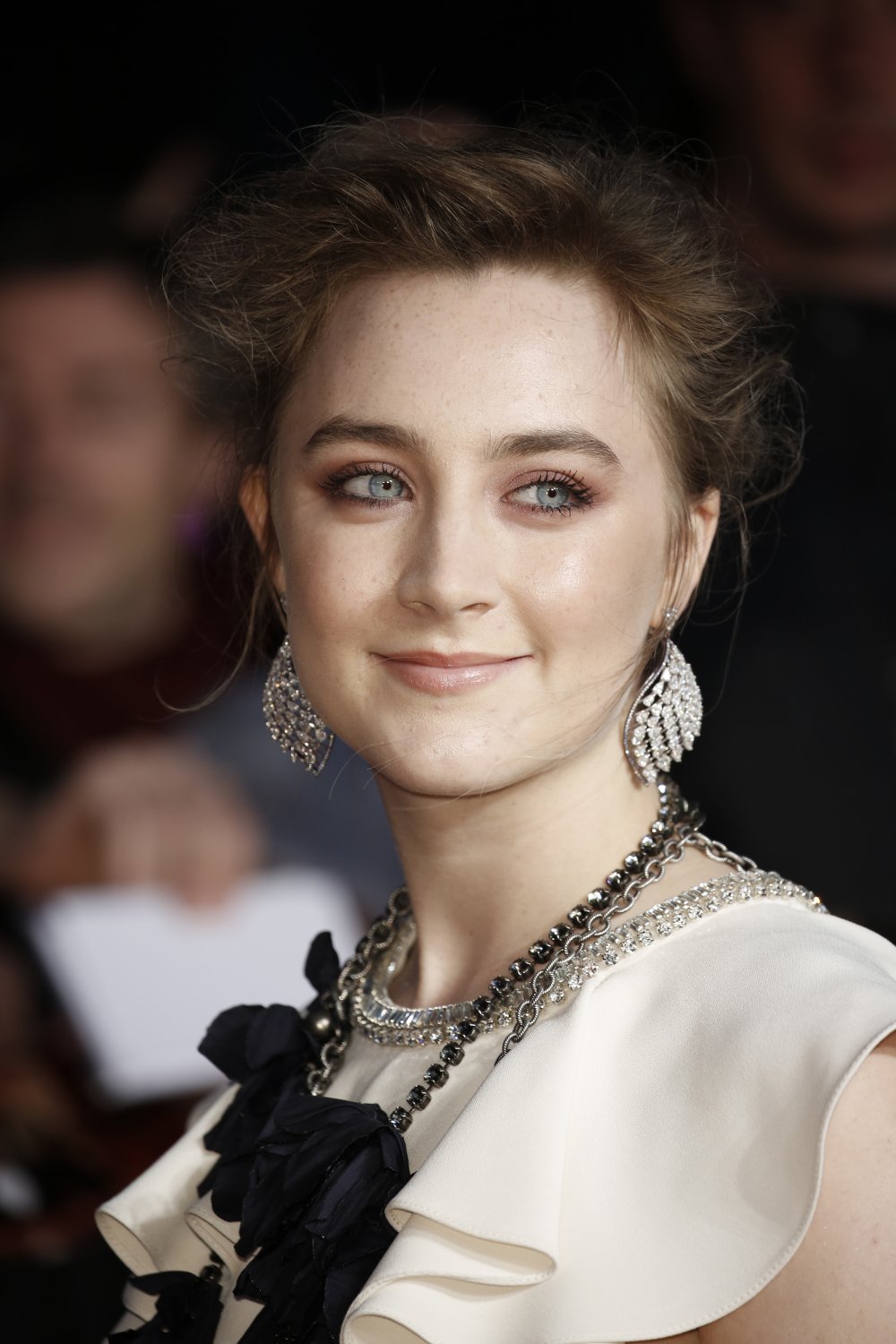
Saoirse Ronan attends the Brooklyn May Fair Hotel Gala

Actors Eve Macklin, Eva Birthistle, Saoirse Ronan, Emory Cohen and Eileen O'Higgins attend the Brooklyn May Fair Hotel Gala
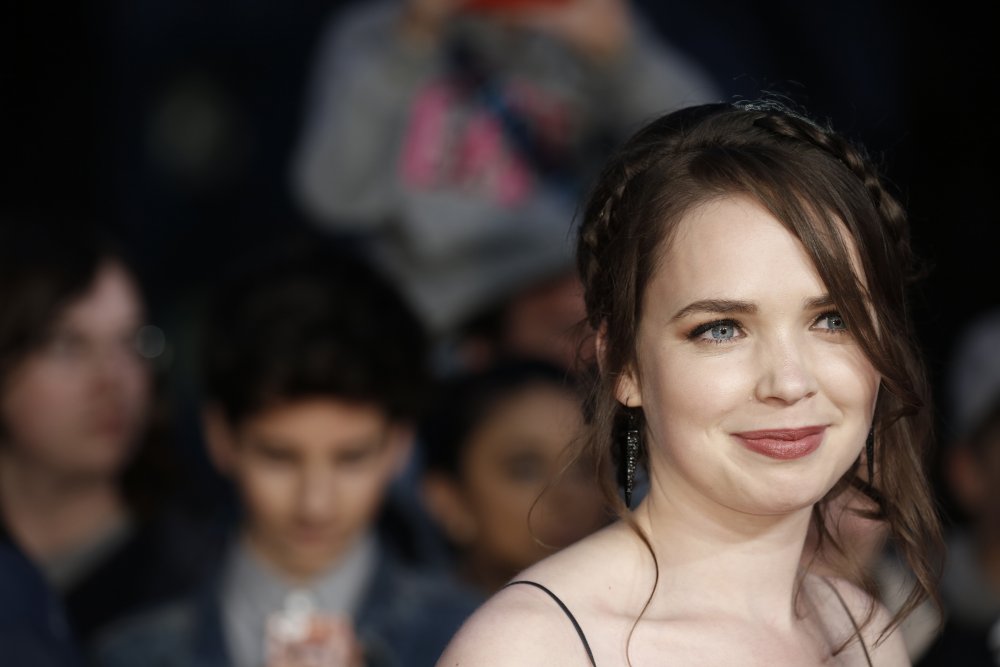
Actress Eileen O'Higgins attends the Brooklyn May Fair Hotel Gala
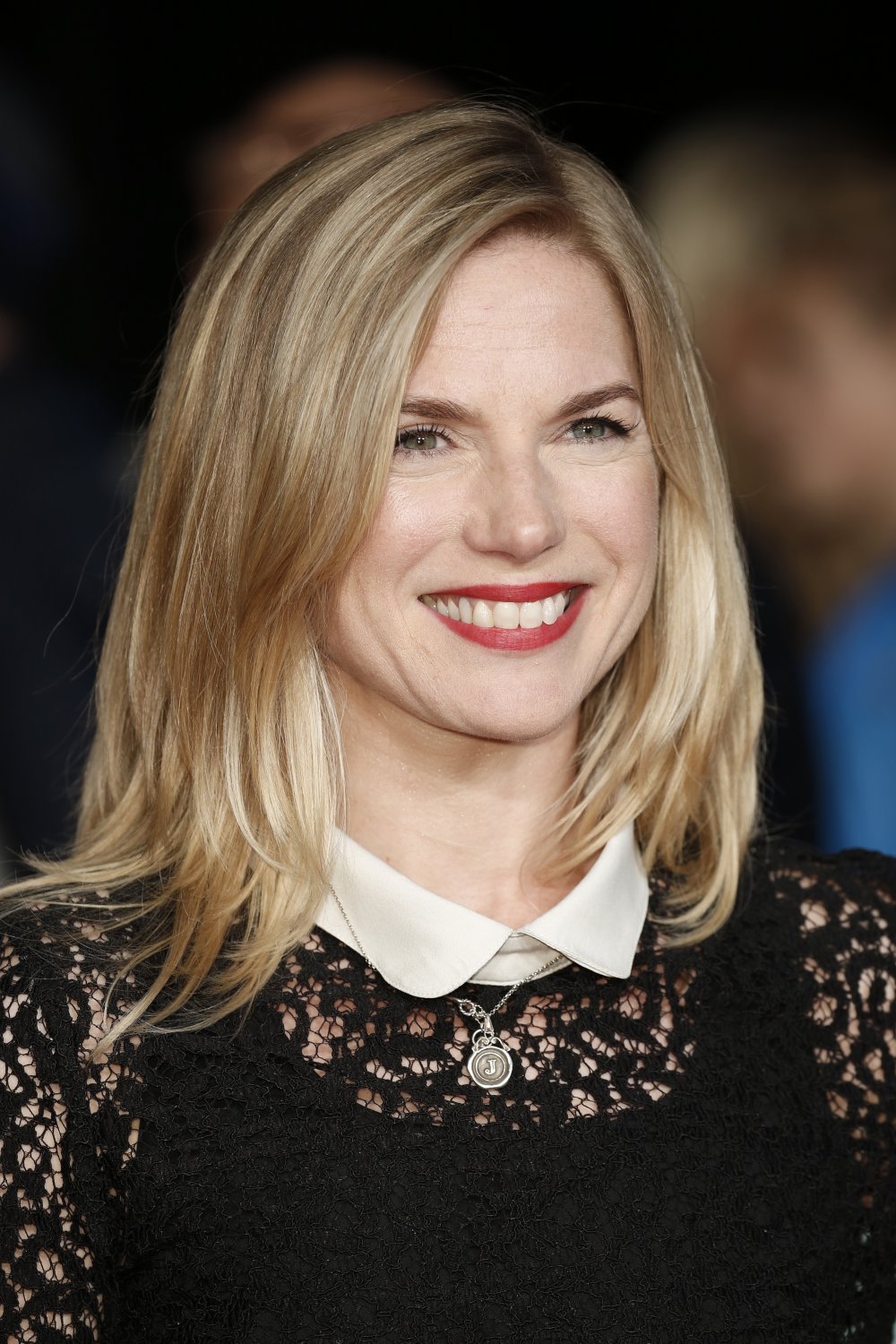
Actress Eva Birthistle attends the Brooklyn May Fair Hotel Gala
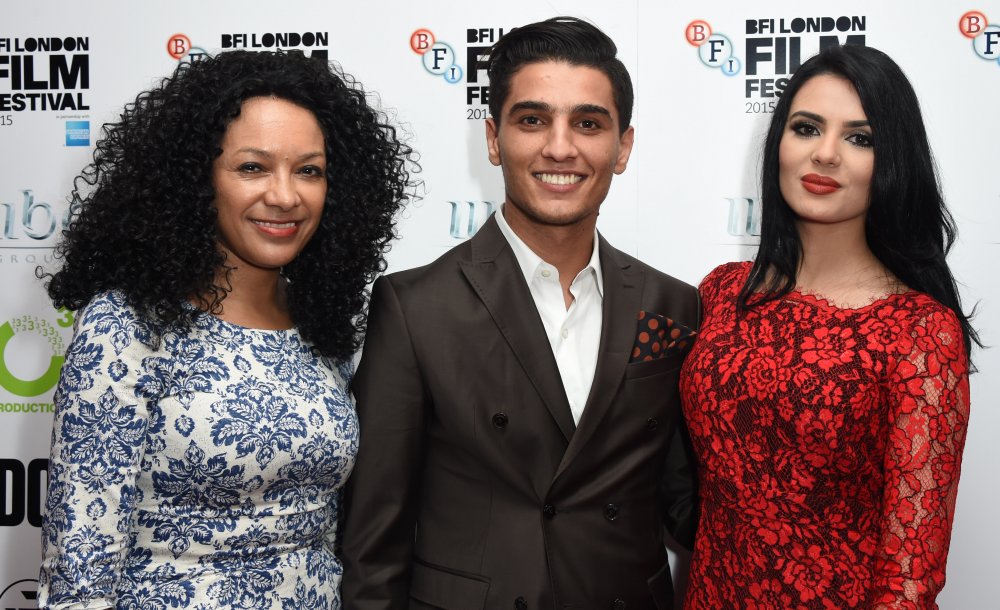
Kanya King, Mohammed Assaf and Veena Malik attend The Idol Sonic Gala, in association with MOBO Film
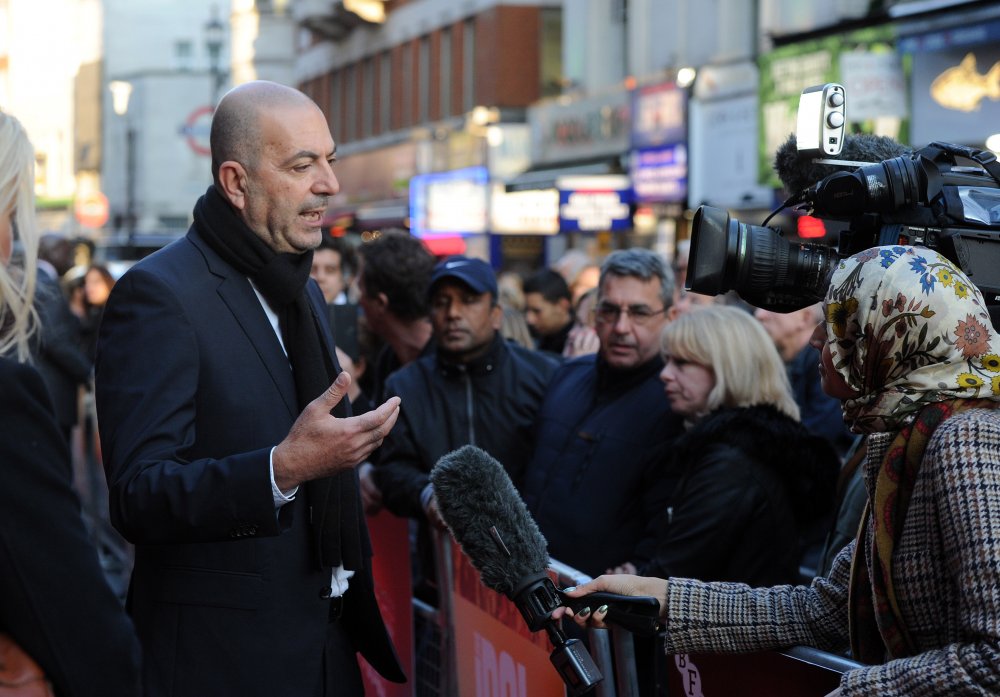
Director Hany Abu-Assad attends The Idol Sonic Gala, in association with MOBO Film
'Sitting on Saturday night watching television with your family is one of the great pastimes of America' - Live From New York!
Bao Nguyen’s Live From New York! charts 40 years of political and cultural commentary on the US TV show Saturday Night Live. Featuring terrific access and a host of sketches from across the show’s history, the film played to packed festival houses over the weekend. Matthew Thrift caught up with Nguyen at yesterday’s Filmmaker Afternoon Tea.
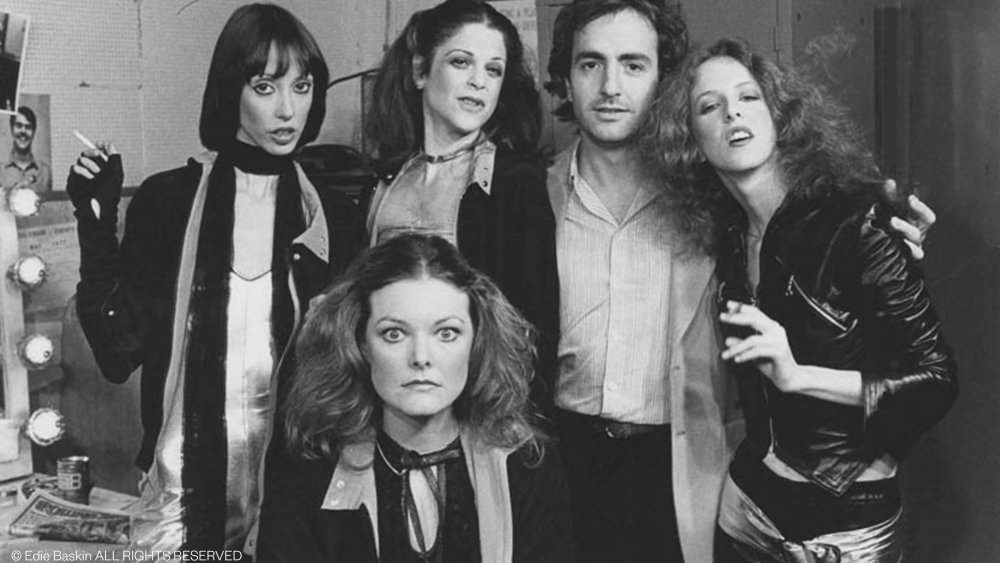
Live From New York! (2015)
Do you remember when you first saw Saturday Night Live?
I think it was when I was nine or ten, growing up in a Vietnamese-American household. I was watching a lot of news because that was the only thing that my parents would let me watch. They were teaching me about American culture, and were expecting me to get it from watching the news, which in late-80s and early-90s America was a horrible way to learn about the country. So on Saturday nights while they were sleeping, I’d sneak out of my bedroom and turn on SNL, where each week they’d have a different take on what was going on in America. For me it was the perfect entry into American political and pop culture.
What do you think is the role of TV in American culture, and how does SNL fit into that?
Of all the ways to consume visual content, it’s the most communal. Sitting on Saturday night watching television with your family is one of the great pastimes of America, if not the world. When I first went to Vietnam, and visited my parents’ village, they had this shoddy black and white television that was probably nine inches big, but the entire village of 300 people would surround it, and that’s always made an impression on me. The idea of watching a show on the internet, in my bed, by myself may be expedient — especially as I travel so much — but I love to wait to watch something with a friend or family member. It’s a different experience.
When SNL came out in 1975, it was revolutionary. No one would think of programming a live television show on a Saturday night in America. It’s lasted 40 years, even with all the changes in technology, in many ways foreshadowing them. Andy Samberg says in the film that SNL was perfect for the internet, being comprised of all these three minute clips that can now be shared virally. Who knows, maybe if SNL had produced six minute clips, then that would be the average viewing time for viral videos? Then, nowadays people watch six second vine videos. People’s attention spans are getting shorter and shorter.
The Lady in the Van first reactions
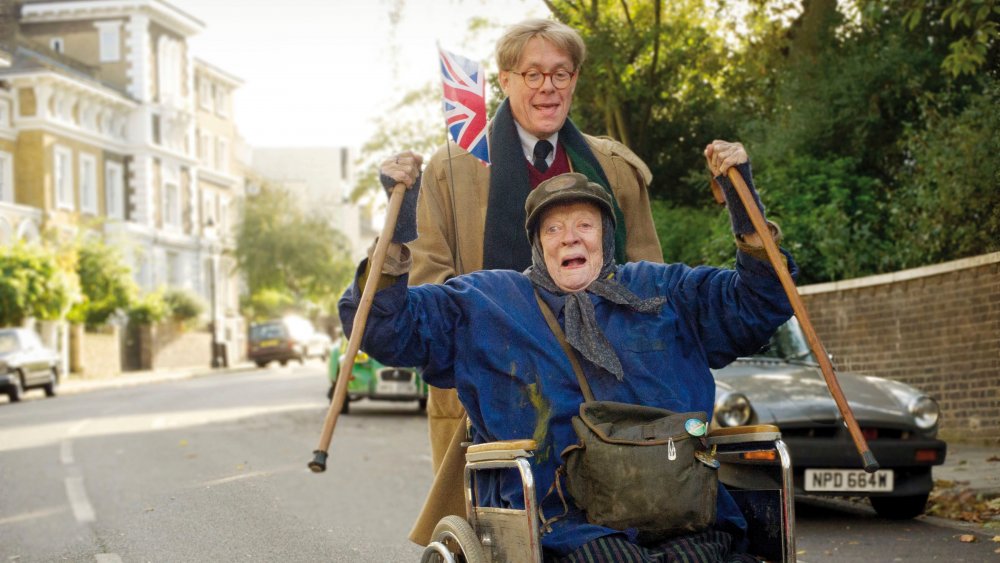
The Lady in the Van (2015)
This evening’s main event is the Centrepiece Gala screening of The Lady in the Van. The film screened to press and industry delegates this morning, and the Twitter response suggests that director Nicholas Hytner (The Madness of King George, The History Boys) has another crowd-pleasing hit on his hands.
Room - an early awards season contender?
Lenny Abrahamson’s Room is one of the most talked about films at this year’s festival. It arrived at the LFF fresh from winning the prestigious audience award at the Toronto International Film Festival. With previous winners including 12 Years a Slave, The King’s Speech and Slumdog Millionaire, the prize is regarded as a key early indicator of Oscar success.
Festival audiences have a final chance to catch the film tonight. To whet your appetite, here are some highlights from a post-screening Q&A with Abrahamson, writer Emma Donoghue, and star Brie Larson. Please note, the conversation references major plot points that some may consider spoilers.
Three great festival films that pass the Bechdel Test
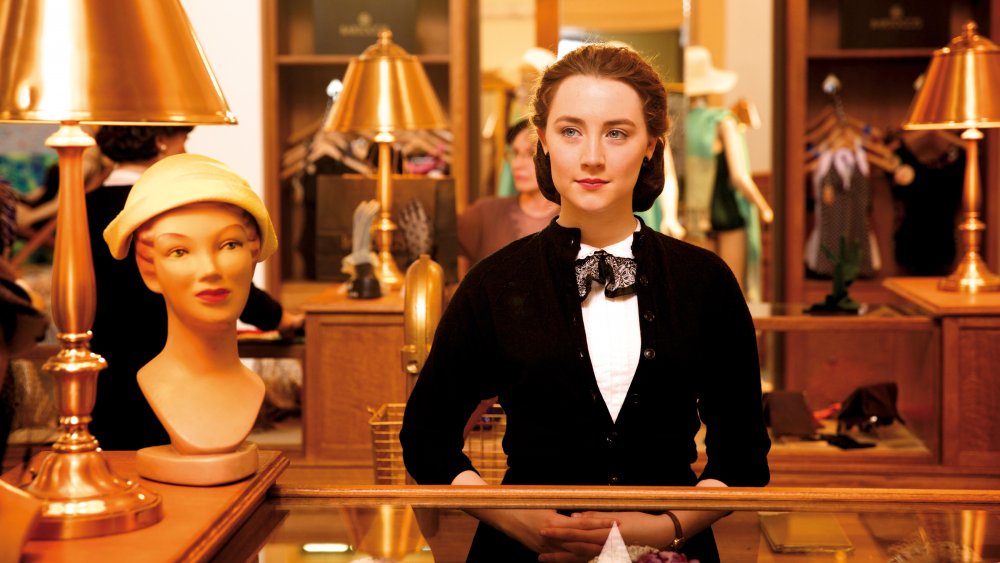
Brooklyn (2015)
The Bechdel Test was invented in 1985 by American cartoonist Alison Bechdel. For a film to pass, it must include two named women who have a conversation about something other than a man. A depressing percentage of films fail the test (around 45% in 2014, according to one report), but this year’s festival programme boasts a diverse array of work that passes with flying colours. Simran Hans shares three of her Bechdel Test-passing favourites.
John Crowley’s Brooklyn stars the luminous Saoirse Ronan as Eilis, a shy, serious young woman who emigrates from 1950s Ireland to New York in search of a new life. When she falls in love for the first time, she blooms in every sense of the word. Though the film is at heart a tender romance, writer Nick Hornby emphasises the women who surround and support Eilis. Hornby finds humour in her sisterly relationships, particularly in the scenes set around the dining table of Eilis’ Brooklyn boarding house. “Giddiness is the eighth deadly sin,” Julie Walters’ landlady chides as the girls gossip and quip over dinner.
Alex Ross Perry’s Queen of Earth offers a contrasting depiction of female friendship. Away from the pressures of the city, best friends Catherine (Elisabeth Moss) and Ginny (Katherine Waterson) must face their inner demons — and each other. Perry’s take on uglier aspects of the female psyche is satisfyingly dark and complex, creating space for the two women to speak frankly about their families, their work and their faltering relationship.
Robert Eggers’ wildly confident debut feature The Witch also passes the Bechdel Test. Set in New England in the 1630s, an English couple living on the edge of a sinister wood becoming increasingly rattled as their five children begin to dwindle in numbers. A supernatural horror steeped in religious mythology, it pulls focus on oldest daughter Thomasin (Anya Taylor-Joy), whose burgeoning sexual maturity poses a threat to her parents.
Sailing a Sinking Sea – a compelling account of a disappearing way of life
Los Angeles-based filmmaker Olivia Wyatt is in town with her documentary Sailing a Sinking Sea, a luminous, ocean-bound account of a disappearing Southeast Asian culture. Matthew Thrift caught up with her at yesterday’s Filmmaker Afternoon Tea.

Sailing a Sinking Sea (2015)
“The Mokens are a nomadic, seafaring community from Thailand and Myanmar. They survived the Indian Ocean tsunami in 2004, which is what piqued my interest in going there. What really kicked me into gear though, was that their population had really started to decline. I finished the film ten years after the tsunami, focussing mostly on their mythologies: who were the first human beings? Why do the sun and moon exist? Mermaids!
There was this guy, Uncle Selymar, who was known on every island for having met a mermaid. He was out spearfishing and he said that she swam out of a cave, a fish who could turn into a woman. When he met her, she had legs and came onto his boat — they went back to his island and had a kid. He kept trying to feed her fish, which she wouldn’t eat, so he snuck some fish into her rice one night. She apparently went crazy, tearing off her clothes before running into the water, never to be seen again.
The Moken population is down to 3000 now, and we don’t know what the future is for the community. The government is regulating how much they fish and how much they can sell their fish for — they have to sell to the government for a third of the market rate. Otherwise, they’re being paid to go over to Burma to fish using dynamite, and dying because they’re diving deeper than they normally would to plant the dynamite.
There are so many factors (contributing to their decline): missionaries, for one, but then the influence of television too. Once a week they’ll run a generator and all gather around the TV, so the kids are seeing another way of life. They’re less interested in their culture and more interested in pop culture.”
‘I'm interested in stories of people who are left behind’ – Our Little Sister
Family is the warm, beating heart of Hirokazu Kore-eda’s films and he’s back on familiar territory with Our Little Sister. This low-key drama, about three sisters who decide to take in their estranged half-sister Suzu after their father dies, is an intimate exploration of blood ties told with gentle affection. Ann Lee sat down with the director ahead of last night’s festival premiere.
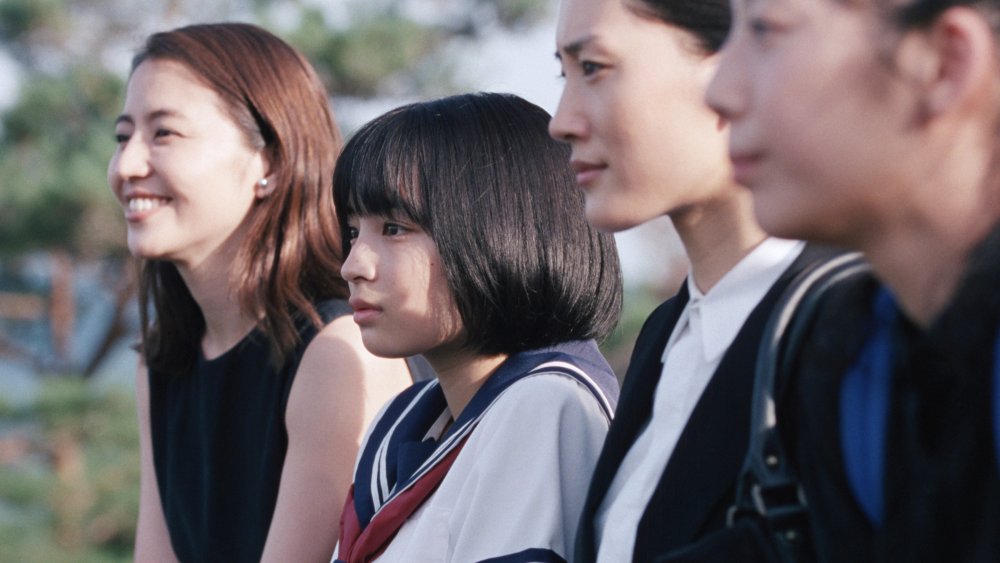
Our Little Sister (2015)
What was it about this project that interested you?
In 2008, when the manga Umimachi Diary came out, I knew that I really wanted to adapt it. The main attraction was that the story was all about abandoned children. They’re adults but they’ve been abandoned by their parents. They then adopt another abandoned child. The original comic deals with the passing of time in a very mature way. I’m interested in stories of people who are left behind.
Is it true you didn’t give Suzu Hirose, who plays Suzu, a script?
Everyone else had one. The only person who didn’t get a script was Suzu, the youngest actress. Normally, I don’t give scripts to children. She was 16 so it was actually borderline but she wanted to do it without one. On location, I just talked to her before filming. She liked it without a script. She had to concentrate more on what the other sisters were saying to her because she hadn’t studied the lines beforehand.
Why do you like this method of working?
In the past when I’ve auditioned child actors, it’s worked better. I want to train them to make sure they use their hearing rather than reading something.
Why is family a theme you keep returning to?
Within the last ten years, I’ve lost my mother and I’ve become a father so it’s a subject that’s very dear to me.
Steven Spielberg is planning a remake of Like Father, Like Son. Who would be your dream cast?
Christian Bale for the father and Ethan Hawke for the other father in the electrical shop. I don’t know if that’s how it’s going to happen, but in my mind that would be ideal.
Would you ever make an English-language film?
I can only speak Japanese, so working in Japan will always be my base. I’m very lucky in that there are many western actors who have said they’d like to work with me, so I’m tempted. Maybe there’ll be a collaboration. It’ll be a challenge. I’ve been in touch with Juliette Binoche. For the past ten years, we’ve always talked about how we’d love to do something together.
Our Little Sister screens again at 8.45pm tonight at the Curzon Soho.
Saoirse Ronan Screen Talk
Saoirse Ronan has earned rave reviews for her commanding central performance in John Crowley’s sweeping romantic epic Brooklyn.
It’s perhaps the most impressive work to date from an incredibly precocious young actor, whose glittering CV includes collaborations with the likes of Peter Jackson (The Lovely Bones), Peter Weir (The Way Back), Joe Wright (Atonement, Hanna) and Wes Anderson (The Grand Budapest Hotel). Here she is in conversation with festival programmer Tricia Tuttle at BFI Southbank.
Tonight’s highlights
In addition to tonight’s Centrepiece Gala screening of The Lady in the Van, there’s a bumper crop of critically-lauded films screening over the next few hours. Here’s what the good folk of Twitter had to say about The Lobster, Queen of Earth and Cemetery of Splendour.
Red carpet highlights from The Lobster and The Lady in The Van
Last night a triple helping of premieres saw The Lobster Dare Gala in association with Time Out, The Lady in the Van Centrepiece Gala supported by the Mayor of London and Apichatpong Weerasethakul’s critically acclaimed Cemetery of Splendour all wow the red carpet crowds. Here are the highlights.
Carol first reaction
As Day 8 of this year’s LFF kicks off, there’s a buzz around Todd Haynes’ devastating drama Carol. Screening tonight as the American Express Gala, the film focuses on the blossoming love between shop girl Rooney Mara and wealthy older woman Cate Blanchett (starring as the eponymous Carol). It’s another beautiful, emotionally acute film from Haynes, who touched upon similar forbidden love territory in Far From Heaven (2002). When awards season comes round, it’s a shoo-in for some major prizes.
The critical verdicts following this morning’s press screening are in…
Wedding Doll – Nitzan Gilady’s striking debut fiction feature
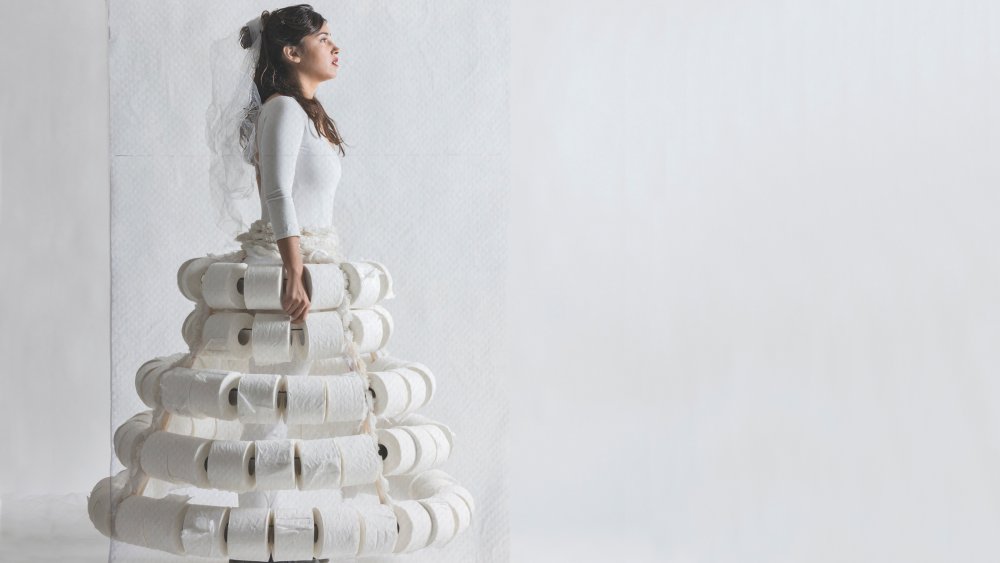
Wedding Doll (2015)
The sandy and barren landscape of a small town in Israel is used to moving effect in Nitzan Gilady’s Wedding Doll, writes Ben Nicholson.
The striking setting is used to echo the inner confinement and loneliness felt by the two lead characters; Hagit and her devoted mother Sara. Moran Rosenblatt is captivating as Hagit, delivering a refreshing portrayal of someone with mild learning difficulties. This young woman is vibrant and irrepressible, with a beaming smile and a burning desire for agency. A hopeless romantic, she embarks on a tender tryst with the son of her employer, but struggles to comprehend its possible consequences.
Despite the many obstacles she has to face, Hagit is no victim. The strength of mind and will afforded to both her and her mother — who is played by renowned actress Assi Levy — are the cornerstones of a resonant drama. It’s a most impressive fiction feature debut by Gilady, whose previous work includes the acclaimed documentary Jerusalem is Proud to Present (2008).
Wedding Doll screens at 1.30pm on Thursday at BFI Southbank.
Hearts of darkness without hearts of gold
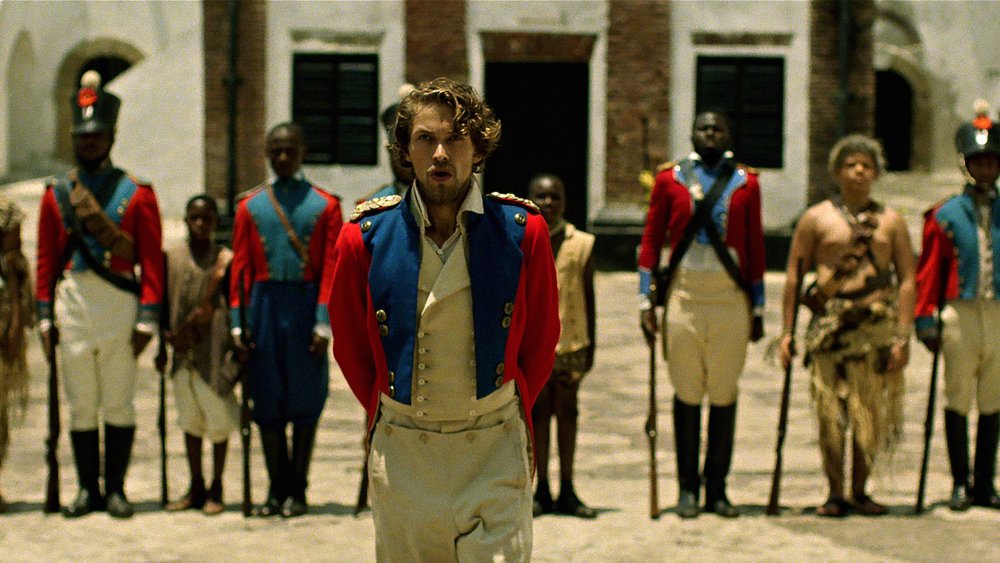
Gold Coast (2015)
Gold Coast is a mesmeric, unique Danish film set in colonial Guinea, writes Alex Davidson.
When film reviews bang on about the beautiful soundtrack, it’s usually a sign that the movie in question is a bit of a dud, given a polish with some rich orchestral mood pieces (other warning signs in reviews of pretty-but-shallow films include “stunning cinematography” and “beautiful costumes”). In Gold Coast, however, one of the most interesting films I’ve seen at the Festival so far, Angelo Badalamenti, the composer of amazing scores for David Lynch, including the haunting Twin Peaks theme, contributes some utterly weird, alien music, unlike anything else I’ve heard in a period film. It’s set in 1836 in Danish colonial Guinea, and follows the challenges faced by Wulff, a progressive botanist sent to oversee a coffee plantation, whose morality is challenged when he sees the racist attitudes that his countrymen still cling on to.
Norwegian actor Jakob Oftebro (Kon-Tiki) is amazing as a liberal man confronted by a world utterly foreign to him. As civility gives way to crazed breakdown, he channels Wulff’s conflicting emotions with a visceral commitment that recalls Klaus Kinski’s performances in his collaborations with Werner Herzog. Director Daniel Dencik, who makes his narrative debut following a string of documentaries, has created a mesmerising and menacing picture, with an unforgettable last shot.
Gold Coast screens at 12pm tomorrow at Vue West End.
Alan Bennett and Maggie Smith on The Lady in the Van
A story about a homeless woman befriending a man and subsequently living in a car on his driveway for 15 years sounds like the sort of play Alan Bennett might write. In the case of The Lady in the Van, it’s a film based on one of his plays and actual events that happened to him in Camden.
Bennett, who adapted his play for the screen, joined director Nicholas Hytner and Dame Maggie Smith, who stars as eponymous lady, to discuss the film at the Centrepiece Gala supported by the Mayor of London.
Steve McQueen racing doc gears up for UK premiere
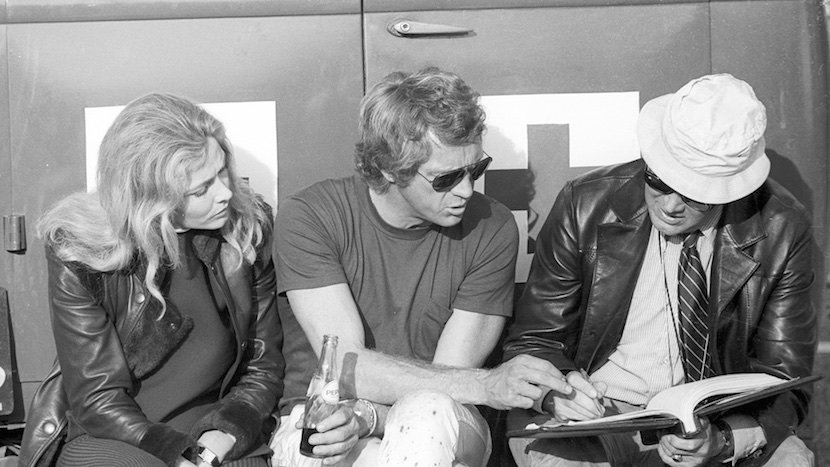
Steve McQueen: The Man & Le Mans (2105)
This evening key names from the past and present of British motor racing are set to attend the UK premiere of Steve McQueen: The Man and Le Mans at Cineworld Haymarket. Christina Newland gets the low-down on Gabriel Clarke and John McKenna’s impressive documentary.
A fascinating look at the world’s most popular male star and his troubled passion project, Steve McQueen: The Man and Le Mans turns its attention to the filming of a little-seen racing film from 1971 (the “Le Mans” of the new film’s title). An avid and talented driver himself, McQueen brought veteran director John Sturges on board to film during the real Le Mans 24-Hour endurance race. By the end of the embattled production, Sturges had quit and McQueen refused to show up at the premiere.
Digging up some compelling stories about the star and the requisite behind the scenes drama, the doc wobbles between admiration for and gentle criticism of the icon. “They can’t put me off as a candy-ass movie star,” McQueen grumbles on tape; his voice and image are resurrected through a number of unseen interviews and rare footage.
The little-seen movie marries a single-minded obsession with the detail of motor-racing and a total lack of regard for dramatic tension. Feeling that “the total visual experience” of the racing car driver was much more important than any artificial subplot, McQueen’s stubbornness forced the studio to drop his producer credit from the film. As it goes, the frustration of the actor’s experience — and the purity of his vision — lends a surprising amount of insight into the trajectory of his career.
Steve McQueen: The Man and Le Mans screens at 6.15pm tonight at Cineworld Haymarket and 12.30pm, Friday 16 October at BFI Southbank.
From the archives: 20th London Film Festival poster
Opening the LFF in 1976 was Fred Schepisi’s The Devil’s Playground, a semi-autobiographical film about a boy struggling with growing up in a Catholic seminary. In the year that punk broke in London, it’s fitting that a film based on a boy’s refusal to accept authority started the Festival.
Meanwhile, the year’s closing night film was The Killing of a Chinese Bookie. Arguably the best-known film made by US indie cinema pioneer John Cassavetes, it’s a lo-fi crime feature that has its own punk DIY spirit running through it.
The LFF poster below is not a confrontational one, unless the unspooling of the film can be construed as society itself unravelling…
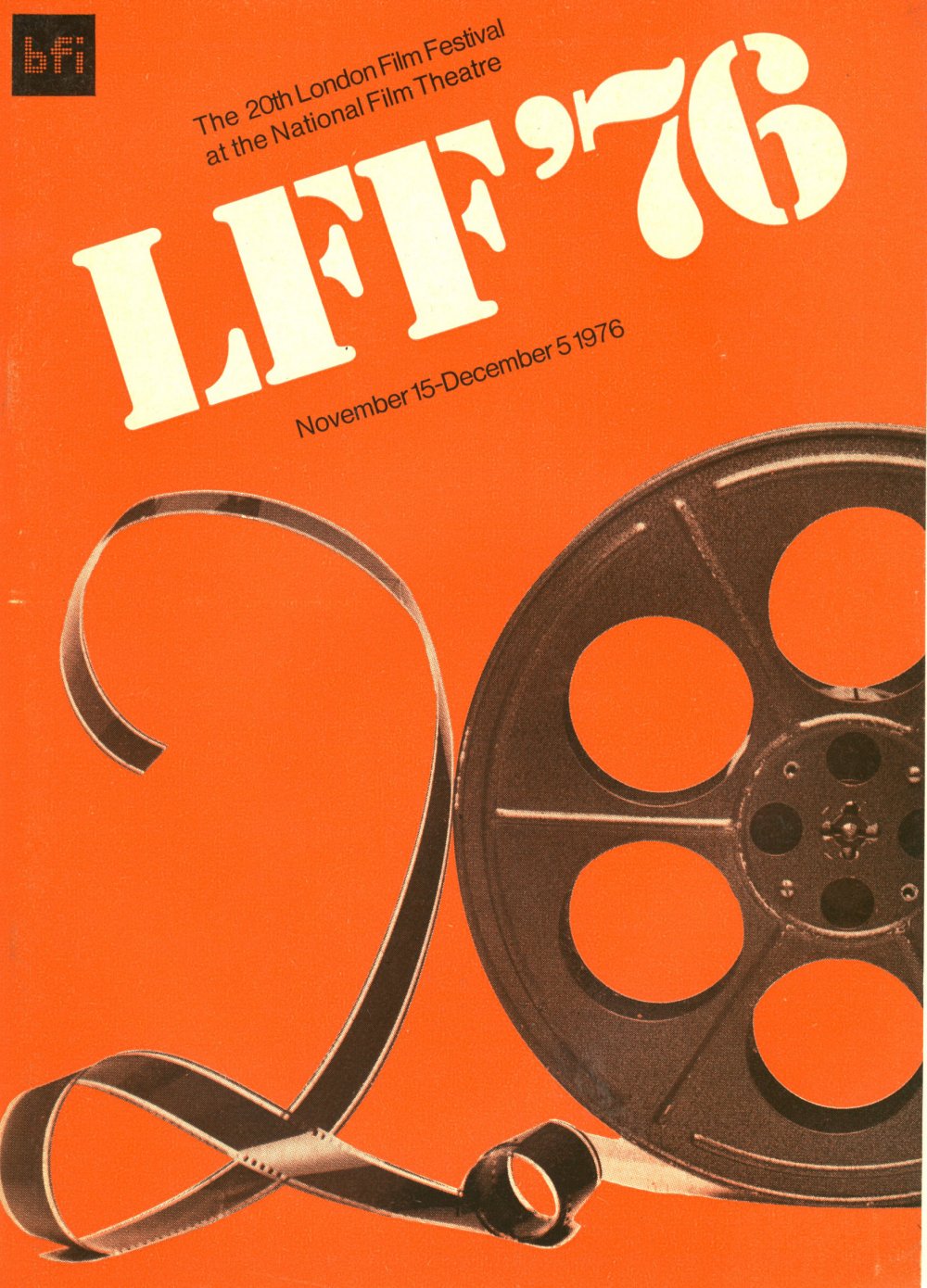
20th London Film Festival poster
Cate Blanchett: ‘The phrase “strong woman” has become catch-all for ‘complex’. Choose a different adjective.’
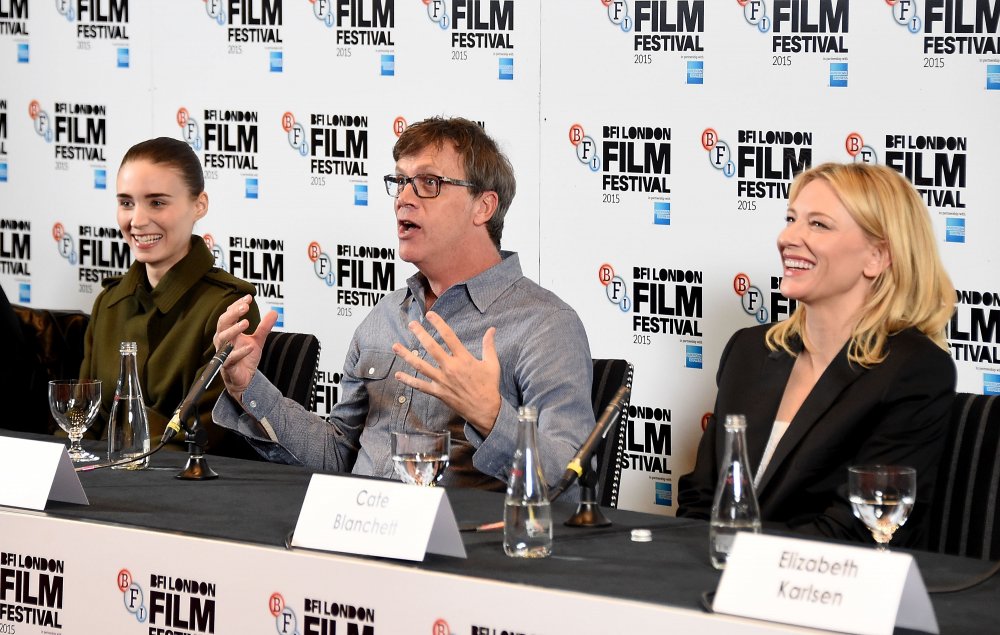
Rooney Mara, Todd Haynes and Cate Blanchett attend the Carol press conference during the BFI London Film Festival
Carol, Todd Haynes’ dizzyingly romantic adaptation of Patricia Highsmith’s novel The Price of Salt is an exquisite love story between two women, set in a climate of suspicion and disapproval in 1950s America, writes Simran Hans. Haynes was joined by stars Cate Blanchett and Rooney Mara alongside screenwriter Phyllis Nagy at this afternoon’s press conference to talk strong women and Douglas Sirk.
On why the film – with its 1950s setting – is relevant in 2015
Phyllis Nagy: It’s always the right time for love stories.
Cate Blanchett: I think even if this film had been made five, ten years ago – even if it was exactly the same – I think it would’ve been perceived as more political. I think the landscape surrounding same-sex relationships has advanced. It doesn’t have to represent the standard, or anyone. Todd Haynes: All love stories need that social obstacle or barrier.
On strong women in film
Cate Blanchett: Every time there’s interesting, complex roles played by actresses on screen, someone says ‘Oh, do you think this is a breakthrough?’ I think there’s a swathe of great roles for women, and certainly a swathe of wonderful female performers, [but] I think it’s just time to get on with it.
On the perils of the term ‘strong women’
Todd Haynes: The problem is that it suggests an agenda – that because these are ‘less represented’ people, even though they’re more than 50% of the population, that they have a kind of social agenda and a responsibility to be strong and courageous in the roles that they play. [Cate and Rooney’s careers show] they’re actors who are interested in playing human beings.
Cate Blanchett: It’s becomes a catch-all for ‘complex’. Choose a different adjective.
On the comparisons made between Todd Haynes and Douglas Sirk
Todd Haynes: This film to me is not Sirkian, it doesn’t have the expressionistic language of high melodrama. It really is, in my mind, [drawing on] love stories, and how they function, and how much [through] point of view is how we remember great stories when we’re anchored with a certain character. What’s so interesting about Carol is that that shifts.
On love and chemistry
Cate Blanchett: When you fall in love, its as though no one else has experienced what you’re experiencing. It’s dangerous, you’re out of control, it’s akin to panic and fear and the adrenaline – it literally makes your heart beat faster. That doesn’t change whether you’re in a corset or a g-string. Well, it makes it easier to get naked.
Rooney Mara: My opinion is that chemistry is very much the same as in real life — you either have it or you don’t. I felt lucky that it was easy for me to feel chemistry towards Cate.
Cate Blanchett: It’s that moment in dance; it’s like what Rooney was saying about chemistry – it ignites. It’s about control, because I think you lose a sense of the boundaries of your own skin [when in love].
Listen to me Marlon: Brando in his own words
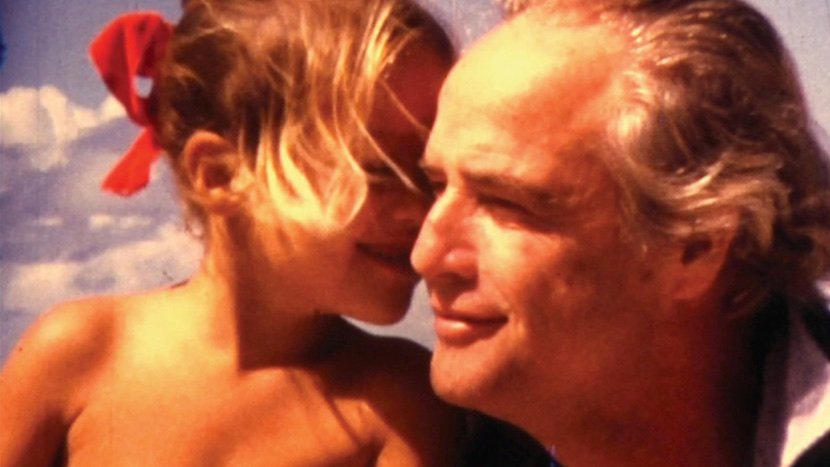
Listen to me Marlon (2015)
Director Stevan Riley and producer John Battsek found themselves with full access to Marlon Brando’s personal archive of audio recordings. The resulting film, Listen To Me Marlon, is a beautifully constructed first-person account of the actor’s life, a film as incisively self-aware as it is possessive of a tender melancholy. Matthew Thrift sat down with the filmmakers for a chat.
How did you come across the archive?
John Battsek: Once we were in discussion with the estate about making the film, they let us know that they had this extensive archive available. We subsequently discovered that it was full, amongst other things, of all these audio recordings.
Stevan Riley: It was a tricky nut to crack in terms of how to develop an approach to it. We were after something quite adventurous to get the investors on board.
John Battsek: I was pretty clear from the get-go that if they just wanted a pretty bog-standard hagiography, it just wasn’t what we do. They seemed very willing to give us artistic license, before we even knew what Stevan was going to turn it into.
Were there any caveats from the estate on what you could include?
John Battsek: Not only were there no caveats, they basically gave us the keys to the cupboard and moved out of the way. The only contact we had with them was when asking for more material. They didn’t see a frame of it until we presented them with what was effectively the locked picture.
It’s such a treasure trove of content.
Stevan Riley: It was, but it was still very terrifying. I’d read a lot of books about Brando and just got more and more confused. Everything was conflicting, painting him in different lights. It was from that confusion that I wondered if we could make Brando’s the only voice in the film, but that was taking a big punt on whether there was enough in the archive to do it.
Which performance do you think best represents Brando as a person?
Stevan Riley: Last Tango in Paris is interesting, because going on in the background — which isn’t in the film — there was a woman he was having an affair with behind the scenes, who he fell deeply in love with. She wasn’t exotic, wasn’t his normal type. He had a very tempestuous relationship with her, all based on a lack of trust. He tested her and tested her until she left him, at which point he wrote her a letter asking her forgiveness, saying that in that moment he was forgiving his mother as well. Which all feeds into that big scene in the movie. With Streetcar, he always said he didn’t want to be Stanley Kowalski, but I spoke to a collaborator who knew him really well, who told me, “He’d never admit this, but he was Stanley.” It’s interesting that the arc of the film is Brando saying that we never want to be like our fathers. His dad was basically Stanley, who Brando refers to as The Beast.
What were your lasting impressions of Brando from making the film?
Stevan Riley: You know, there was a long period where I was a bit worried. I wanted to celebrate him, but I wondered at first if I was even going to like him. I’d read a couple of books that made him out to be a tempestuous, self-centred individual, which was partially true, but then later I was in a position to be able to read between the lines and figure out the dynamics of those particular relationships. It was always endearing just how honest he was about his own life, and if you were in his very tight circle he was a really funny, playful guy.
Casting Carol: Laura Rosenthal Screentalk
Award-winning casting director Laura Rosenthal is the woman responsible for the getting the best people in the right roles for two of big films in this year’s LFF, tonight’s American Express Gala Carol and Paolo Sorrentino’s Youth.
Rosenthal spoke to Ian Haydn Smith about her career and working with directors including Todd Haynes and Woody Allen.
Cate Blanchett and Rooney Mara on the red carpet for Carol

Cate Blanchett and Rooney Mara attend the Carol America Express Gala
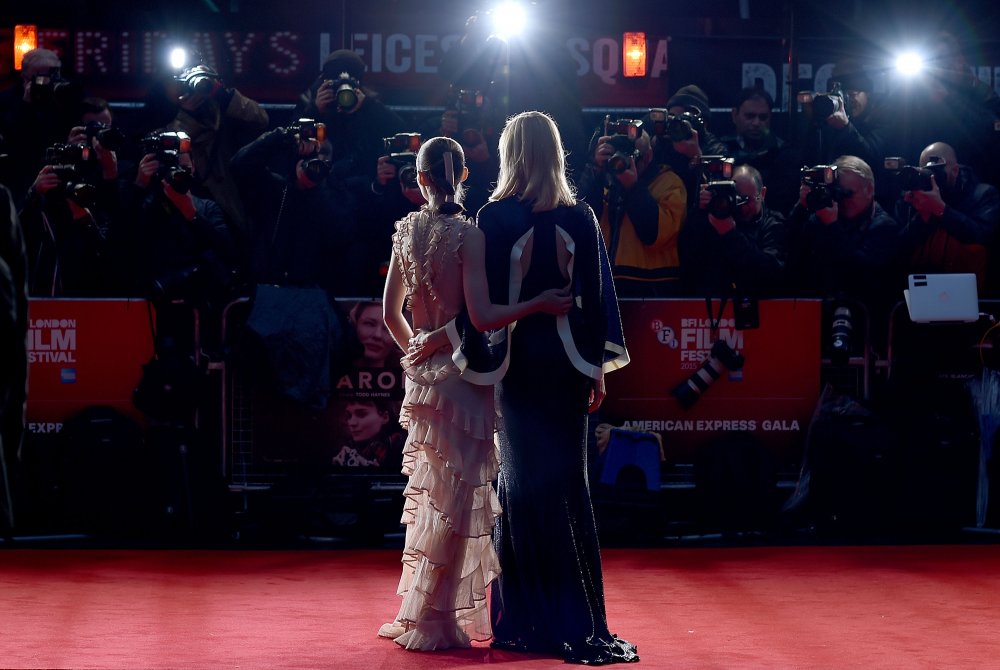
Cate Blanchett and Rooney Mara attend the Carol America Express Gala

Rooney Mara, Todd Haynes and Cate Blanchett at the Carol America Express Gala
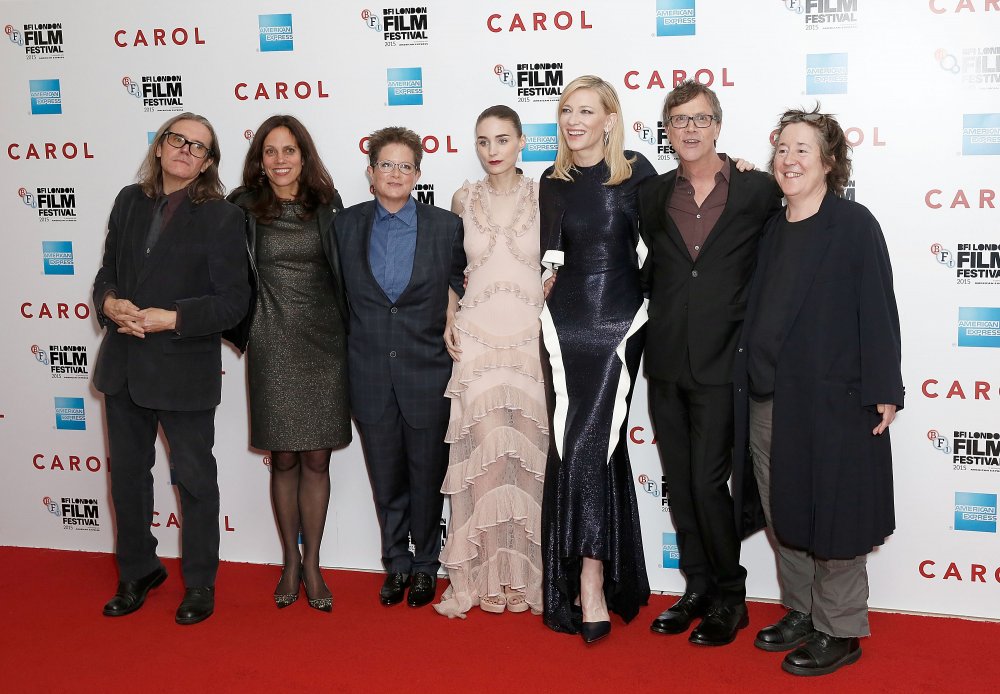
Stephen Woolley, Elizabeth Karlsen, Phyllis Nagy, Rooney Mara, Cate Blanchett, Todd Haynes and Christine Vachon attend the Carol America Express Gala
Eugenio Canevari on Sutherland Award nominee Paula
Eugenio Canevari’s Paula is one of 12 festival films duking it out for the coveted Sutherland Award for best first feature. It’s a beautifully concise and understated portrait of a nanny in rural Argentina, who faces an agonising dilemma when she discovers she is pregnant. Canevari offers a refreshing spin on a very familiar scenario, with none of the moralising and overwrought hysterics that so often characterise domestic dramas of this ilk.
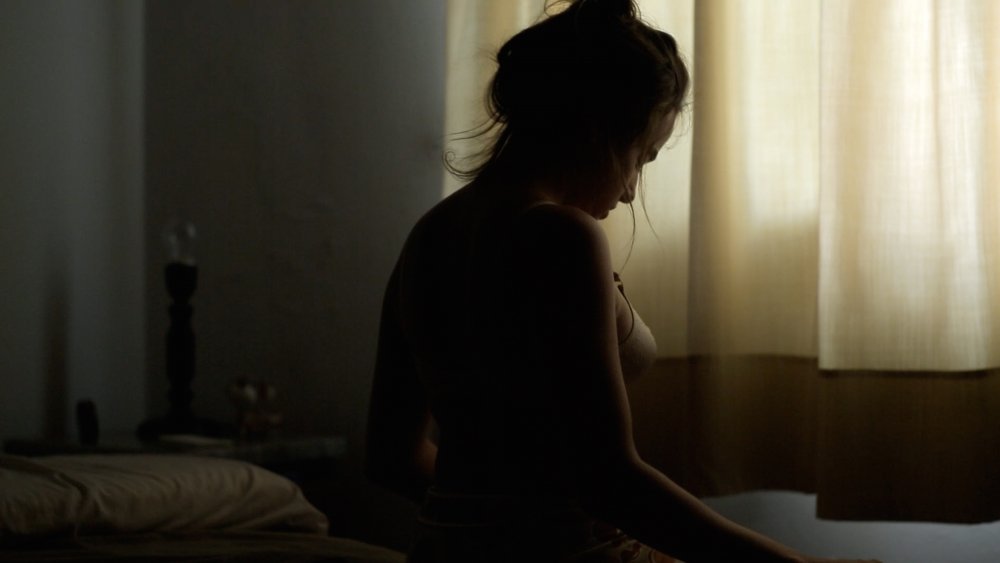
Paula (2015)
Paul O’Callaghan caught up with the director earlier this week at a Filmmaker Afternoon Tea. The winner of the First Feature Competition will be announced at Saturday’s awards ceremony.
On deciding to pursue a career in film
The films I got to watch in Argentina as a kid were mainly Hollywood films. And not the good ones, the bad ones! I started studying filmmaking at about 16, but I wasn’t really interested in it. But then one day I was in the centre of Buenos Aires, and I saw that there was a Truffaut retrospective, and I decided to check out a few of the films. And that was it. I remember thinking “this is film. This is what I want to do with my life”.
On his script development process
I don’t think I’m a good screenwriter. I actually don’t like it, I find it boring. So we wrote the script during the shoot. I like to develop the script with the actors. I just need some time with them, and then the dialogue starts to takes shape. It’s a very simple film on one level, there’s not much dialogue. So I wanted every line to be very precise.
On working with inexperienced child actors
The main child actors are my niece and nephew. The girl was three years old at the time. She knew there was a film going on, and that the character of Paula was her second mother, and that she had to call her ‘mum’ at some point – that’s basically all that we told her. And then it was all about being patient, and waiting for the right moment. I was hiding behind the camera, waiting for the kids to do what we wanted them to do. We wanted to make things seem as natural and convincing as possible. But in a way I think kids understand everything, even better than older actors sometimes.
Day 9 highlights
Heading up today’s spectacular line-up is the UK premiere of Terence Davies’ Sunset Song, the eagerly-awaited follow-up to 2011’s Closing Night film The Deep Blue Sea. There’s also a palpable buzz surrounding Paolo Sorrentino’s Youth, which has earned rave reviews for stars Michael Caine and Harvey Keitel. And there’s another chance to see Green Room, the blistering new thriller from Blue Ruin director Jeremy Saulnier. As ever, you don’t need to take our word for it that these are all well worth your time…
‘You have five minutes to make a contract with your audience about the rules of the world’ – Take Me to the River
Take Me to the River is a frighteningly accomplished debut by US filmmaker Matt Sobel. A pervasive feeling of barely-suppressed menace underscores this knuckle-biting account of a family reunion from hell. Sobel sat down with Matthew Thrift to talk about how he infused the film with a sense of the ‘uncanny’.
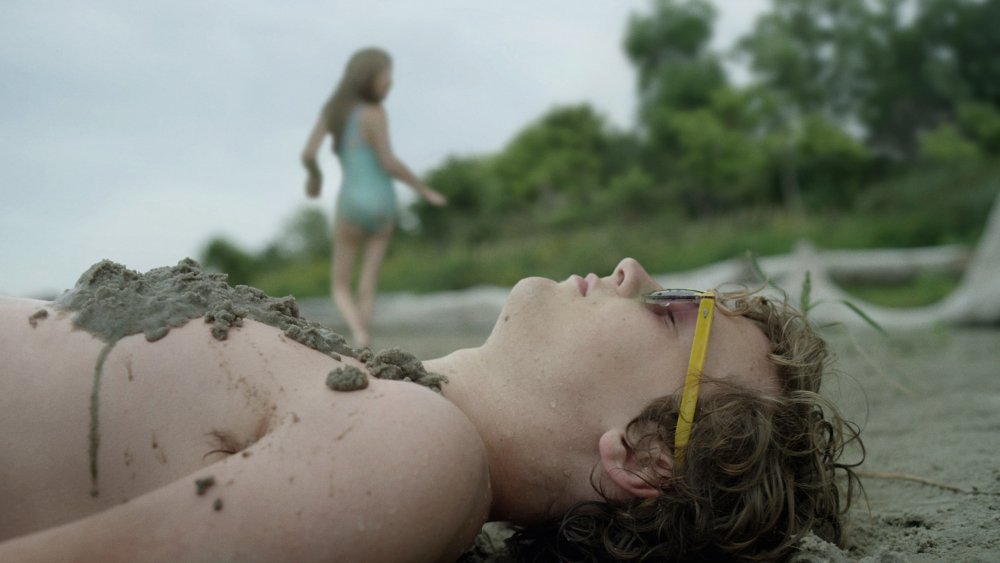
Take Me to the River (2015)
“I was describing this story to a friend of mine, who is much more learned than I am, and he said that I should look up what the word ‘uncanny’ means. I said, “I know what uncanny means, it means strange,” to which he told me that it didn’t and that it had a very specific meaning. I discovered that it comes from a German word which means ‘un-homelike’, literally something that is both familiar and unfamiliar at the same time. So imagine if you were to walk into your apartment and all of your furniture had been rearranged, but just by about five inches. You know that something’s wrong, but you don’t quite know what it is.
The result of that dissonance is an incredibly uncomfortable feeling. So on all levels — from the script to the direction of the actors to the composition of the shots — that was our thesis. It’s best seen in the characters, who are acting like normal people but their motivations are really opaque, exactly the opposite of how you expect them to be acting in such a supposedly welcoming situation.
We knew it was going to be a difficult thing to pull off, because audiences will believe anything is possible if you tell it to them in the first five minutes. You have five minutes to make a contract with your audience about the rules of the world, and it’s extremely hard to change the rules in the middle of the movie without them feeling really betrayed. We wanted to lean the movie away from realism and into surreality, but we had to do it very slowly and use all of the tools at our disposal.
There are tones in the film that aren’t music, but are actually harmonics pulled from the voices of the actors, which we used to signal that we’re leaving a strictly ‘real’ world. There’s a sound of a wind chime that comes in about half way through the film, very quiet, almost inaudible. A lot of these touches aren’t explicitly noticeable, but they work to make people feel more uncomfortable.”
‘I’m posing questions and I’m not answering those questions. I’m leaving those questions hanging’ – Public House
Here’s filmmaker Sarah Turner discussing Public House, her innovative documentary about a South London community’s efforts to save their beloved local pub. The film is nominated for the Grierson Award for best documentary, and there’s another chance to see it on Saturday, at 3.20pm at Rich Mix.
‘Emergent events and stories and experiences are things that no other medium can do’ – game designer Alistair Hope
Yesterday, Alistair Hope became the first video game designer to speak as part of LFF Connects, a series of festival events exploring the future of the creative industries. Hope was creative lead on last year’s Alien: Isolation, a groundbreaking survival horror game which was widely praised for perfectly capturing the spirit of Ridley Scott’s 1979 sci-fi classic.
Hope spoke eloquently about seeking inspiration from film and literature, his team’s dogged determination to honour Scott’s original vision, and the key differences between game development and filmmaking. Paul O’Callaghan was in the audience.

Alistair Hope
On Alien: Isolation’s retro-futuristic stylings
I think the film as a whole is this amazing snapshot of its time. It feels like Ridley Scott taking Stanley Kubrick’s view of the future, and then passing it through this slightly jaded 1970s lens. If you look at 2001: A Space Odyssey, it’s very shiny and stylised, whereas Alien is grounded and mundane. Technology is stripped out of Alien, and we wanted to stay true to that vision of a very practical world, and tap into the set design, and the overall look and feel. The team created some amazing technology that allowed us to take the colour palette of a frame from the film and then apply it to the game.
On some of the game’s more unlikely influences
I never wanted to do a beat for beat version of the movie as a video game – I wanted to show a wider section of the universe. I was really heavily inspired by H.G. Wells’ War of the Worlds, in that it’s the original human vs alien encounter. I just love the sense of how things fall apart really rapidly when people are confronted with something that they can’t handle. This felt like a similar scenario.
I’m a big fan of films like The Thin Red Line and Seven Samurai. One of the things that interests me is the space between the action. The influence of films like that fed into the gameplay – the tension, the anticipation of what’s going to happen next, and the reflection on what’s just occurred.
On the differences between game development and filmmaking
I do remember thinking sometimes, usually late at night, that filmmakers have it easy. This is probably the wrong place to be saying that! But it was just because, from my perspective, I can’t be sure what’s going to happen from moment to moment. I’m quite envious of the filmmaker’s ability to script, storyboard, film and edit, to completely control the viewer’s window into that experience. Whereas I can create the most amazing, beautiful thing, and the player will be looking in the opposite direction. In making a systems-led game, where anything can happen at any time, we’re giving up a lot of control. But that’s why I want to make games – those emergent events and stories and experiences are things that no other medium can do.
From the archives: 35th London Film Festival poster
In the spirit of #TBT, here’s a blast from the past in the form of 1991’s festival poster, designed by none other than Terry Gilliam. Opening the festival that year was Mike Newell’s Enchanted April, while Mark Peploe’s Afraid of the Dark was selected for closing night.
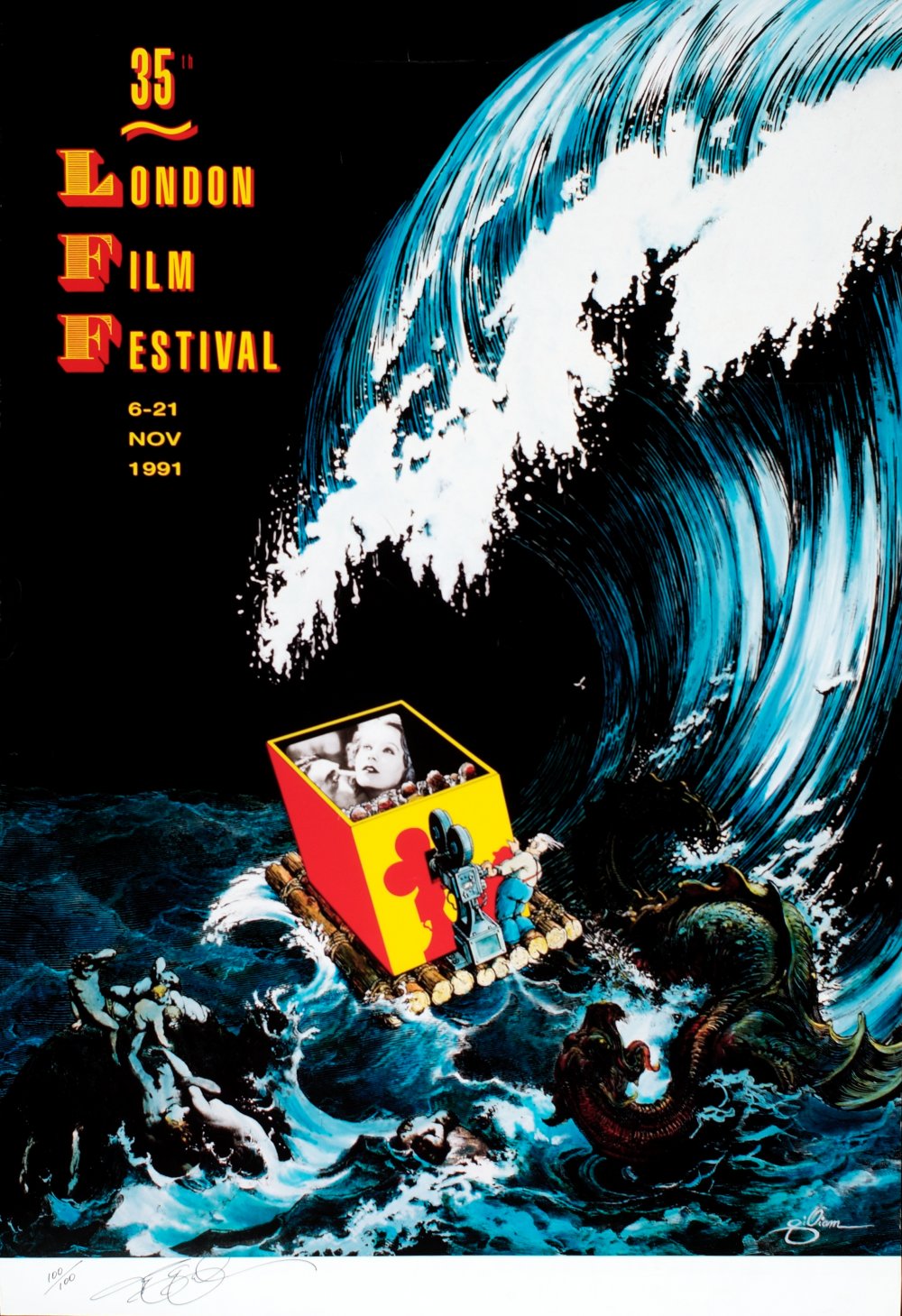
35th London Film Festival poster
‘I wouldn't call it cat and mouse because it's not that smart, it's more of a blunt force battle’ – Green Room
Green Room, director Jeremy Saulnier’s follow-up to the much-praised Blue Ruin, has been bludgeoning unsuspecting festival-goers this week. A feisty genre workout set in a neo-Nazi punk rock club, the film features a viciously game turn from Patrick Stewart as leader of a pack of skinhead sociopaths. Matthew Thrift sat down with Saulnier ahead of tonight’s second screening.

Green Room (2015)
On lessons learned from Blue Ruin
All the lessons I learned I had to scrap. I made Blue Ruin with available resources. It was designed in a very practical way, so I kept it intimate, visual and cheap as hell. The issue was, having exhausted those resources, I couldn’t do it again. I went into Green Room deciding that I’d just construct the world, but didn’t really take into account the consequences while I was writing it.
I had to rethink my whole approach. I had to give away control, ask for other people’s money and bring in a lot of support. It was almost embarrassing, writing out this super detailed plan for a siege drama that takes place inside a punk rock club, without realising we’d have to build it. It was so cool, having my set built, but I had to learn a whole new set of lessons.
On the world of the film
I had been in the punk scene in the 90s, and I’d had the idea of setting a siege film in a green room for a long time. It was just the concept though. I wasn’t interested in a standard story structure, I just wanted to set the stage and have a blast watching the fallout, the logistics and minutiae. I wouldn’t call it cat and mouse because it’s not that smart, it’s more of a blunt force battle.
On the film’s political allegory
I’m always a little bit shy talking about these things, about my secret intentions. But I definitely wanted to use an ultra-left fringe group to comment on the mainstream conservative movement in America: power structures and the use of false ideologies to get underlings to battle each other and mischannel hatred downwards or laterally, while the people at the top are basically sitting pretty in self-preservation mode, brutally indifferent to the carnage they cause.
On Patrick Stewart
We were having a hard time casting that role, through the usual back and forth between the investors and us, trying to find the right star. Patrick got his hands on the material through our mutual management company and swooped in and saved the day. He loved taking that kind of chance. He wanted to know some more about the character in terms of backstory and history, but then really dug in and came prepared, because there wasn’t really any time for rehearsal. He added some great asides and I really leaned on him, coming up with an intimate, quiet approach to his character which was new to him. When he saw the finished film, he seemed really pleased that his huge risk on an unproven director had paid off for him.
Day 9 red carpet highlights
Last night, the creative teams behind Youth and Sunset Song took to the red carpet in Leicester Square.

Michael Caine, Rachel Weisz and Harvey Keitel at the Youth premiere
Credit: Stuart C. Wilson
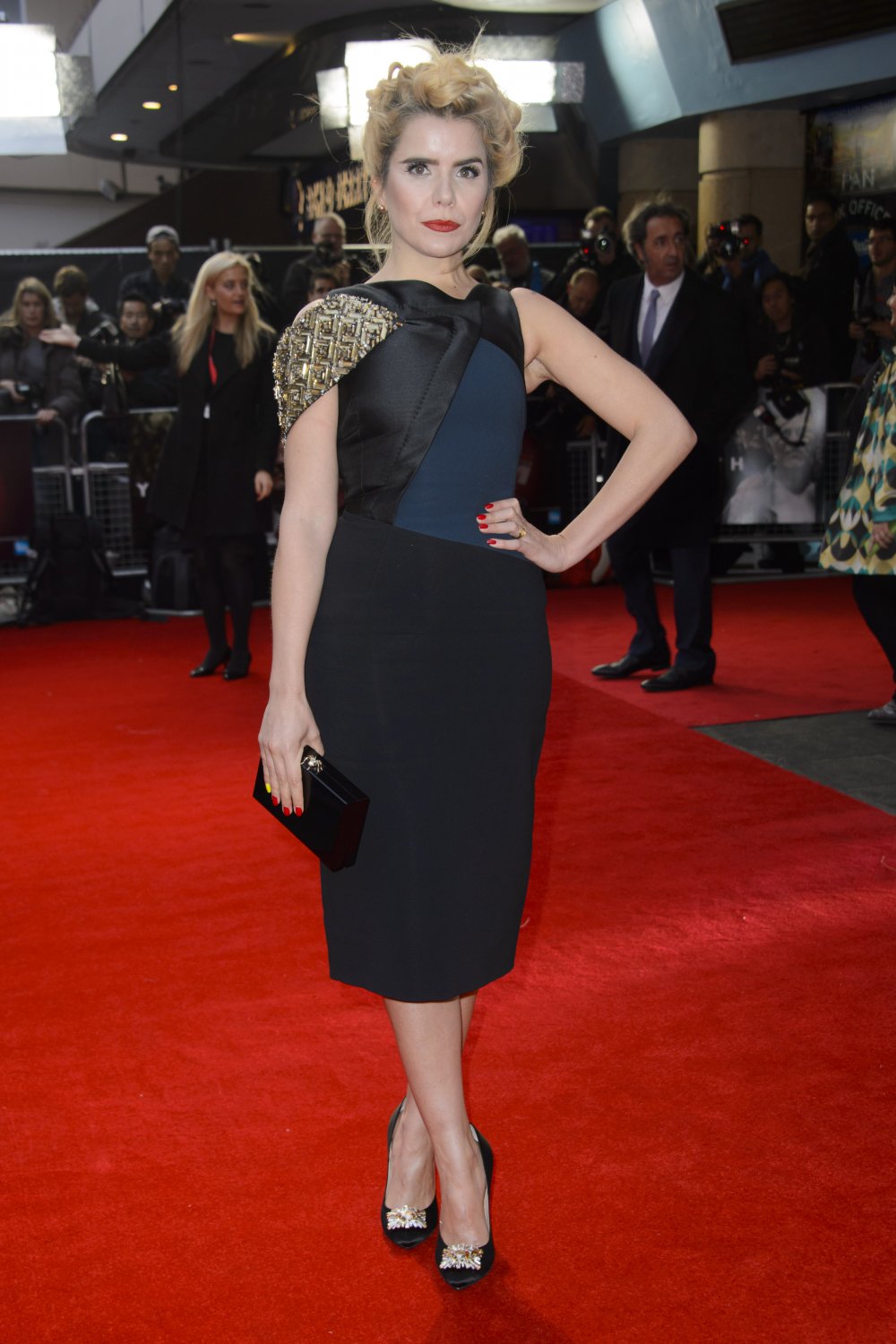
Paloma Faith at the Youth premiere
Credit: Stuart C. Wilson
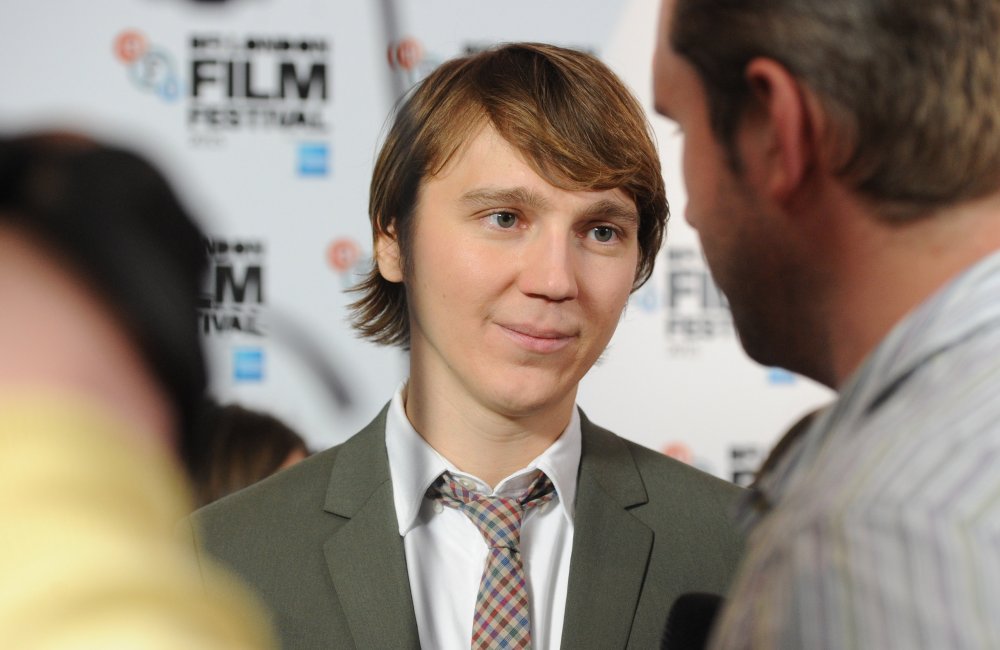
Paul Dano at the Youth premiere
Credit: Stuart C. Wilson
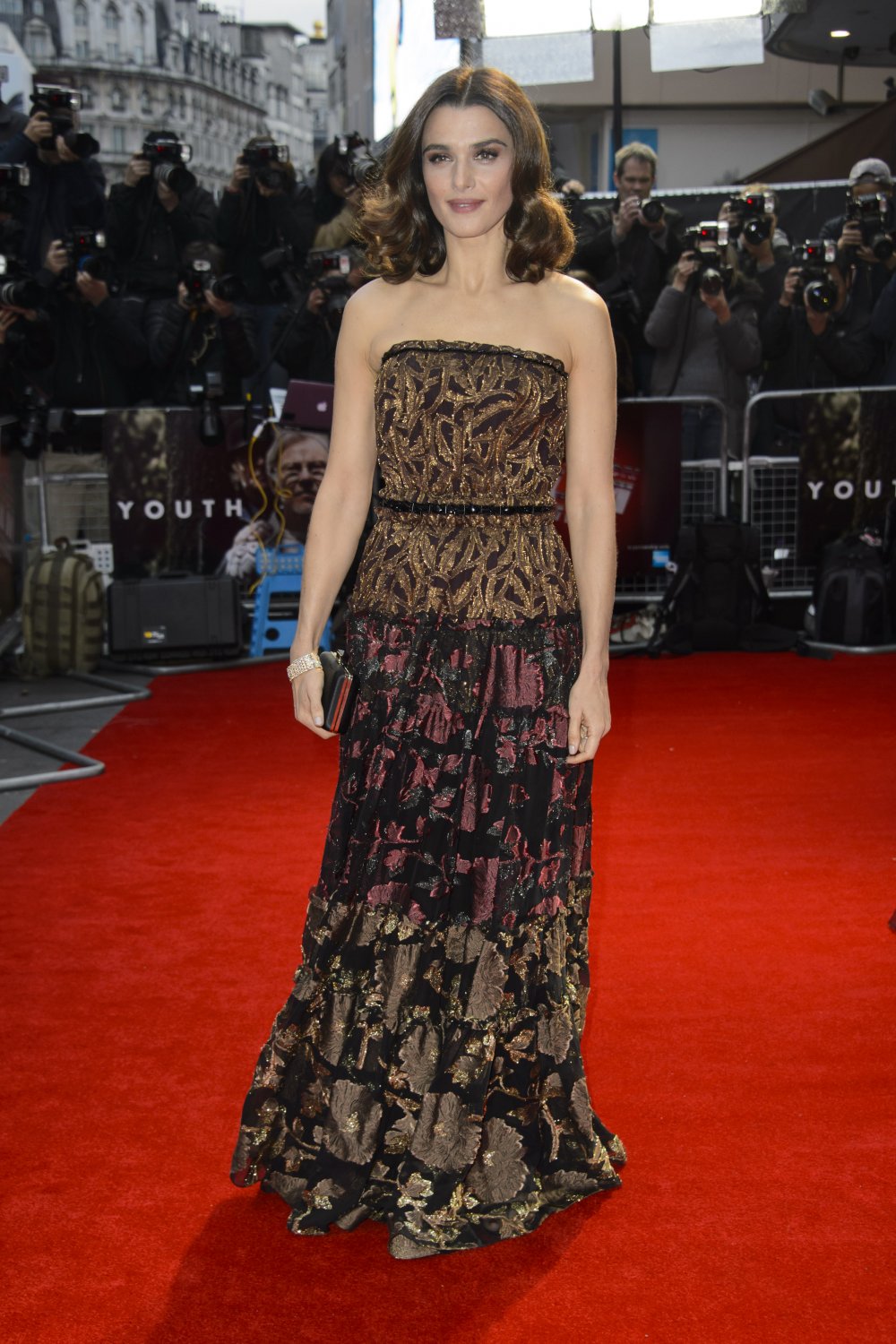
Rachel Weisz at the Youth premiere
Credit: Stuart C. Wilson
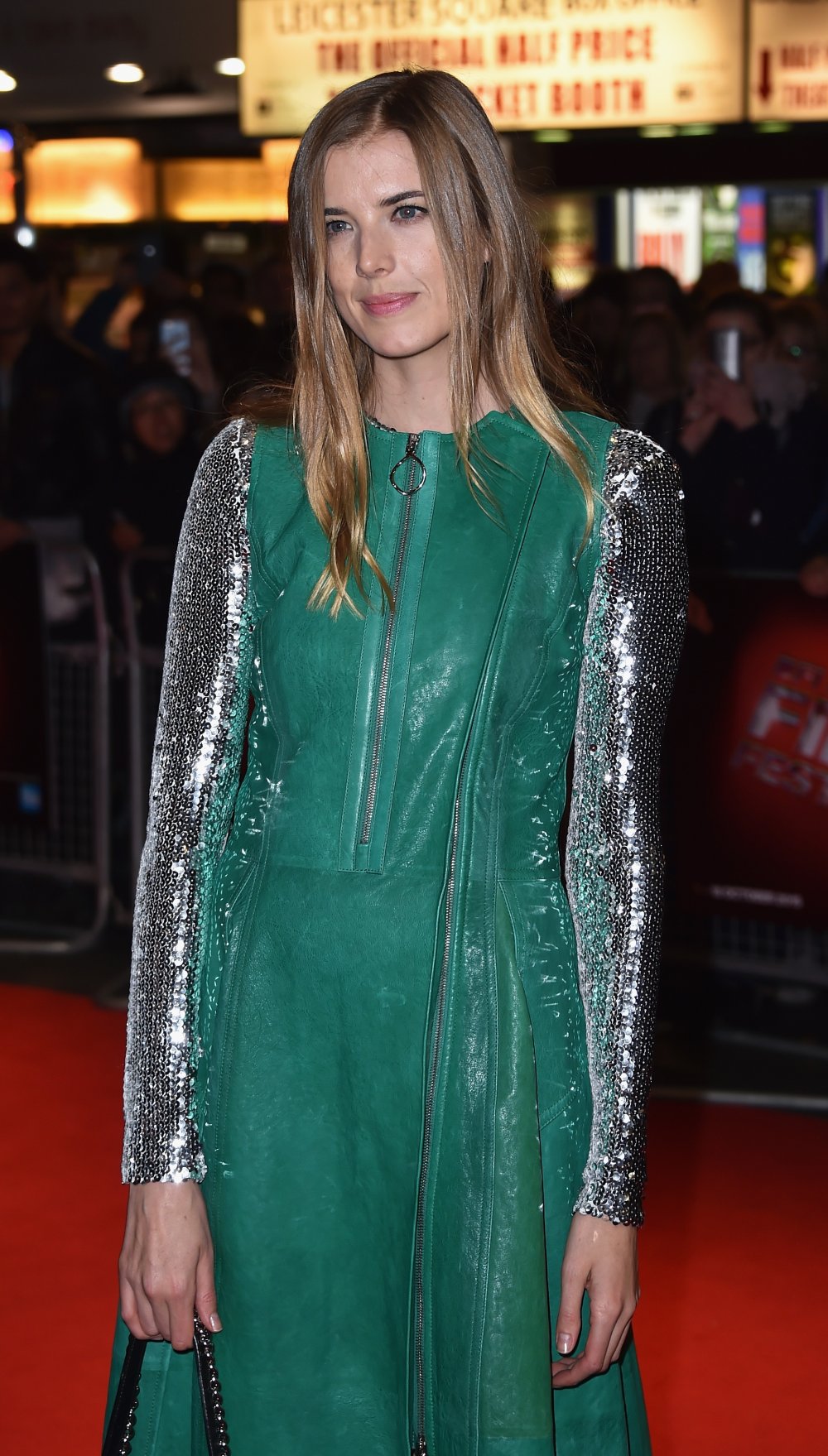
Agyness Deyn at the Sunset Song premiere
Credit: Gareth Cattermole
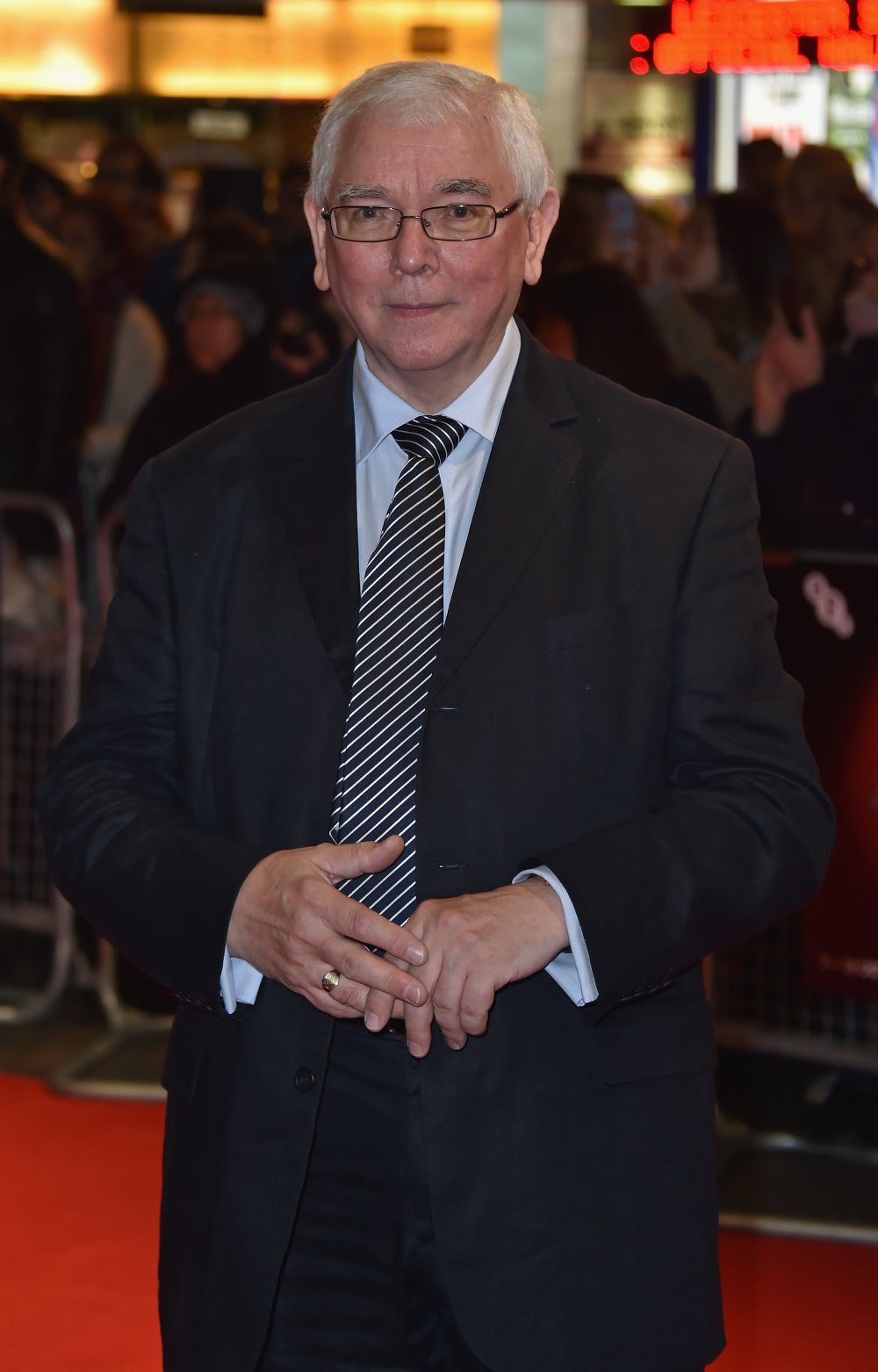
Terence Davies at the Sunset Song premiere
Credit: Gareth Cattermole
‘There isn't really a tradition of this kind of genre cinema in Greece’ – Wednesday 04:45
Questions of cultural identity in modern Greece are fused to American genre tropes in Alexis Alexiou’s Wednesday 04:45. A neon-hued noir bathed in a sickly pallor, the country’s social and economic woes invade the film’s aesthetic as it races towards its bloody climax. Alexiou spoke to Matthew Thrift about what it means to be a Greek filmmaker and his film’s exploration of genre conventions.
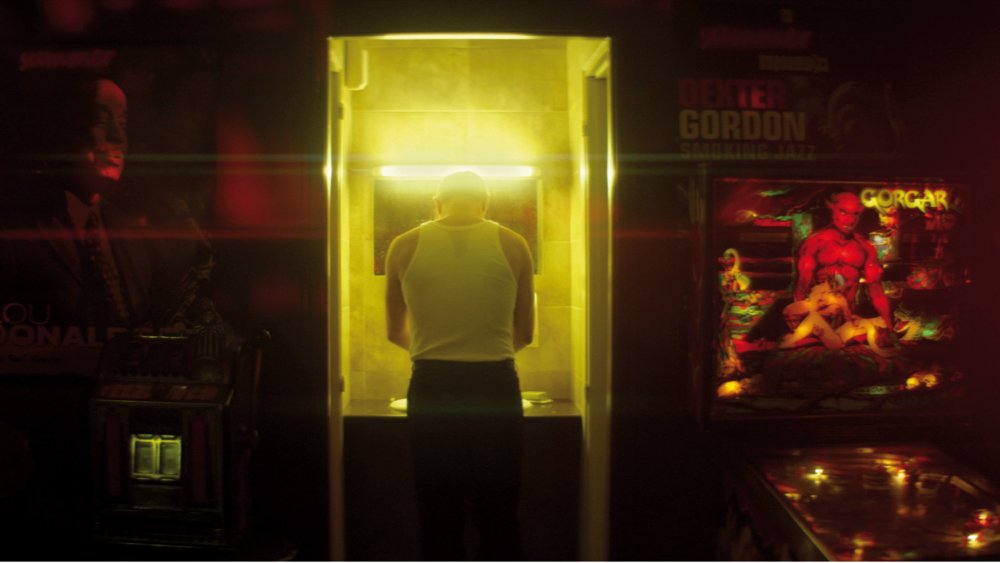
Wednesday 04:45 (2015)
“One of the themes explored in the film is the identity crisis of Greece as a country, and what it means to be Greek. The modern Greek state was created less than 200 years ago, and I believe it’s still searching for its voice, its identity. It’s not very clear to us Greeks whether the country belongs to Europe, to the West or the East, which is one of the problems Greece is facing at the moment. It basically failed to become a modern European country, which is what we’re experiencing at the moment.
Nothing really connects us to ancient times beyond the Acropolis and the monuments. Greece came out of 400 years of occupation by the Turks, and there’s no continuum. The idea of Greece stopped existing, and then was recreated by the Europeans in the 19th century.
If you look at what’s happening at the moment, the situation is very extreme. It’s impossible to ignore what’s going on. If you try to ignore it as a filmmaker, it’s not going to ignore you. So it’s impossible not to address the reality of the situation, to not make a political film. Crime films and film noir is political cinema, the way that it’s connected to socio-economic realities. It’s a great combination, I felt, making a genre film with a political subtext.
The confusion of identity I mentioned invades the aesthetic of the film. There isn’t really a tradition of this kind of genre cinema in Greece. The protagonist running a jazz club is hardly very Greek either, and it all adds to a sense of cultural confusion. It’s impossible to find any kind of funding in Greece now, much worse than when we started shooting, so this is an international co-production. I’m pretty pessimistic, but Greek filmmakers will find a way to keep making films somehow.”
Surprise film chatter
Tonight’s the night that the festival’s best-kept secret will finally be revealed – the final countdown to surprise film time has begun. Twitter is currently ablaze with speculation, rumour-mongering, reminiscence about years gone by, and outright trolling…
‘Australia has a very rigorous drinking culture. When you say ‘I’m not drinking’, it's a crime worse than murder’ – Ruben Guthrie
Here’s director Brendan Cowell discussing Ruben Guthrie, a darkly hilarious skewering of Australia’s macho drinking culture. You can catch the film tomorrow at 6.30pm at Curzon Soho, and again on Sunday at Vue Islington.
‘The film is like an organism, rejecting lots of different things and sucking in the things it needs to thrive.’ – Gold Coast
A brilliantly assured fiction feature debut from Danish documentarian Daniel Dencik, Gold Coast channels Terrence Malick, Werner Herzog and Joseph Conrad for a nightmarish colonial fever-dream set in 1830s west Africa. Matthew Thrift spoke to the director about bringing a modern sound and aesthetic to a period film and his collaboration with Angelo Badalamenti, who provides a killer soundtrack.

Gold Coast (2015)
On Gold Coast’s origins
I’m also a novelist, and I was researching a long poem that I wanted to write about the slave trade. I looked up accounts of eye-witnesses from the time, and there aren’t a lot. At the Copenhagen Library, I found the letters of this man, Wulff Joseph Wulff, who was sent to Africa in the 1830s. They were really desperate, lonely and angry, and I couldn’t forget them. The question of the slave trade didn’t make it into the poem, but it kept haunting me, so I decided I had to make a movie about it. We don’t know much about this in Denmark. In school, we’re only taught that there was some kind of colony in the West Indies, not that Denmark was such an active player in the international slave trade.
On bringing history to life
Cinema is one of the best tools with which to do that. With the enormous freedom that cinema gives, comes a huge responsibility. Those things go hand in hand for me. I wanted to make it personal too though, and I wanted to make it modern. I’m not that interested in historical correctness, more in conveying an emotional message. I think the film works best when it’s pure emotion, with music and pictures. That’s for me what cinema is, it’s at its most cinematic when there are no words left to say.
On the film’s modernism
The costume designer, Jane Marshall Whittaker, presented me with images of 1980s bands like Spandau Ballet. It’s a film about romanticism, and if you look at these men, there are a lot of similarities between what was happening in the 80s British pop scene, the same kind of aesthetics. The music also plays a huge part. When Angelo Badalament composed the theme, the electronic keyboards took the whole post-production process in this very modern direction.
On Badalamenti
I have a rule that I don’t use temp music. The film finds its own voice, it’s like an organism, rejecting lots of different things and sucking in the things it needs to thrive. It needed the music of Angelo Badalamenti. I knew Mary Sweeney, the editor of many of David Lynch’s films, who put the idea to Angelo. I went to his house in New Jersey and told him about the film, and he just started playing along to some really rough-cut scenes. We refined it before I brought in some young electronic musicians from Denmark to take it even further. He was so open to that, and approved everything I presented to him.
Todd Haynes Screen Talk
Last night festival director Clare Stewart was joined by filmmaker Todd Haynes for an in-depth look at his rich and varied filmography. Missed it? Don’t worry, Simran Hans took notes.
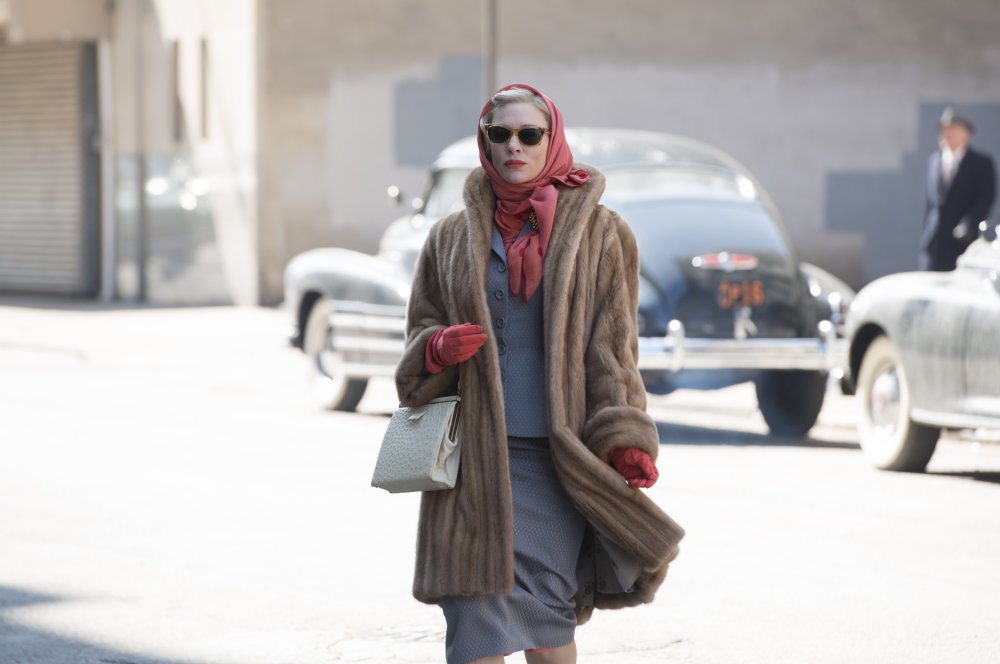
Carol (2015)
On being a pioneer of the New Queer Cinema movement
People expect overt gay content (from me), but I’m more interested in the question of ‘what is queer filmmaking?’ Can we also talk about it in terms of style and language, and people who push up against the confines of society and make that their artistic stature?
On Far from Heaven
I really wanted to pay homage to these extraordinary films by Douglas Sirk, in which there are no villains. I remember critics saying that I was showing my hand by talking about looking beneath the surface of things, as if that was the message of the film. In fact, it was exactly the reverse – that the surface reveals everything, and that was what was so remarkable about Sirk. Fassbinder talks about this – ‘the films of Douglas Sirk are descriptive films’ – they’re not rooted in identification; in the shot-reverse shots, you’re always aware of the looker in the frame. You’re always outside looking in at very rigid social circumstances. It’s all about the language of the surface and how that determines our choices.
On his interest in representing minorities
I really wanted to create a sort of tangle of different social minorities in Far From Heaven, in a way that forced you to compare the relative statuses of the wife, the black gardener and the husband who is dealing with his homosexuality. Their statuses can be compared, but there are surprising differences in the mobility that is offered to them.
On illness as a theme in his films
Questions of illness, questions of what immunity means, questions of the impact of this devastating health crisis (the AIDS epidemic) on the gay community and the black community and how it propelled questions of health and identity and marginality, and fuelled that with a new and urgent immediacy – that was propelling these themes of illness and the body (in Poison, Safe and Superstar: The Karen Carpenter Story).
On Carol
What it really made me think about – and this distinguished it considerably from Sirkian melodrama – is that it was so rooted in a singular point of view. It’s a story about the first, frightening steps we take falling in love and how isolated we are in that state. In many ways, Therese (Rooney Mara) conjures Carol (Cate Blanchett) up.
Surprise film reactions
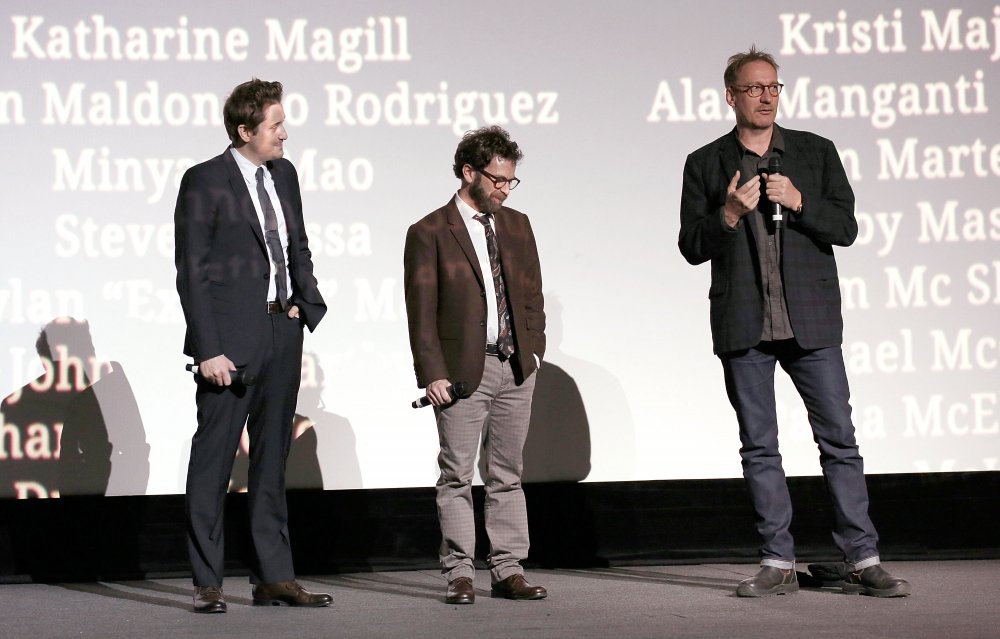
Duke Johnson, Charlie Kaufman and David Thewlis at the Surprise Film screening of Anomalisa
Credit: John Philips
As a fair few of you had guessed, last night’s surprise film was Charlie Kaufman and Duke Johnson’s exquisite stop-motion animation Anomalisa, fresh from its rapturously received world premiere at last month’s Venice Film Festival. As an added bonus, the co-directors were in attendance, alongside actor David Thewlis, who lends his voice to protagonist Michael Stone. Sounds like a pretty nice surprise to us…
Another beguiling work from British artist Ben Rivers
The undefinable artist and experimental filmmaker Ben Rivers nimbly traverses difficult terrain, both ethically and physically, in his new and elusive feature film The Sky Trembles and the Earth is Afraid and the Two Eyes are not Brothers, writes Ben Nicholson.
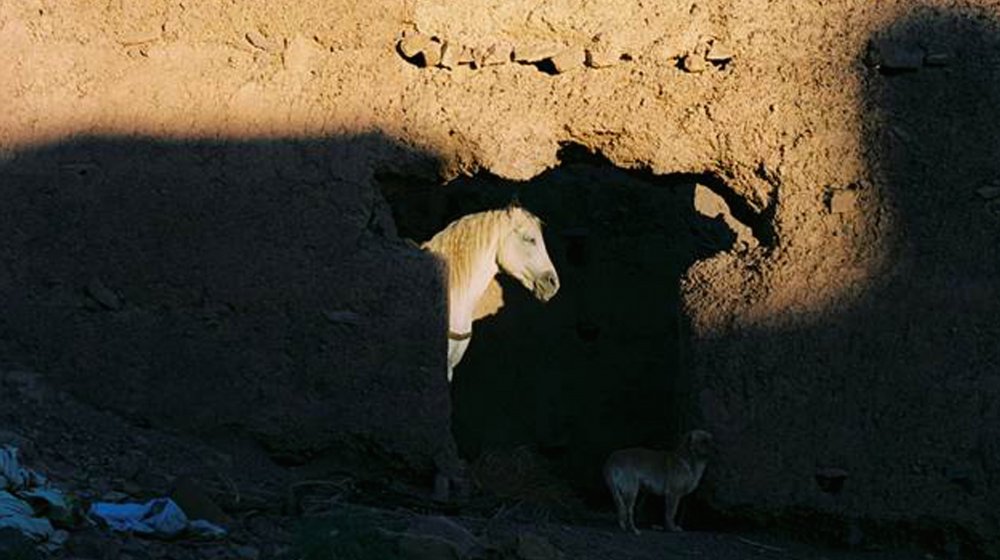
The Sky Trembles and the Earth is Afraid and the Two Eyes are Not Brothers (2015)
Based on Paul Bowles’ short story A Distant Episode, the film presents a vision of Morocco untethered from time, and examines how its depiction on screen has shaped our collective understanding of the country. Amid the stunning landscapes of the Atlas mountains, Rivers shoots on old, long-abandoned film sets, and takes us behind the scenes of current film shoots in the region.
Rivers delves into the thorny issue of the representations of North African people on screen via Bowles’ alarming ‘European abroad’ narrative, but punctuates this with joyful musical interludes and sojourns into ethnographic essay. As with everything Rivers does, this is a beguiling and esoteric work. While it is unlikely to convert naysayers, fans will be more than impressed and left which much to ponder.
Paolo Sorrentino Screen Talk
If you missed Thursday’s on-stage discussion with Italian maestro Paolo Sorrentino, you can now watch the whole event here. There’s a final chance to catch the Oscar-winning director’s latest film Youth tomorrow at 6pm at the Picturehouse Central.
Charlie Kaufman on Anomalisa
Here’s an exclusive clip from last night’s surprise film Q&A, in which co-director Charlie Kaufman discusses the inspiration behind the breathtakingly inventive Anomalisa.
Day 11 on Twitter
It would appear you’re all making the most of the final Saturday of the festival (sniff). Twitter is currently awash with cinema selfies, hastily-taken snaps of visiting filmmakers, and raves for films like Victoria, Closet Monster, Dheepan and Goosebumps.
It’s awards time!
We’ll soon be decamping to Banqueting House Whitehall for the BFI London Film Festival Awards ceremony. We’ll be live-blogging throughout the event, which is due to kick off at 9.15pm. In the meantime, make sure you’re following the BFI on Twitter for videos, pictures and quotes direct from the red carpet.
We’re safely ensconced in the Banqueting House press room, with seemingly stable WiFi, so we’re all set to bring you news from tonight’s awards ceremony as it happens. We’re due to kick off in around 10 minutes, so stay tuned…
One award we already know the result of is the latest BFI Fellowship, which will be presented tonight to Cate Blanchett. Here she is at Wednesday’s American Express Gala, singing the praises of Carol director Todd Haynes.
And we’re off! First up it’s festival director Clare Stewart, explaining the process by which films are shortlisted for the awards: “The first question we ask ourselves is ‘did the film succeed on its own terms?’”
And here’s our host for the evening, Jarvis Cocker, kicking things off with his finest Travis Bickle impersonation.
After a predictably eccentric opening speech, Jarvis has declared it’s time to get down to business: “LFF, WTF, time to get your award on people.”
First award of the evening is the Grierson Award for best documentary. Grierson trustee and documentary filmmaker Alex Cooke is here to announce the winner…
And the winner is… Sherpa.

Sherpa (2015)
Alex Cooke said “We applaud this impressive film for giving voice to this previously voiceless community, and we really hope it reaches the wide, general audience that it deserves.” Director Jennifer Peedom is here to collect the award.
Special mention was also given to Patricio Guzmán’s The Pearl Button.
Now here’s Chiwetel Ejiofor, introducing a montage of clips from Best Film nominees.
Now here’s filmmaker Shezad Dawood to present the award for Best Short Film, a new prize for this year.
And the winner is… An Old Dog’s Diary, a lyrical portrait of Indian artist Francis Newton Souza by Shai Heredia and Shumona Goel.
Jury president Daisy Jacobs said “An Old Dog’s Diary is as poetic and soulful as its subject. It offers a fresh and original way of documenting the life of an artist. It looks beautiful, sounds beautiful, but, more than that, it tells us about the beauty of the human spirit”.
Here’s actor Allen Leech to introduce the nominees for the Sutherland Award for best first feature. He’ll be presenting the award alongside filmmaker Desiree Akhavan.
And the winner is… The Witch, Robert Eggers’ nerve-shredding 17th century-set horror film.
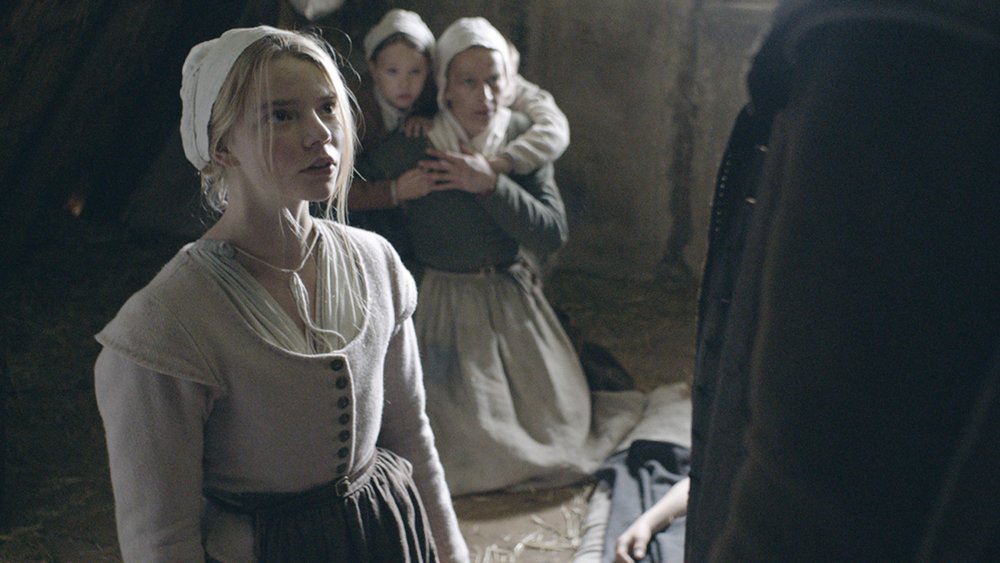
The Witch (2015)
Desiree Akhavan said “Of the nominated films, one stood apart as the announcement of a new voice in contemporary cinema. A horror film that felt as though it were reinventing the genre with each frame and truly shocking moments that evoke both terror and empathy”.
The film’s stars Anya Taylor-Joy, Ralph Ineson and Kate Dickie were on hand to accept the award on behalf of Eggers, who’s back in New York.
Special mention was also given to Martin Butler and Bentley Dean’s Tanna. Desiree Akhavan said “It’s a rare skill to give a voice to a typically marginalised community that doesn’t condescend or patronise and for this reason the jury would like to give special mention to Tanna”.
Now for the big one. The winner of this year’s Best Film award is… Chevalier.

Chevalier (2015)
Jury president Pawel Pawlikowski said “With great formal rigour and irresistible wit, Athena Rachel Tsangari has managed to make a film that is both a hilarious comedy and a deeply disturbing statement on the condition of western humanity”.
Director Athena Rachel Tsangari choked back tears as she accepted the award: “I try not to make emotional films because I get way too emotional.”
And here’s none other than Ian McKellen to present the final award of the evening, the BFI Fellowship, to Cate Blanchett.
And now for a montage reminding us of some of Blanchett’s finest work, with filmed tributes from a host of industry luminaries, including her Hanna co-star Saorsie Ronan, and Carol director Todd Haynes.
Blanchett’s warm and witty acceptance speech tore the house down. Here are a few choice quotes…
“This is like a cross between an obituary and a tribute. I feel like I’ve died and gone to heaven.”
On tonight’s video tributes: “I just saw their lips moving, I couldn’t hear a word they said, but I’m deeply touched.”
“I’m deeply honoured… because it’s a career award, which I’ve never even contemplated before… Thank you to the BFI for reminding me that I’m quite long in the tooth.”
“In this country there’s a long deep understanding that actors are part of the national conversation.”
She also gave special thanks to Working Title’s Tim Bevan and Eric Fellner for taking a chance on her by casting her in Elizabeth (1998): “I don’t think I’d be standing here without them.”
And that’s it for tonight. Join us tomorrow for one final day of festival excitement, culminating in the Closing Night gala screening of Steve Jobs.
Steve Jobs first reactions
And so here we are, kicking off another day’s live-blogging for the final time this year. First up, the verdicts from this morning’s Steve Jobs press screening are in, and it looks like the festival is set to go out with an almighty bang…
Festival awards in pictures
A choice few snaps from last night’s star-studded awards ceremony at Banqueting House…

Cate Blanchett and Sir Ian McKellen at the BFI London Film Festival Awards ceremony
Credit: John Philips
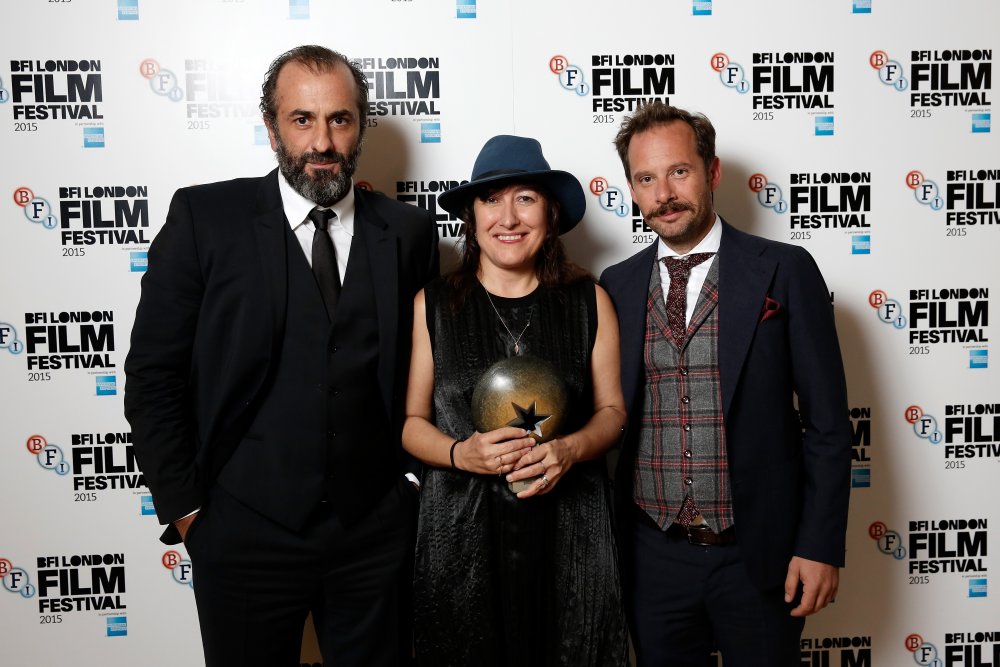
Panos Koronis, Athina Rachel Tsangari and Giorgos Pyrpassopoulos with the Best Film award for Chevalier
Credit: John Phillips
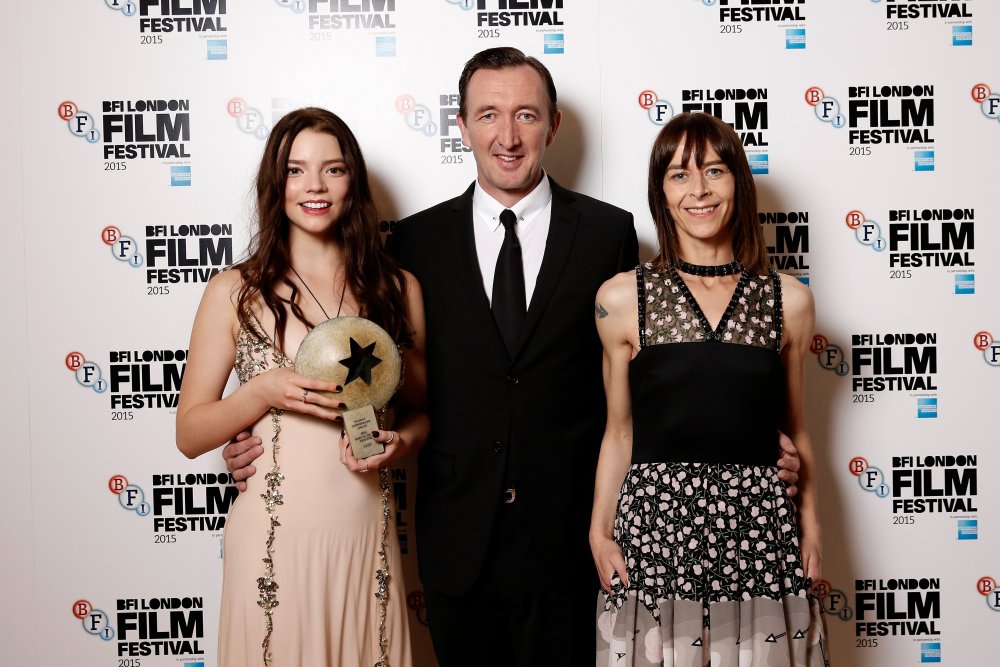
Anya Taylor-Joy, Ralph Ineson and Kate Dickie, stars of Sutherland Award-winner The Witch
Credit: John Philips
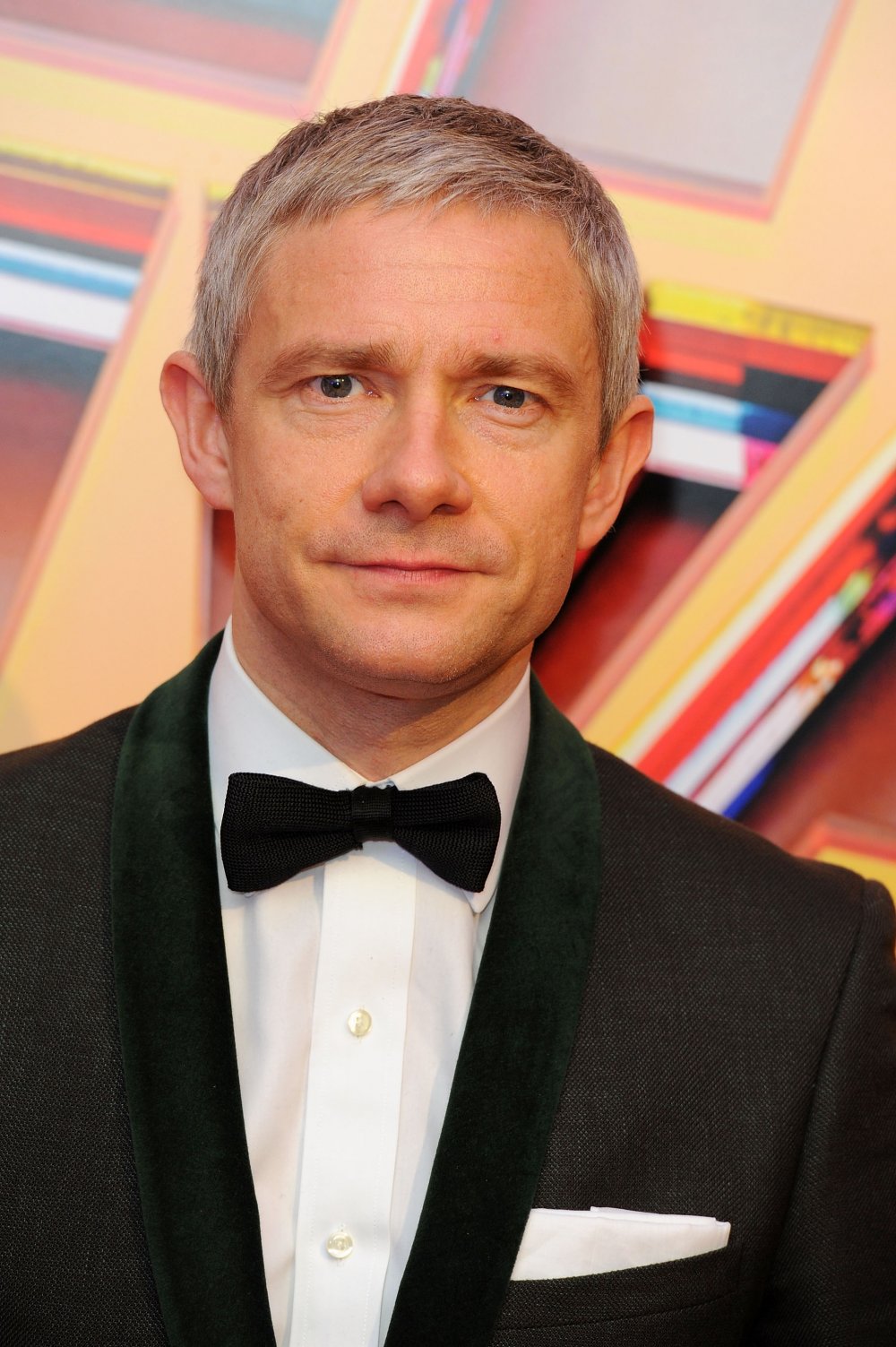
Martin Freeman
Credit: Eamonn M. McCormack
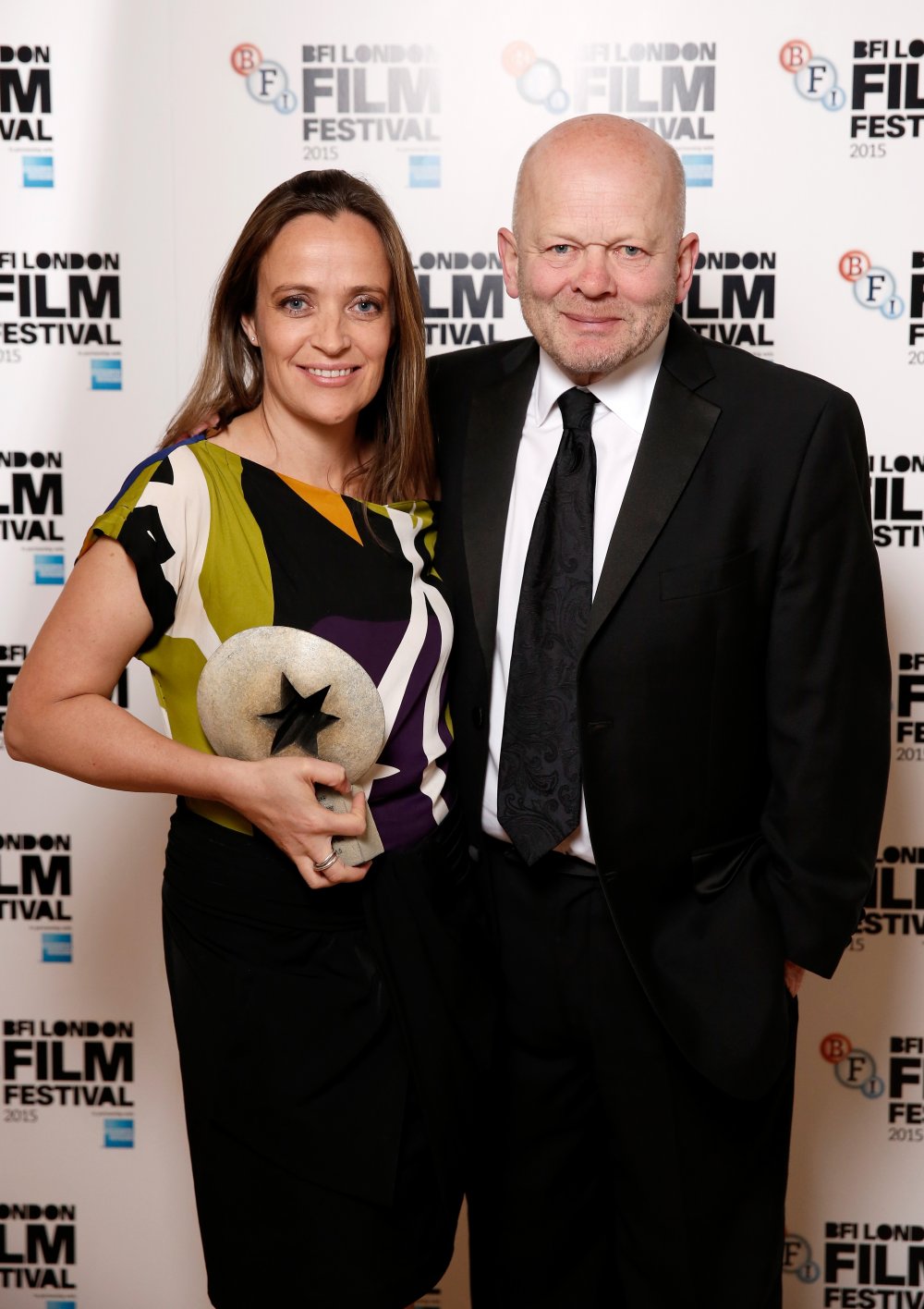
Sherpa director Jennifer Peedom and producer John Smithson with their award for Best Documentary
Credit: John Philips
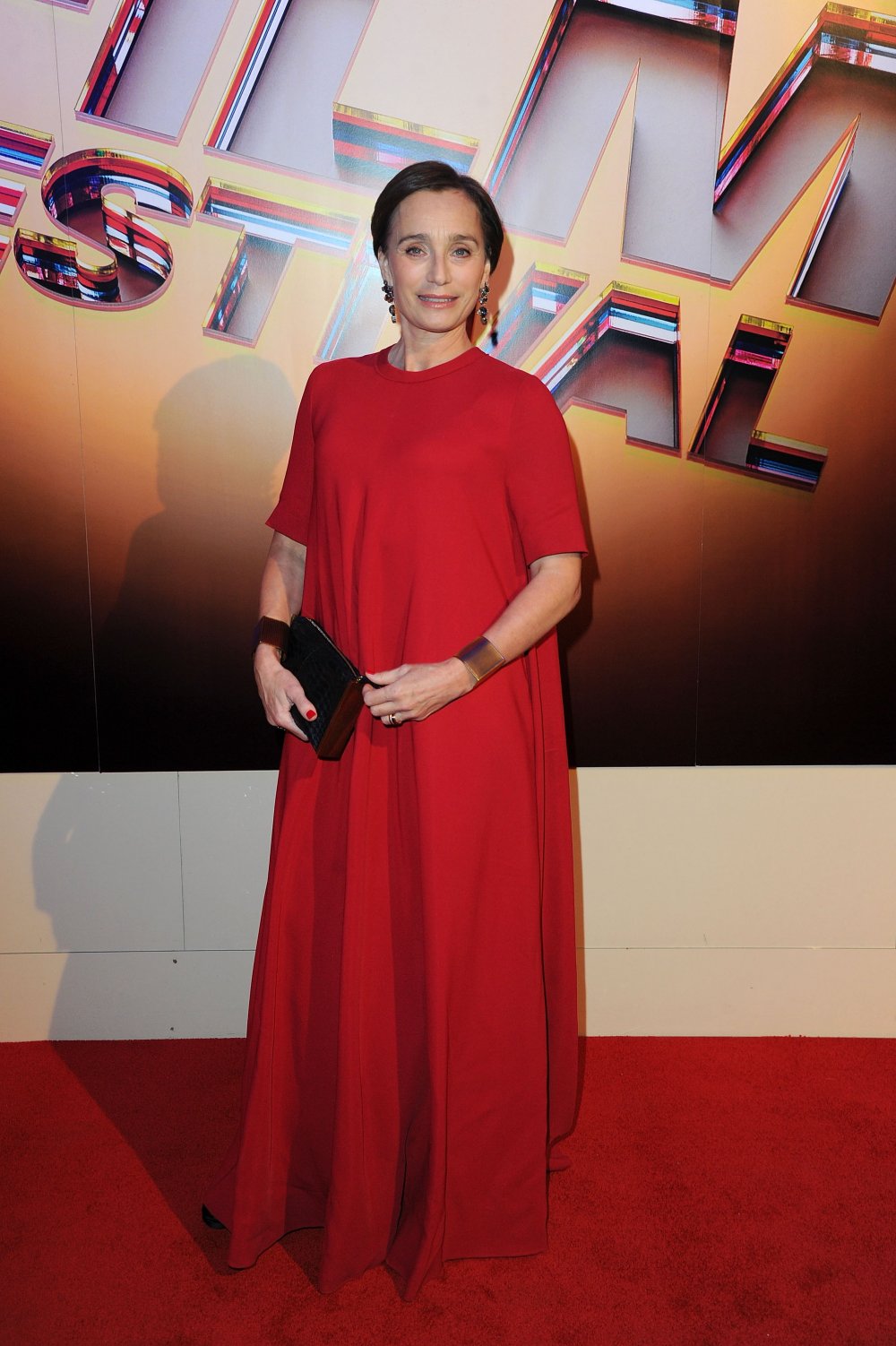
Kristin Scott Thomas
Credit: Eamonn M. McCormack
LFF top fives
It’s time for our blog contributors to reflect on 12 days of binge-viewing, and separate the wheat from the chaff with their picks of the festival. First up, here’s Ben Nicholson with his top five.
5. Anomalisa
This new trip from the mind of the always-fascinating Charlie Kaufman is an unnerving puppet show about love, alienation and homogeny. It never quite spins fully off its axis into madness, and is all the more resonant for it.
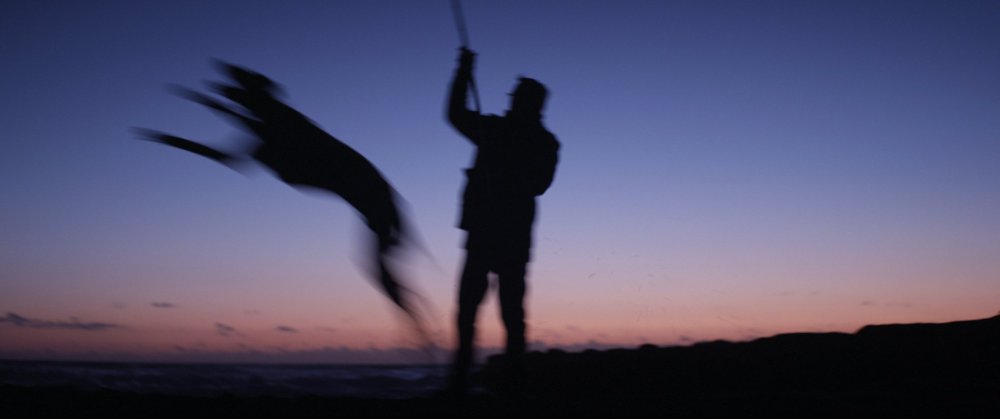
The Club (El Club, 2015)
4. The Club
A strangely expansive chamber piece, Pablo Larrain’s latest is a stinging indictment of ecclesiastical cover-ups. Powerful and thought-provoking, with exceptionally nuanced performances.
3. Arabian Nights
At times frustrating, but more often utterly sublime. Its three volumes may not quite be of equal merit, but taken as a whole this is transcendental work from Miguel Gomes. A kaleidoscopic voyage through austerity-stricken Portugal.
2. Son of Saul
It’s rare that you watch a new film about the Holocaust and come away feeling you’ve seen something truly original. László Nemes’ account is up close and personal, holding the horror and chaos of the Nazi machine at the edge of frame.

The Assassin (Nie Yinniang, 2015)
1. The Assassin
Hou Hsiao-Hsien crafts an epic tale in quiet moments. The Assassin is a stunning narrative full of intrigue, revenge and swordplay that ignores convention and soars because of it. Its beauty is unparalleled at this year’s festival.
LFF top fives
Simran Hans gives special shout-outs to Room, Evolution and A Bigger Splash but was particularly impressed by this year’s American indies. Here’s her top five.
5. Chevalier
Perhaps it takes a woman’s perspective to see a man clearly. Athina Rachel Tsangari directs her razor-sharp gaze at a group of men-children, cutting through their hilarious pantomime of male bravado. The festival’s competition winner is one of the funniest films I’ve seen all year, and had the audience howling with laughter.
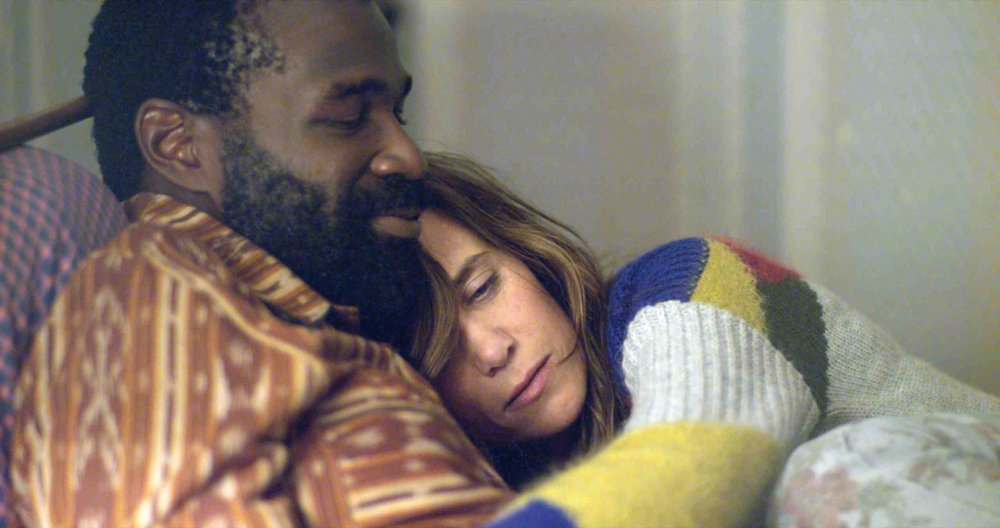
Nasty Baby (2014)
4. Nasty Baby
A high-concept film in every sense of the word, Nasty Baby offers a biting commentary on New York’s creative class, finding nightmarishly dark comedy in the rigmarole of gentrification. Lovely, low-key performances also abound from Kirsten Wiig, TV on the Radio’s Tunde Adebimpe, and writer-director Sebastián Silva himself.
3. Tangerine
Exhilaratingly grandiose in scope and style, despite its lo-fi limitations (the film was shot an iPhone), Tangerine’s ambition, originality and energy impress. To try and surmise the plot would do the film’s kind, complicated heart a disservice, but it’s essentially a buddy comedy about two transgender prostitutes wreaking havoc on the streets of Los Angeles.

Queen of Earth (2015)
2. Queen of Earth
It’s not often that women are allowed to be ugly in films. In Queen of Earth, Elisabeth Moss and Katherine Waterson embrace the rare opportunity to explore their cruellest impulses in this bitter fable about female friendship turned sour. A crushingly truthful portrait of two women, in all of their ugly complexity.
1. Carol
Carol is a perfect film. Unfolding with the all-consuming urgency of a new love affair, it never feels rushed or hurried. Carter Burwell’s soaring, achingly romantic score, the nostalgia conjured by beautiful 16mm film stock, the tender glances exchanged by Rooney Mara’s Therese and Cate Blanchett’s Carol: just thinking about this film sends me into emotional overdrive. I can’t remember the last time I saw such a pure, timeless, enveloping love story on screen.
‘He had a vision in the mid-70s… and here we are, living it’ – Steve Jobs
This afternoon, Danny Boyle, Aaron Sorkin, Michael Fassbender, Kate Winslet, Jeff Daniels and Katherine Waterson assembled before the press to talk Steve Jobs. Simran Hans was there to capture the highlights.
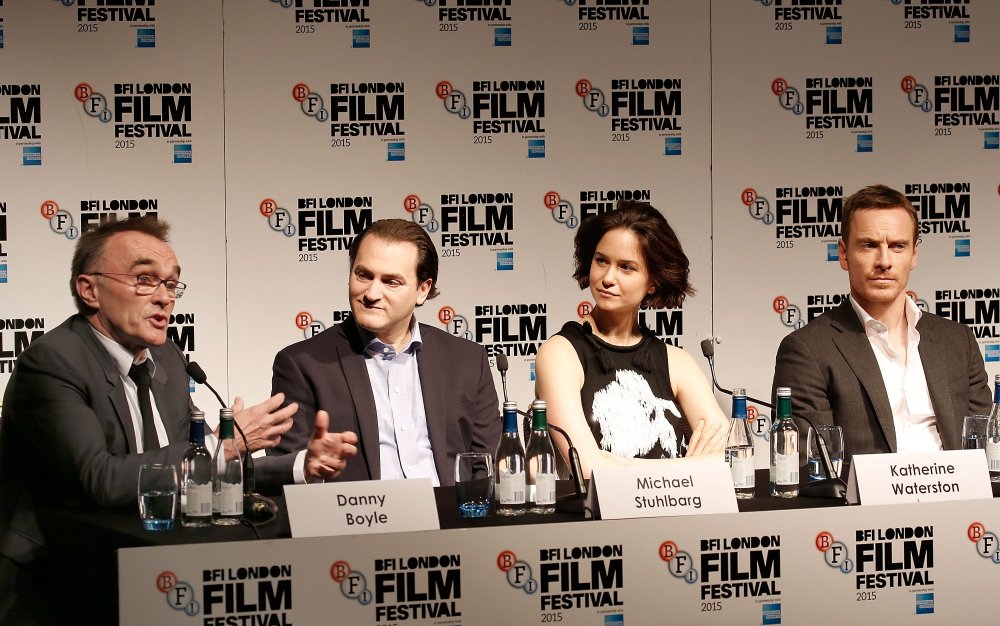
Danny Boyle, Michael Stuhlbarg, Katherine Waterston and Michael Fassbender at the Steve Jobs press conference
Credit: John Philips
On the script’s language, ‘Sorkinese’
Aaron Sorkin: I’m most comfortable as a playwright. I feel like I kind of fake my way through movies. I love the sound of dialogue, it sounds like music to me, so I wanted to imitate that sound. I wanted to find my way through with language, and I also like very claustrophobic spaces (and) compressed periods of time. All those things factored into making this.
On theatre vs film
Danny Boyle: We wanted to make it an immersive experience. I love theatre, but I love cinema more because it has that weird, illogical thing where you get lost in it.
On working with Michael Fassbender
Danny Boyle: I knew the way Michael would approach it would be uncompromising. He’s not interested in a hatchet job, he’s not invested in a deification, he’s interested in the truth.
Kate Winslet: Michael didn’t have any stuff around him, he was just Michael doing the job, setting the bar very, very high for all the other actors.
On combining film with digital
Danny Boyle: We shot the first act on 16mm, which of course was because it was the early days, and also because (Jobs) felt like a guy fighting all these impossible forces that were stopping him getting to this vision, and it felt like a rough, homemade version as if they’d done it in their garage. Then we moved to 35mm for the second act, which is a beautiful storytelling act because it’s an illusion act, and then we moved to digital. The third part is set in 1998 and although the Alexa camera, which is what we used, wasn’t generally in use then in cinema, Jobs had already gone there of course, because he released Pixar’s Toy Story in 1996. I remember going to see it in Leicester Square and thinking “the world has changed.”
On being inspired by Steve Jobs
Michael Fassbender: The fact that he had a vision in the mid-70s and continued striving towards that vision, and here we are, living it – I think that’s extraordinary passion, commitment and focus. Anybody who rolls the dice like that… I think that’s pretty inspiring.
LFF top fives
Next up with a list of festival favourites, here’s Paul O’Callaghan…
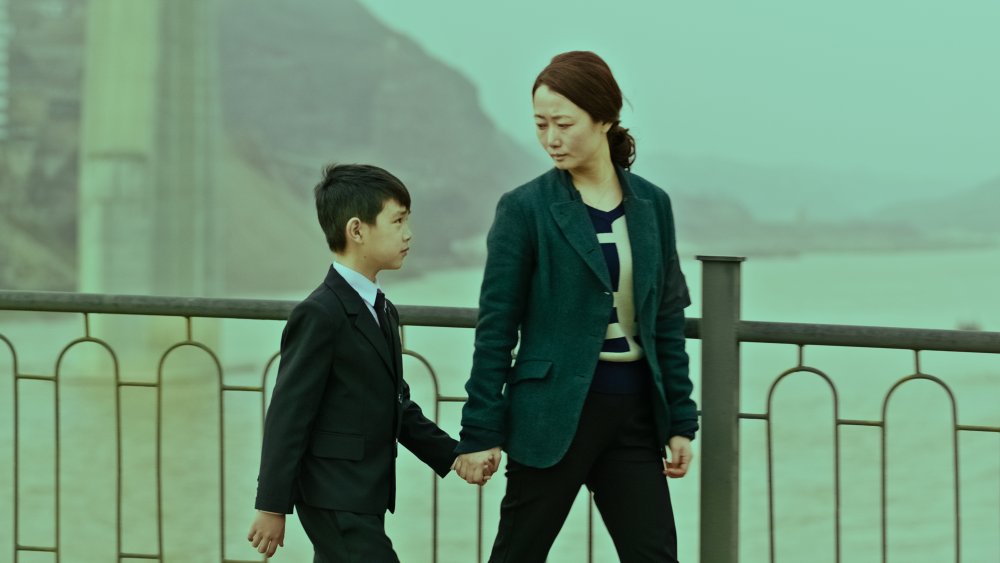
Mountains May Depart (Shan He Gu Ren, 2015)
5. Mountains May Depart
I can’t get enough of Jia Zhangke’s poetic, playful evocations of contemporary China – Still Life (2006) is one of my favourite films of the past decade. I didn’t quite fall head over heels in love with Mountains May Depart on first viewing – a final-act excursion to a near-future Australia left me baffled at points – but it’s a film I can’t wait to revisit. It’s a sweeping, decades-spanning tale of love, loss and capitalist greed which, as is par for the course with Zhangke, looks absolutely exquisite.
4. Evolution
Lucile Hadžihalilović’s mesmerising debut Innocence was one of the first films I ever saw at the LFF, way back in 2004. The decade I’ve waited for a follow-up was worth it. Set on a mysterious sun-drenched island inhabited seemingly only by young women and boys, Evolution blends Cronenbergian body horror with a Lynchian sense of the uncanny, to quite stunning effect.
3. Tangerine
Sean Baker’s headline-grabbing Sundance smash is 88 minutes of pure joy. It’s a bracingly authentic, blisteringly paced tale of a transgender sex worker’s quest for revenge, and her best friend’s increasingly desperate attempts to stop her from heading back to jail. Equal parts crime thriller and screwball sex farce, it’s the most audacious American indie film in recent memory.
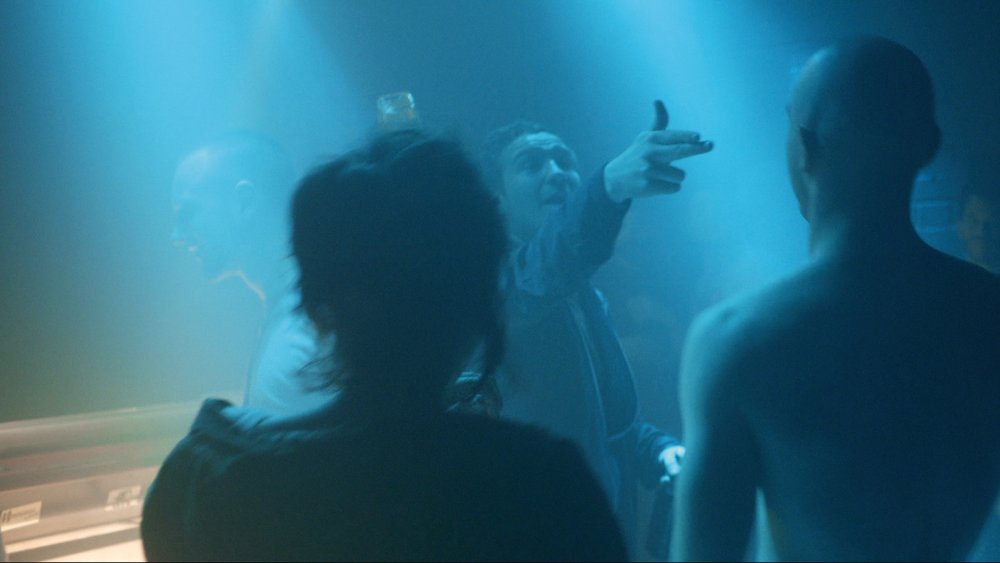
Victoria (2015)
2. Victoria
Sebastian Schipper’s single-take thriller has rightly been hailed as a technical marvel, but there’s far more to Victoria than virtuoso cinematography. What starts out as a woozily romantic, grittily authentic portrait of late-night Berlin gradually reveals its true identity as a nerve-shredding heist film. Schipper ratchets up the tension to almost unbearable levels, and seems to revel in stacking the odds against his beguiling protagonist.
1. Carol
Todd Haynes’ adaptation of Patricia Highsmith’s The Price of Salt is virtually flawless. More restrained than the sumptuously melodramatic Far From Heaven, it builds slowly and deliberately to an almost transcendental climax. The final scene is the most intoxicating moment of pure cinema I’ve experienced all year, and my absolute highlight of the festival.
Steve Jobs red carpet highlights
Our Closing Night Gala screening of Steve Jobs is underway. Feast your eyes on some fantastic snaps from the red carpet.
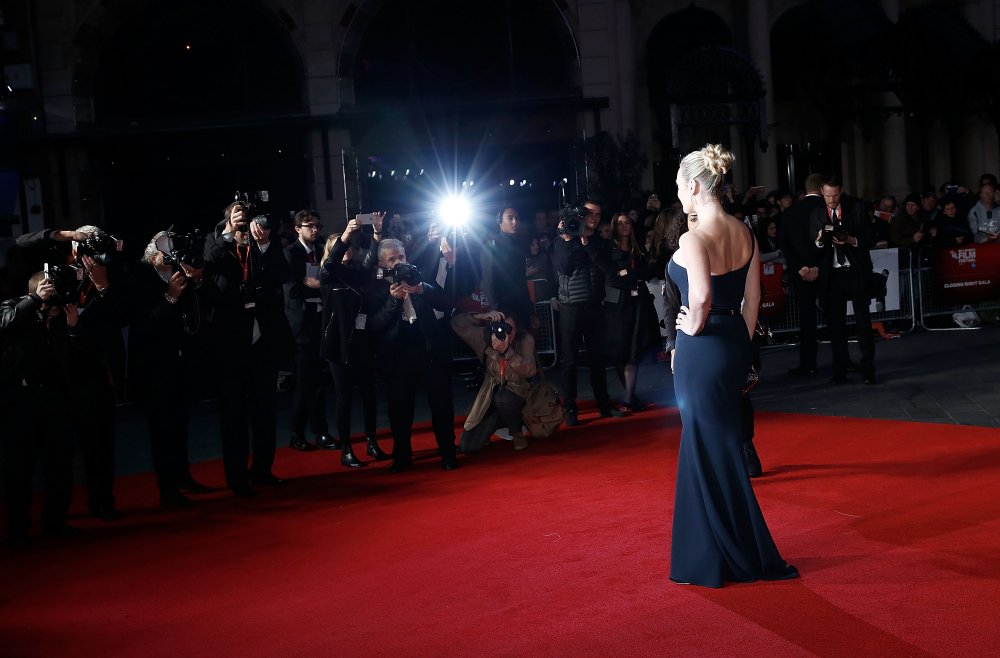
Kate Winslet
Credit: John Philips
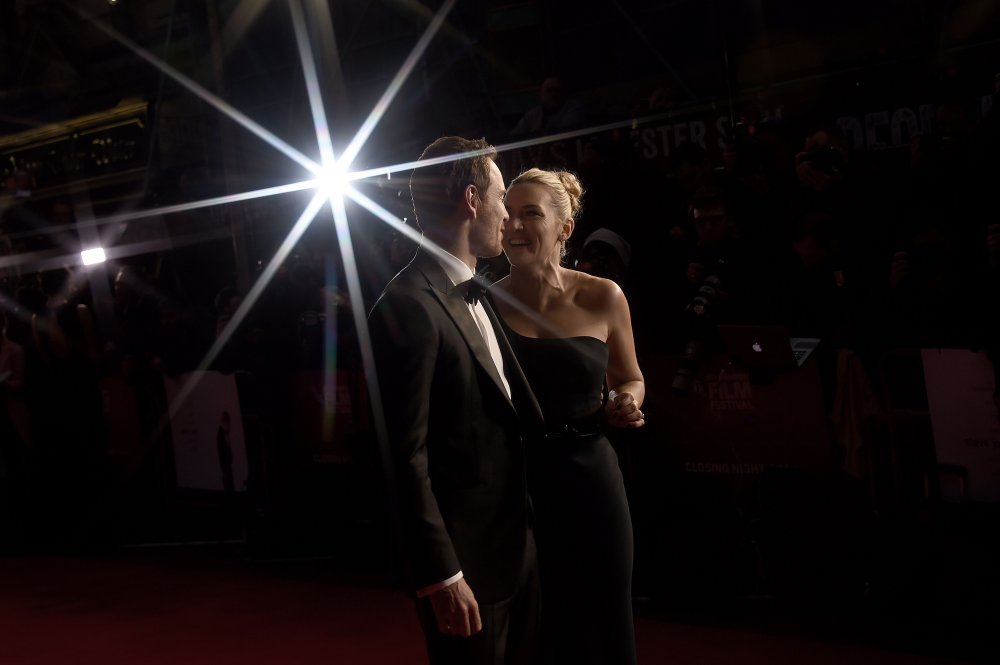
Michael Fassbender, Kate Winslet
Credit: John Philips
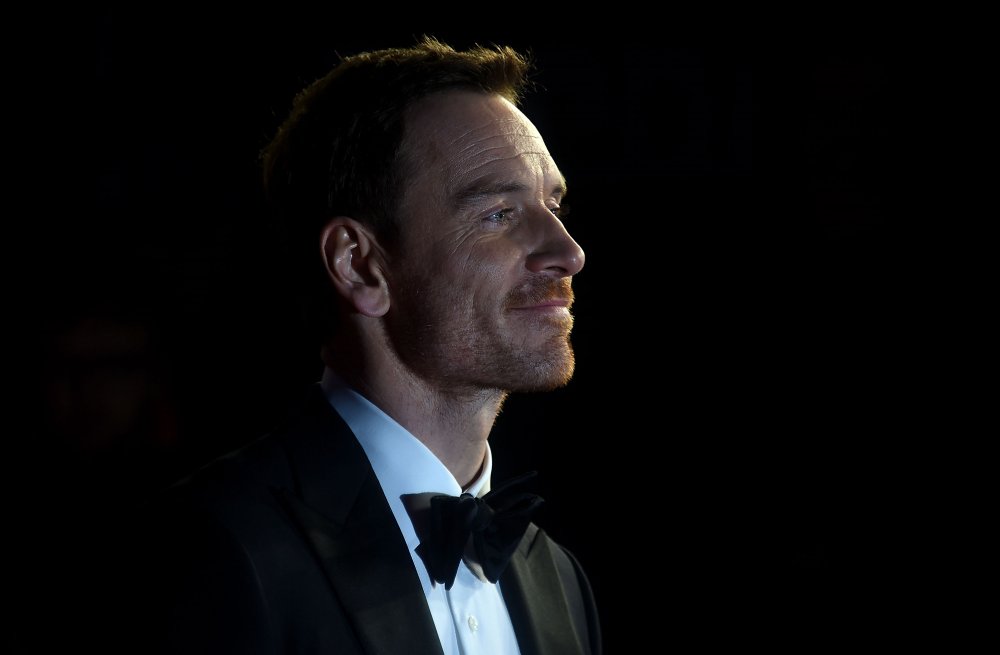
Michael Fassbender
Credit: John Philips

Kate Winslet
Credit: John Philips
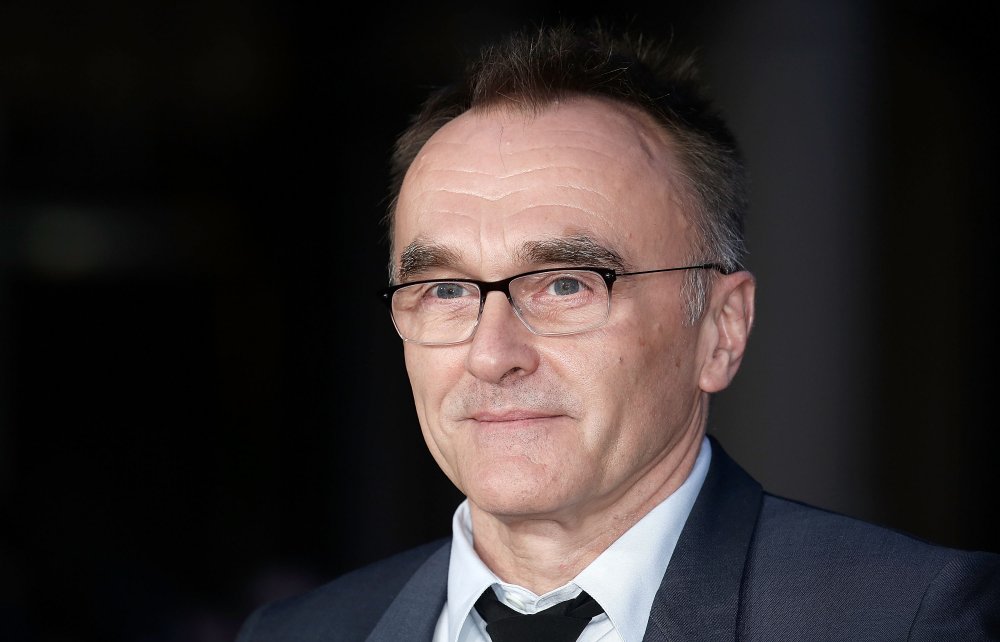
Danny Boyle
Credit: John Philips
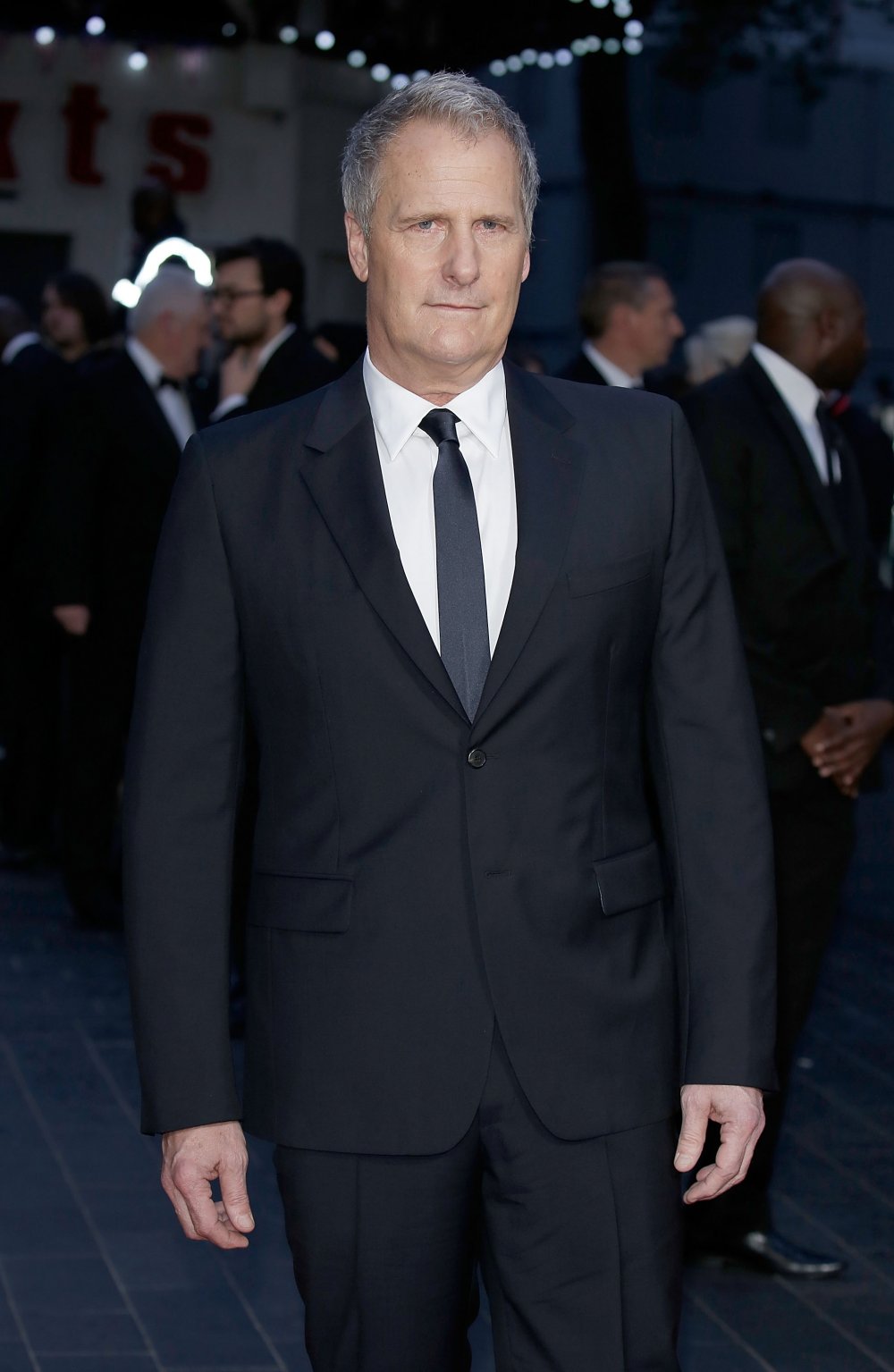
Jeff Daniels
Credit: John Philips
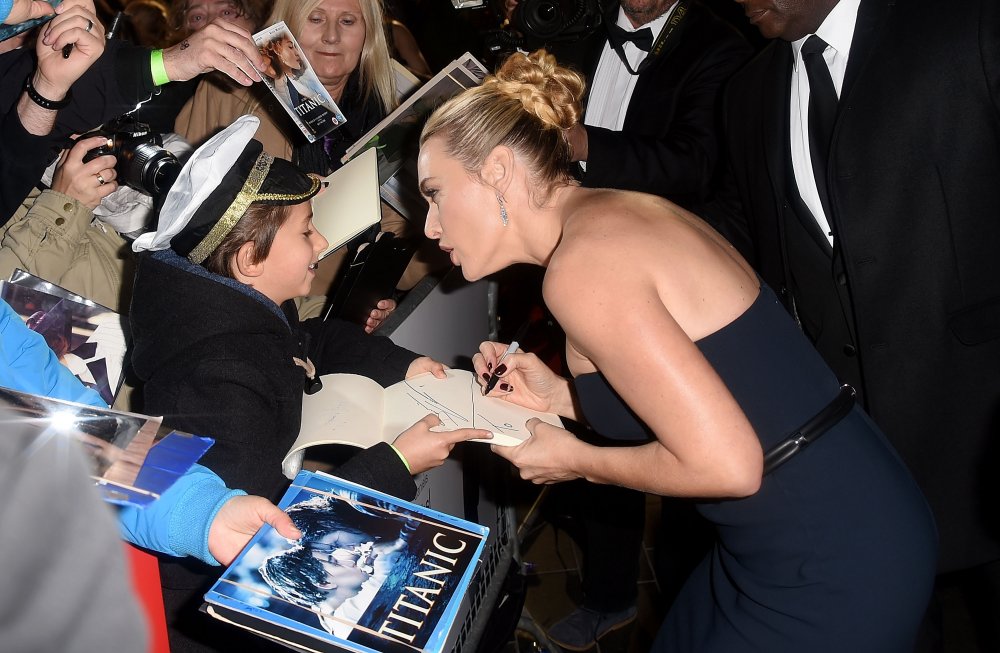
Kate Winslet
Credit: John Philips
LFF top fives
Closing night may have been and gone, but we have a final couple of posts to ease you gently back into the dull reality of post-festival life. First up, here’s Georgia Korossi with her top five.
5. Taxi Tehran
Iranian director Jafar Panahi poses as a taxi driver in his latest film. He drives through the streets of Tehran, capturing moments from the daily lives of the city’s residents with a camera hidden in his car. At times the film offers a grim outlook for the country’s future, but an appearance by Panahi’s niece gives some cause for optimism.
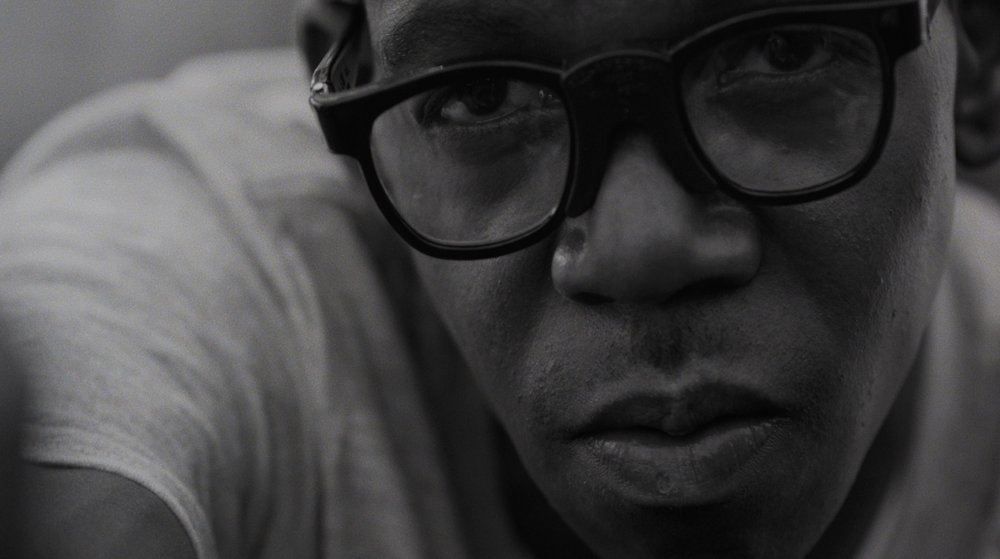
Cronies (2015)
4. Cronies
Michael J Larnell’s feature is about male friendship and trust in modern society. With outstanding black and white cinematography, Cronies is a sharp work that holds your attention to the end of the credits. Filmed in St. Louis with local actors, it features an irresistible hip hop soundtrack, including contributions by local indie artist Raye Cole. When it was screened to Spike Lee at New York University, he immediately came on board as an executive producer.
3. Gayby Baby
Maya Newell’s Gayby Baby is a journey into the lives of three Australian 12 year-olds with same-sex parents. At the time of writing this PG-rated film is banned from being screened in schools in New South Wales, despite the fact that there’s literally nothing here that might be deemed offensive. The film simply demonstrates that these kids live utterly normal lives, facing everyday difficulties with the support of loving, generous parents. But the children are fully aware that their families are viewed as different, and raise some timely questions.
2. The Pearl Button
The new film by Chilean documentary master Patricio Guzmán is as eerie as it is enlightening. It’s both a meditation on southern Chilean history, and a mesmerising study of the Pacific Ocean. This powerful rumination on life, water, and its hidden mysteries is every bit the equal of Guzmán’s 2010 masterpiece Nostalgia for the Light.
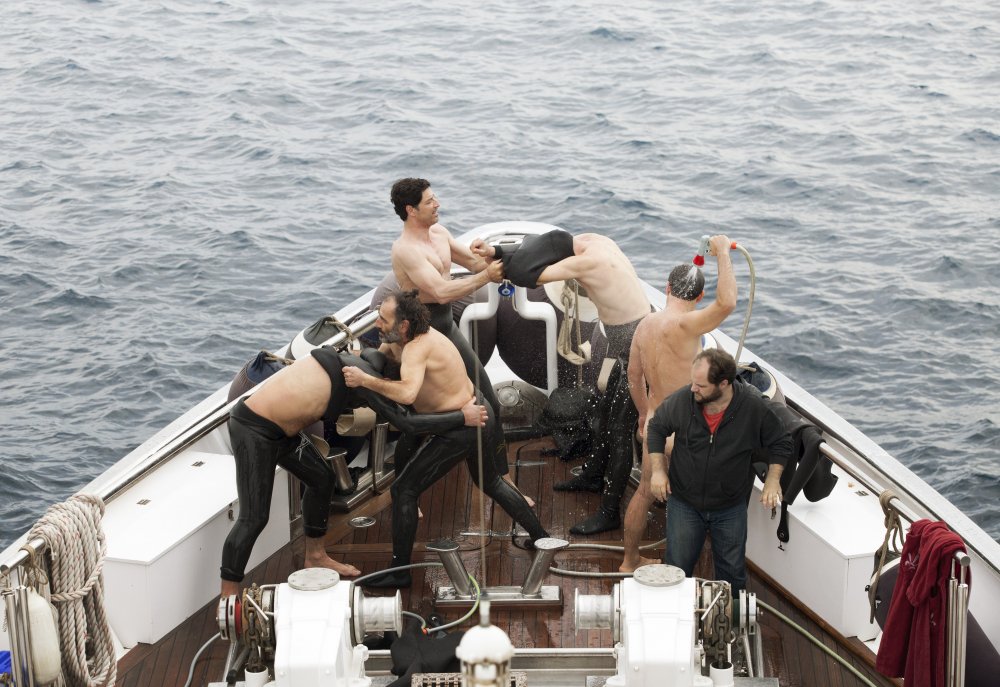
Chevalier (2015)
1. Chevalier
Winner of the Best Film award at this year’s festival, Athina Rachel Tsangari’s follow-up to Attenberg (2010) is a study of male egotism that will have you laughing all the way through. It’s shot mostly on board a private yacht, and the claustrophobic cabins inhabited by its passengers and crew are contrasted with beautiful shots of the Mediterranean sea. Tsangari is the first female Greek filmmaker to receive wide international acclaim, and she absolutely deserves this.
LFF top fives
Now it’s the turn of Matthew Thrift, who found the process of whittling down his favourites somewhat agonising…
Given how difficult it is to choose a mere five titles from what’s proven to be a stellar line-up, ranking them as well amounts to a Sophie’s Choice too far. So I’ve cheated and listed my top five films alphabetically, a selection that could easily have been extended to a top 20. If it has to be just five, allow me some honourable mentions here for The Forbidden Room, Happy Hour, Victoria, Office, My Golden Days, The Pearl Button and Notfilm.

Arabian Nights (As Mil e Uma Noites, 2015)
Arabian Nights
Miguel Gomes’ sprawling, state-of-a-nation triptych takes an endlessly surprising series of turns over the course of its six and a half hour running time. Funny, beguiling and formally inventive, it’s a monumental achievement by any standards.
The Assassin
You couldn’t get further away from Gomes’ trilogy than with the micro-calibrated precision of Hou Hsiao-Hsien’s The Assassin. After spending a month with the filmmaker’s work during the BFI’s recent season, this was the icing on the cake. I’ve seen it three times now, and can’t wait for a fourth opportunity.
Carol
If ever there were a perfect synthesis of director, star and source material, it came in the form of Todd Haynes’ magnificent Carol. Beyond moving in its depiction of the central love story, few films in recent memory conjure a sense of time and place with such ravishing detail and clarity.
Cemetery of Splendour
Few filmmakers prove as inviting in their control of pulse-slowing rhythms as Apichatpong Weerasethakul. So richly layered is his latest, from its embedded political readings to its hypnotic sense of time and space, it’s perhaps apt that a film dealing explicitly with dreams should feel like you’ve just stepped into one.
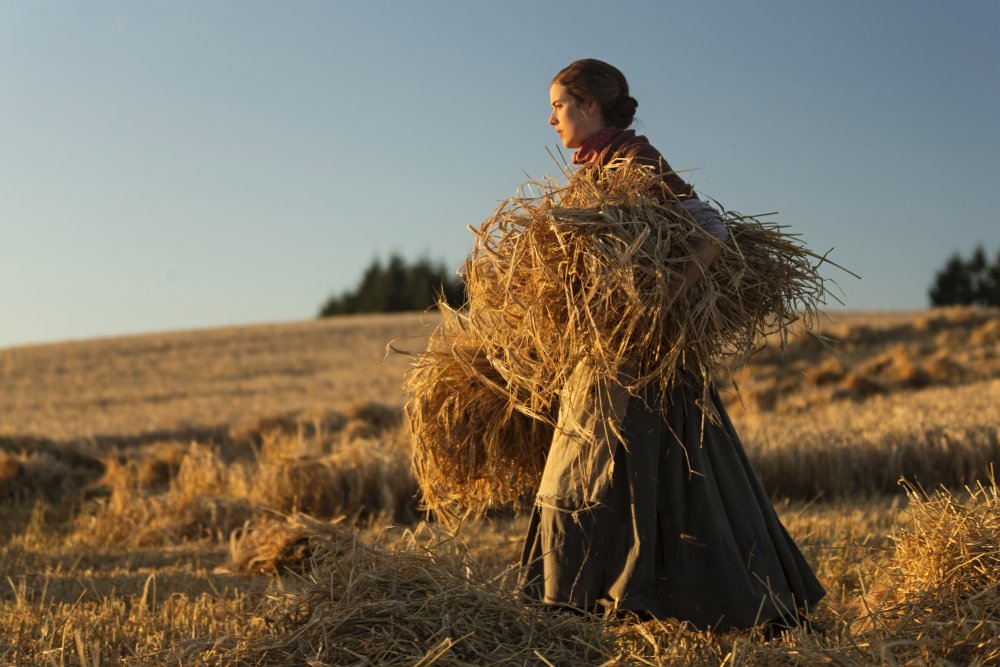
Sunset Song (2015)
Sunset Song
More linear than his previous works, this latest from Terence Davies nevertheless remains wholly identifiable as the filmmaker’s passion project. One of the festival’s most emotional viewing experiences, Davies finds moments of untold lyricism in his cyclical narrative patterns. Landscapes shot in 65mm, and a door opening onto a snowy wedding night are among the year’s most indelible images.
LFF top fives
Here’s Lou Thomas weighing in with his festival favourites…
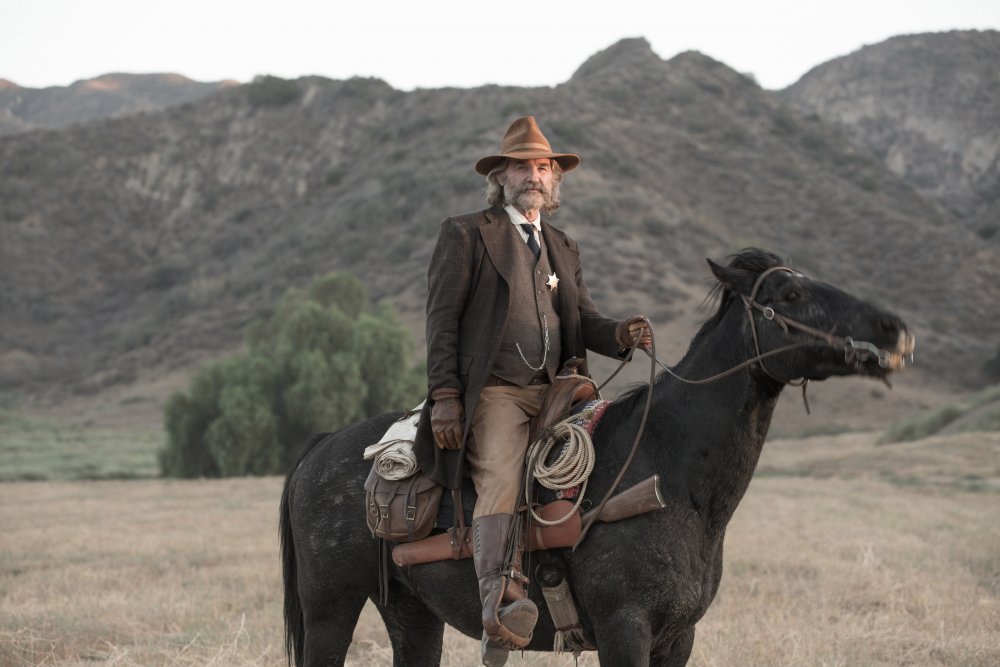
Bone Tomahawk (2015)
5. Bone Tomahawk
Gruesome but consistently hilarious horror-tinged western for those with a strong stomach. Great to see Kurt Russell firing on all cylinders again.
4. Grandma
Lily Tomlin excels in this heartfelt and funny tale of a septuagenarian lesbian on a mission to help her pregnant granddaughter.
3. Black Mass
Ice-cold Boston-set gangster movie featuring Johnny Depp’s best performance since Donnie Brasco.
2. Carol
A beautiful, moving love story with stunning turns from Rooney Mara and Cate Blanchett. Certain to be a big winner come awards season.
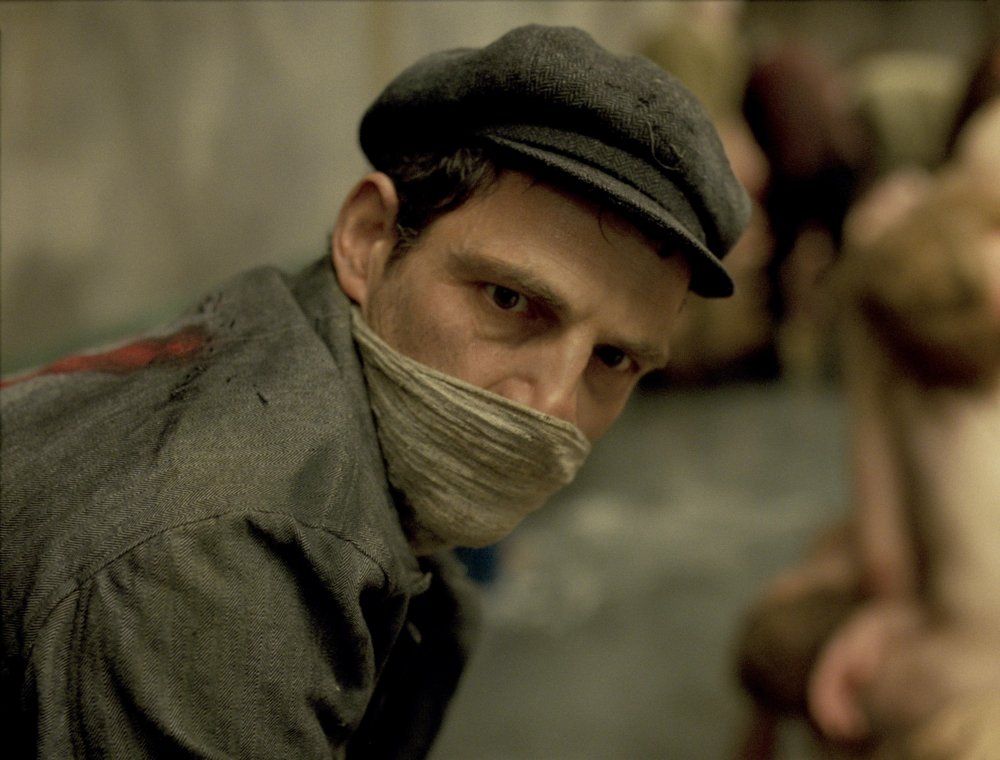
Son of Saul (Saul Fia, 2015)
1. Son of Saul
A gruelling masterpiece from debut director László Nemes that should be seen by everyone.
That's a wrap
And so, dear readers, that’s it for another year. We hope you’ve enjoyed our coverage of the festival.
We’ll leave you with some footage of Danny Boyle introducing the cast and crew of Steve Jobs at last night’s Closing Night Gala.



